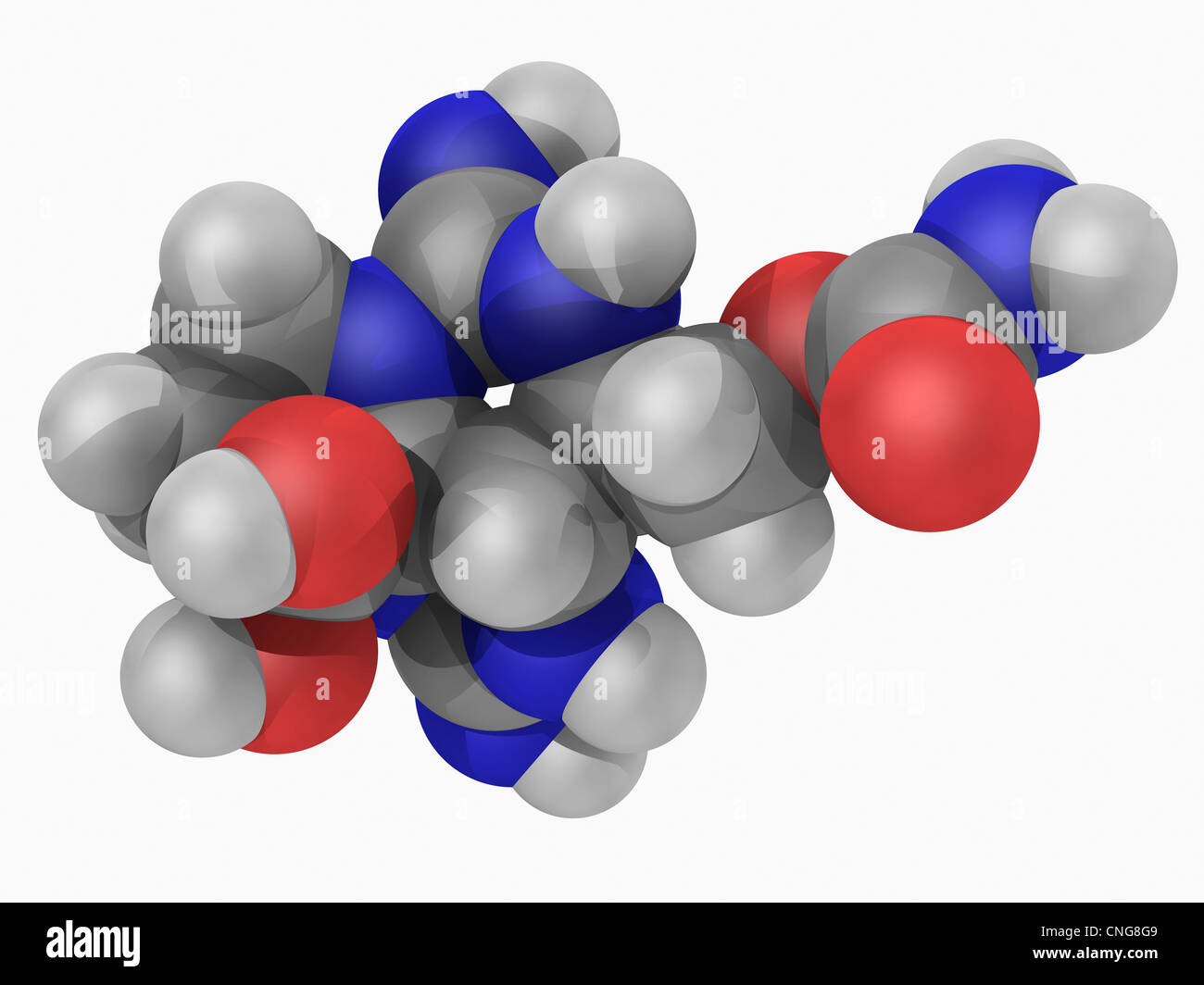Dinoflagellate or dinoflagellates Stock Photos and Images
(705)See dinoflagellate or dinoflagellates stock video clipsQuick filters:
Dinoflagellate or dinoflagellates Stock Photos and Images
 Dinoflagellate model, Ceratocorys horrida, magnified 1,000 times Stock Photohttps://www.alamy.com/image-license-details/?v=1https://www.alamy.com/stock-photo-dinoflagellate-model-ceratocorys-horrida-magnified-1000-times-27213201.html
Dinoflagellate model, Ceratocorys horrida, magnified 1,000 times Stock Photohttps://www.alamy.com/image-license-details/?v=1https://www.alamy.com/stock-photo-dinoflagellate-model-ceratocorys-horrida-magnified-1000-times-27213201.htmlRMBG7JM1–Dinoflagellate model, Ceratocorys horrida, magnified 1,000 times
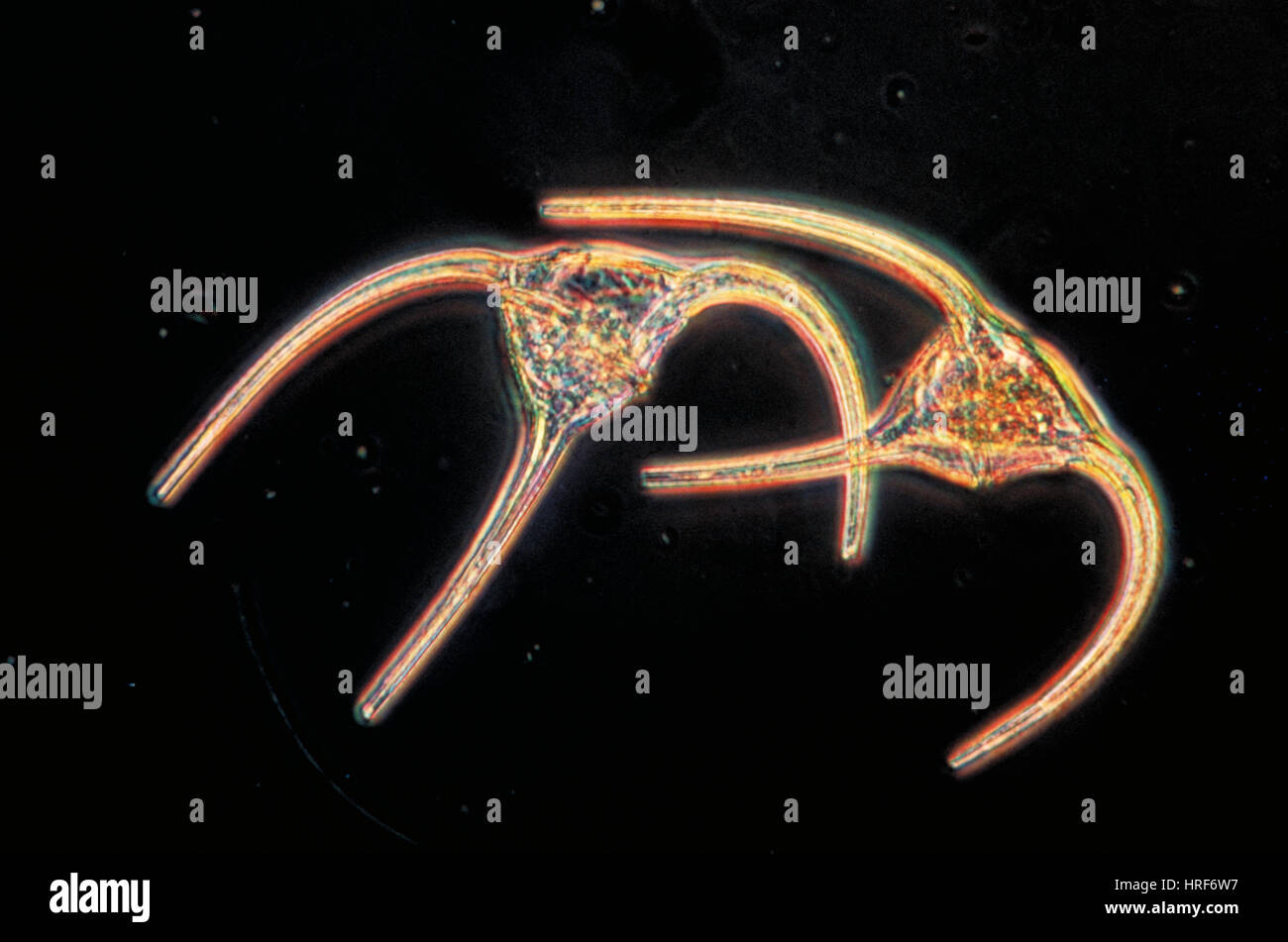 Dinoflagellate Stock Photohttps://www.alamy.com/image-license-details/?v=1https://www.alamy.com/stock-photo-dinoflagellate-134944355.html
Dinoflagellate Stock Photohttps://www.alamy.com/image-license-details/?v=1https://www.alamy.com/stock-photo-dinoflagellate-134944355.htmlRMHRF6W7–Dinoflagellate
 Illustration of a floating radiolaria (pink) and dinoflagellate (green). Radiolarians are found as zooplankton in oceans and have a symbiotic relationship with dinoflagellates. Stock Photohttps://www.alamy.com/image-license-details/?v=1https://www.alamy.com/illustration-of-a-floating-radiolaria-pink-and-dinoflagellate-green-radiolarians-are-found-as-zooplankton-in-oceans-and-have-a-symbiotic-relationship-with-dinoflagellates-image608275308.html
Illustration of a floating radiolaria (pink) and dinoflagellate (green). Radiolarians are found as zooplankton in oceans and have a symbiotic relationship with dinoflagellates. Stock Photohttps://www.alamy.com/image-license-details/?v=1https://www.alamy.com/illustration-of-a-floating-radiolaria-pink-and-dinoflagellate-green-radiolarians-are-found-as-zooplankton-in-oceans-and-have-a-symbiotic-relationship-with-dinoflagellates-image608275308.htmlRF2X9H9A4–Illustration of a floating radiolaria (pink) and dinoflagellate (green). Radiolarians are found as zooplankton in oceans and have a symbiotic relationship with dinoflagellates.
 Ernst Haeckel, Dinoflagellates Stock Photohttps://www.alamy.com/image-license-details/?v=1https://www.alamy.com/ernst-haeckel-dinoflagellates-image352785352.html
Ernst Haeckel, Dinoflagellates Stock Photohttps://www.alamy.com/image-license-details/?v=1https://www.alamy.com/ernst-haeckel-dinoflagellates-image352785352.htmlRM2BDXN8T–Ernst Haeckel, Dinoflagellates
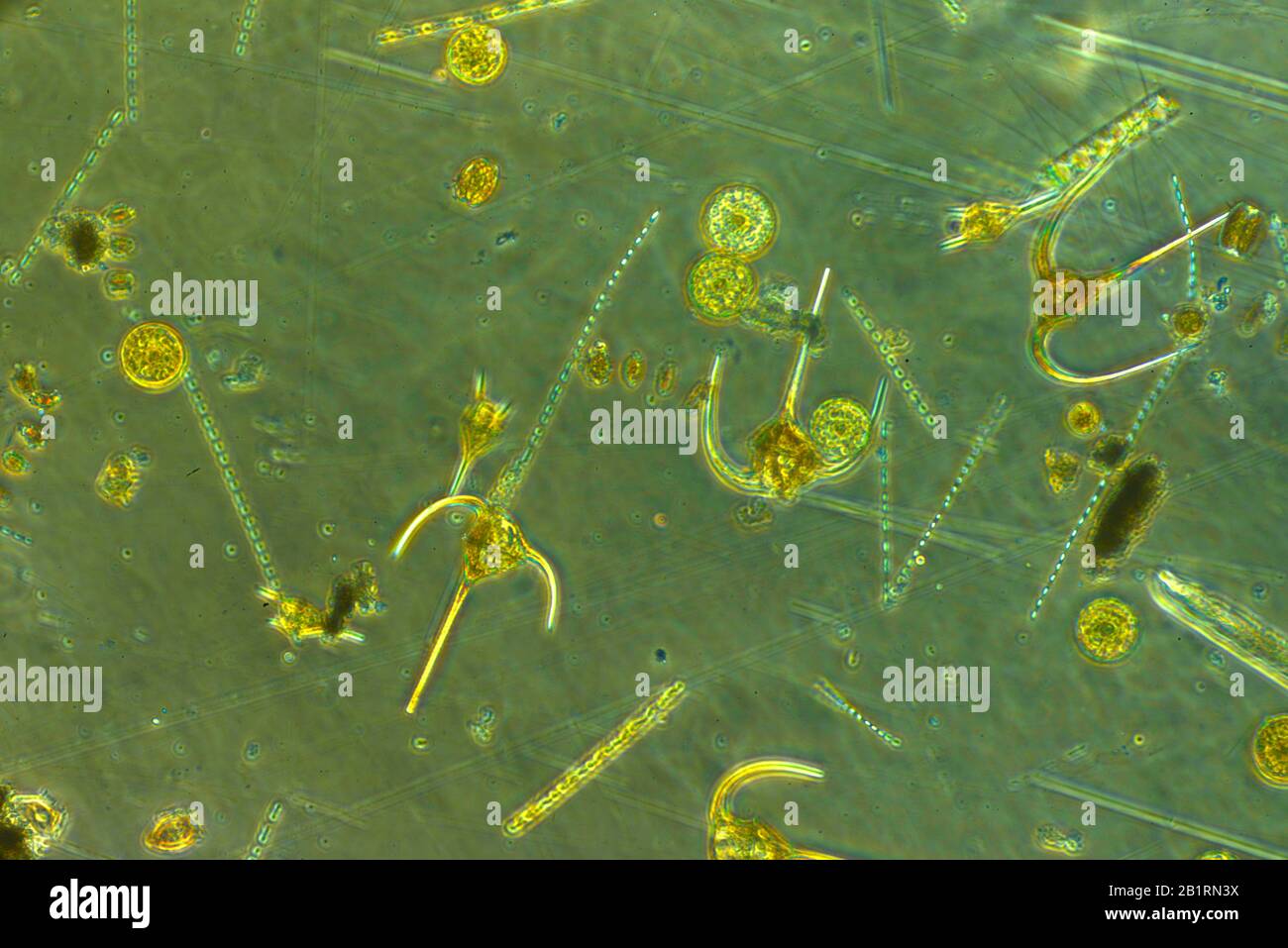 dinoflagellate ,bioluminescence, Dinoflagellates, flagellum, protista, .flagellate eukaryotes, Dinoflagellata, marine, plankton, photosynthetic, mi Stock Photohttps://www.alamy.com/image-license-details/?v=1https://www.alamy.com/dinoflagellate-bioluminescence-dinoflagellates-flagellum-protista-flagellate-eukaryotes-dinoflagellata-marine-plankton-photosynthetic-mi-image345343486.html
dinoflagellate ,bioluminescence, Dinoflagellates, flagellum, protista, .flagellate eukaryotes, Dinoflagellata, marine, plankton, photosynthetic, mi Stock Photohttps://www.alamy.com/image-license-details/?v=1https://www.alamy.com/dinoflagellate-bioluminescence-dinoflagellates-flagellum-protista-flagellate-eukaryotes-dinoflagellata-marine-plankton-photosynthetic-mi-image345343486.htmlRF2B1RN3X–dinoflagellate ,bioluminescence, Dinoflagellates, flagellum, protista, .flagellate eukaryotes, Dinoflagellata, marine, plankton, photosynthetic, mi
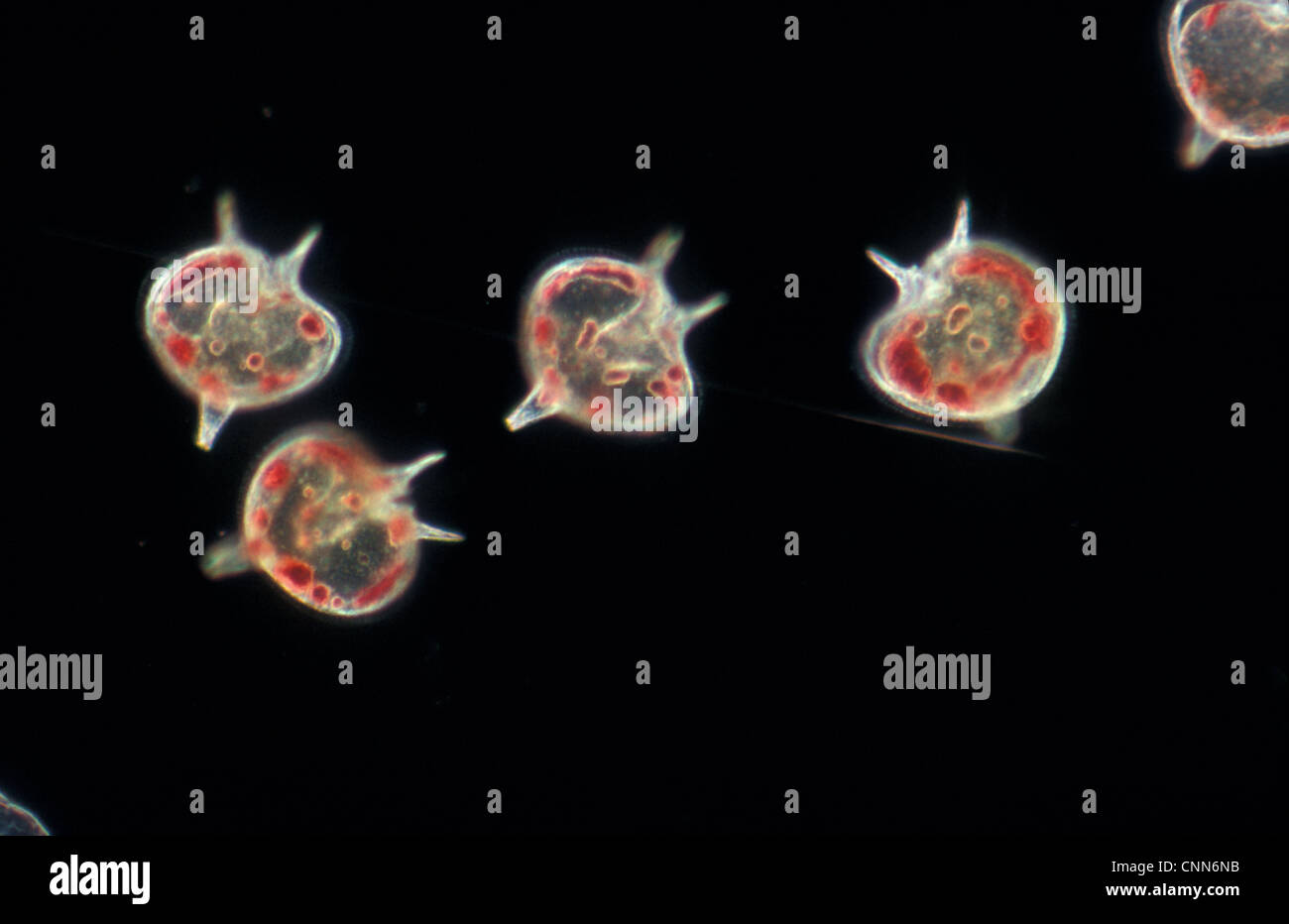 Plankton - Dinoflagellate (Peridinium depressum) x 43 Stock Photohttps://www.alamy.com/image-license-details/?v=1https://www.alamy.com/stock-photo-plankton-dinoflagellate-peridinium-depressum-x-43-47794807.html
Plankton - Dinoflagellate (Peridinium depressum) x 43 Stock Photohttps://www.alamy.com/image-license-details/?v=1https://www.alamy.com/stock-photo-plankton-dinoflagellate-peridinium-depressum-x-43-47794807.htmlRMCNN6NB–Plankton - Dinoflagellate (Peridinium depressum) x 43
 zoology / animals, dinoflagellates (Dinoflagellata), colour lithograph, out of: Ernst Haeckel, 'Kunstformen der Natur', Leipzig - Vienna, 1899 - 1904, Additional-Rights-Clearences-Not Available Stock Photohttps://www.alamy.com/image-license-details/?v=1https://www.alamy.com/stock-photo-zoology-animals-dinoflagellates-dinoflagellata-colour-lithograph-out-106911969.html
zoology / animals, dinoflagellates (Dinoflagellata), colour lithograph, out of: Ernst Haeckel, 'Kunstformen der Natur', Leipzig - Vienna, 1899 - 1904, Additional-Rights-Clearences-Not Available Stock Photohttps://www.alamy.com/image-license-details/?v=1https://www.alamy.com/stock-photo-zoology-animals-dinoflagellates-dinoflagellata-colour-lithograph-out-106911969.htmlRMG5X78H–zoology / animals, dinoflagellates (Dinoflagellata), colour lithograph, out of: Ernst Haeckel, 'Kunstformen der Natur', Leipzig - Vienna, 1899 - 1904, Additional-Rights-Clearences-Not Available
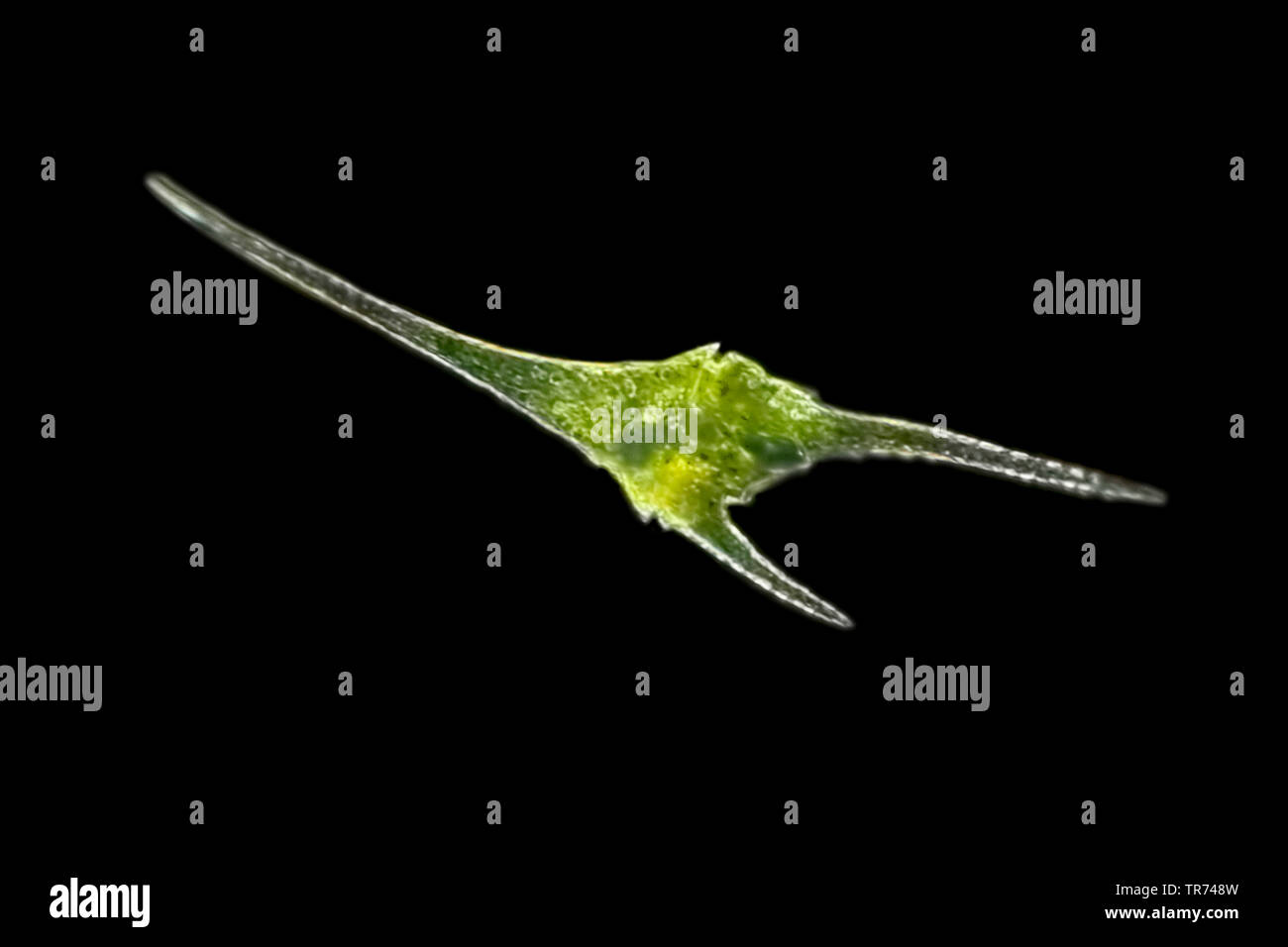 dinoflagellate in dark field, x 140, Germany Stock Photohttps://www.alamy.com/image-license-details/?v=1https://www.alamy.com/dinoflagellate-in-dark-field-x-140-germany-image255239289.html
dinoflagellate in dark field, x 140, Germany Stock Photohttps://www.alamy.com/image-license-details/?v=1https://www.alamy.com/dinoflagellate-in-dark-field-x-140-germany-image255239289.htmlRMTR748W–dinoflagellate in dark field, x 140, Germany
 Dinophysis allieri, Print, Dinophysis is a genus of dinoflagellates common in tropical, temperate, coastal and oceanic waters. It was first described in 1839 by Christian Gottfried Ehrenberg Stock Photohttps://www.alamy.com/image-license-details/?v=1https://www.alamy.com/dinophysis-allieri-print-dinophysis-is-a-genus-of-dinoflagellates-common-in-tropical-temperate-coastal-and-oceanic-waters-it-was-first-described-in-1839-by-christian-gottfried-ehrenberg-image328677977.html
Dinophysis allieri, Print, Dinophysis is a genus of dinoflagellates common in tropical, temperate, coastal and oceanic waters. It was first described in 1839 by Christian Gottfried Ehrenberg Stock Photohttps://www.alamy.com/image-license-details/?v=1https://www.alamy.com/dinophysis-allieri-print-dinophysis-is-a-genus-of-dinoflagellates-common-in-tropical-temperate-coastal-and-oceanic-waters-it-was-first-described-in-1839-by-christian-gottfried-ehrenberg-image328677977.htmlRM2A2MG35–Dinophysis allieri, Print, Dinophysis is a genus of dinoflagellates common in tropical, temperate, coastal and oceanic waters. It was first described in 1839 by Christian Gottfried Ehrenberg
 The planktonic dinoflagellate Ceratium hirudinalla Living Anoptral Contrast Flash Stock Photohttps://www.alamy.com/image-license-details/?v=1https://www.alamy.com/the-planktonic-dinoflagellate-ceratium-hirudinalla-living-anoptral-image744127.html
The planktonic dinoflagellate Ceratium hirudinalla Living Anoptral Contrast Flash Stock Photohttps://www.alamy.com/image-license-details/?v=1https://www.alamy.com/the-planktonic-dinoflagellate-ceratium-hirudinalla-living-anoptral-image744127.htmlRMAB5ABF–The planktonic dinoflagellate Ceratium hirudinalla Living Anoptral Contrast Flash
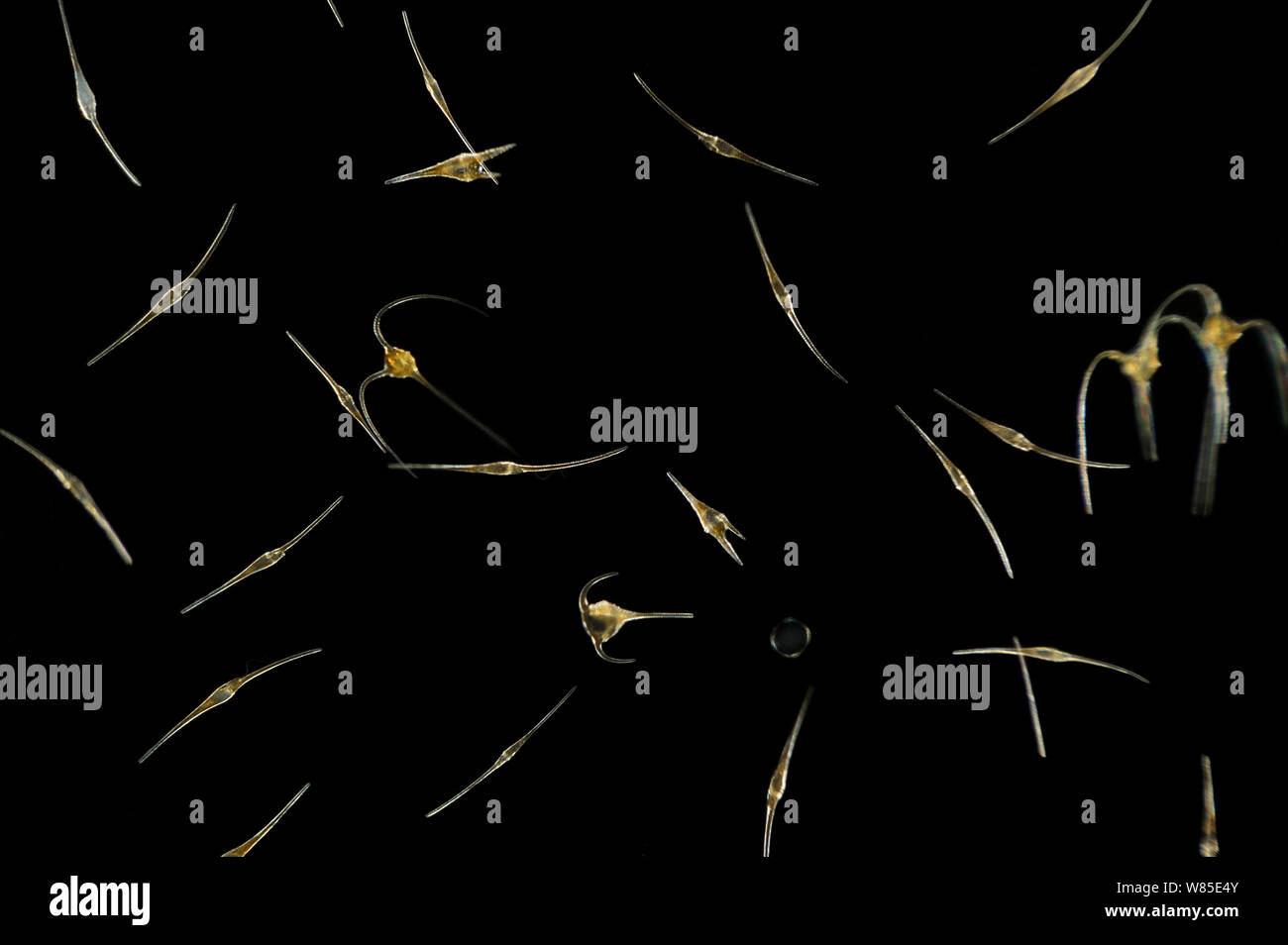 Planktonic dinoflagellates (Ceratium) from the North Sea, captive. Stock Photohttps://www.alamy.com/image-license-details/?v=1https://www.alamy.com/planktonic-dinoflagellates-ceratium-from-the-north-sea-captive-image263193643.html
Planktonic dinoflagellates (Ceratium) from the North Sea, captive. Stock Photohttps://www.alamy.com/image-license-details/?v=1https://www.alamy.com/planktonic-dinoflagellates-ceratium-from-the-north-sea-captive-image263193643.htmlRMW85E4Y–Planktonic dinoflagellates (Ceratium) from the North Sea, captive.
 Planctonic dinoflagellates from the genus Ceratium Stock Photohttps://www.alamy.com/image-license-details/?v=1https://www.alamy.com/stock-photo-planctonic-dinoflagellates-from-the-genus-ceratium-47922191.html
Planctonic dinoflagellates from the genus Ceratium Stock Photohttps://www.alamy.com/image-license-details/?v=1https://www.alamy.com/stock-photo-planctonic-dinoflagellates-from-the-genus-ceratium-47922191.htmlRMCNY16R–Planctonic dinoflagellates from the genus Ceratium
 Dinoflagellates (Noctiluca miliaris) which cause glowing wakes of ships, captive. Stock Photohttps://www.alamy.com/image-license-details/?v=1https://www.alamy.com/dinoflagellates-noctiluca-miliaris-which-cause-glowing-wakes-of-ships-captive-image263193662.html
Dinoflagellates (Noctiluca miliaris) which cause glowing wakes of ships, captive. Stock Photohttps://www.alamy.com/image-license-details/?v=1https://www.alamy.com/dinoflagellates-noctiluca-miliaris-which-cause-glowing-wakes-of-ships-captive-image263193662.htmlRMW85E5J–Dinoflagellates (Noctiluca miliaris) which cause glowing wakes of ships, captive.
![planktonic dinoflagellates from the genus Ceratium [size of single organism: 0,1 mm] Stock Photo planktonic dinoflagellates from the genus Ceratium [size of single organism: 0,1 mm] Stock Photo](https://c8.alamy.com/comp/2C65YTF/planktonic-dinoflagellates-from-the-genus-ceratium-size-of-single-organism-01-mm-2C65YTF.jpg) planktonic dinoflagellates from the genus Ceratium [size of single organism: 0,1 mm] Stock Photohttps://www.alamy.com/image-license-details/?v=1https://www.alamy.com/planktonic-dinoflagellates-from-the-genus-ceratium-size-of-single-organism-01-mm-image365237279.html
planktonic dinoflagellates from the genus Ceratium [size of single organism: 0,1 mm] Stock Photohttps://www.alamy.com/image-license-details/?v=1https://www.alamy.com/planktonic-dinoflagellates-from-the-genus-ceratium-size-of-single-organism-01-mm-image365237279.htmlRM2C65YTF–planktonic dinoflagellates from the genus Ceratium [size of single organism: 0,1 mm]
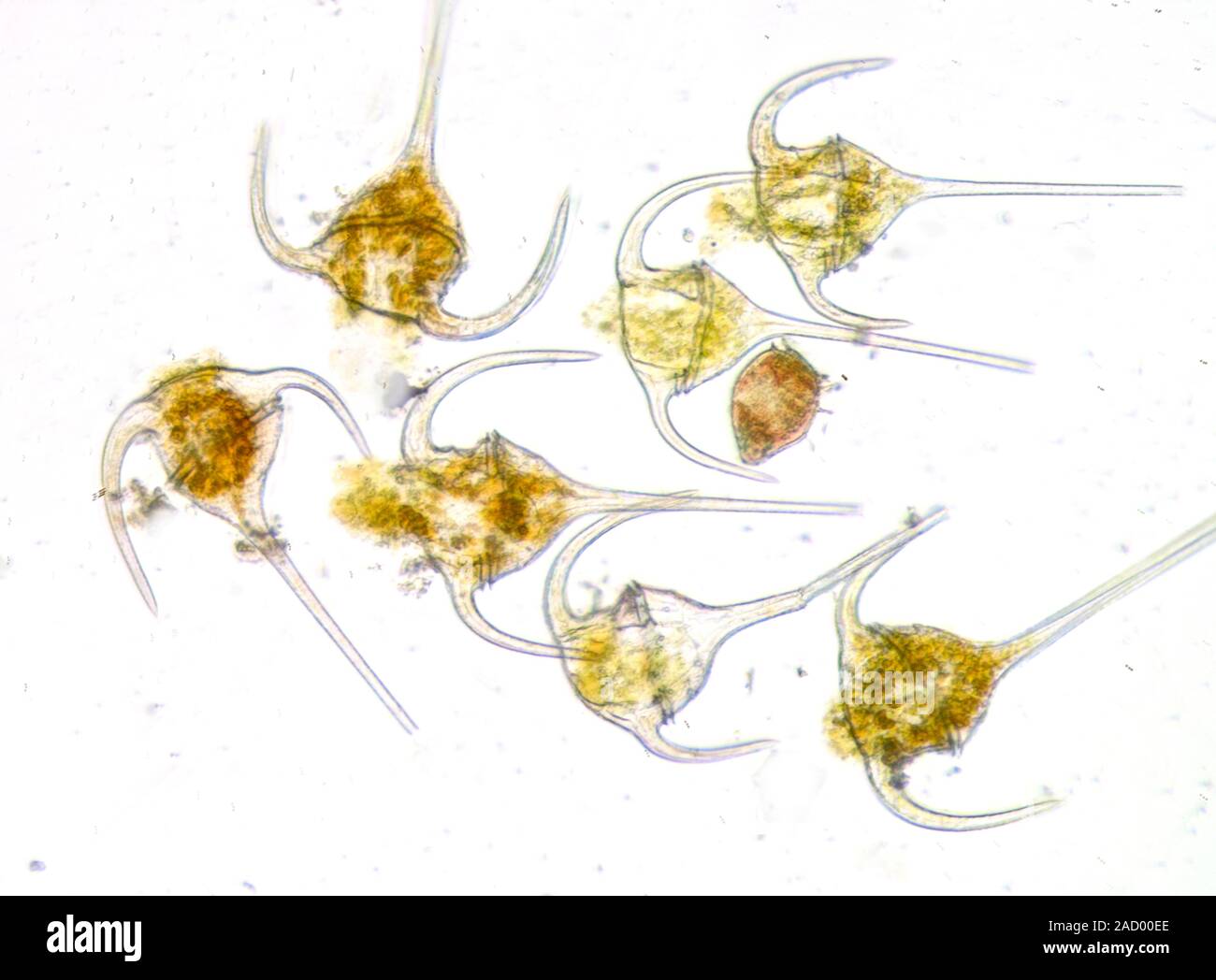 Dinoflagellates - Stock Photohttps://www.alamy.com/image-license-details/?v=1https://www.alamy.com/dinoflagellates-image334987926.html
Dinoflagellates - Stock Photohttps://www.alamy.com/image-license-details/?v=1https://www.alamy.com/dinoflagellates-image334987926.htmlRM2AD00EE–Dinoflagellates -
 Dinoflagellate, illustration. Stock Photohttps://www.alamy.com/image-license-details/?v=1https://www.alamy.com/stock-photo-dinoflagellate-illustration-147983703.html
Dinoflagellate, illustration. Stock Photohttps://www.alamy.com/image-license-details/?v=1https://www.alamy.com/stock-photo-dinoflagellate-illustration-147983703.htmlRFJGN6M7–Dinoflagellate, illustration.
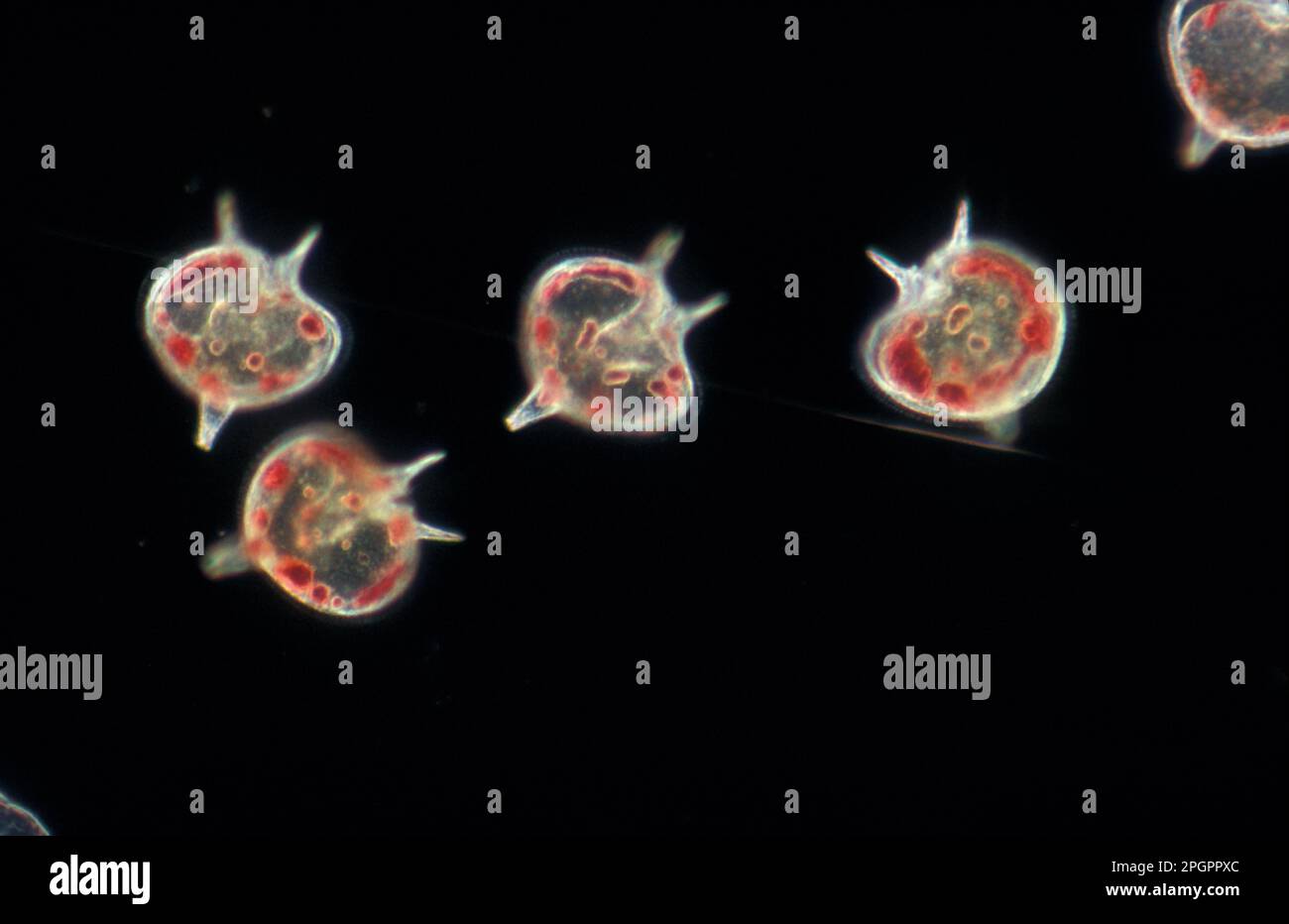 Dinoflagellates, Other animals, Animals, Plankton, Dinoflagellates (Peridinium depressum) x 43 Stock Photohttps://www.alamy.com/image-license-details/?v=1https://www.alamy.com/dinoflagellates-other-animals-animals-plankton-dinoflagellates-peridinium-depressum-x-43-image543856836.html
Dinoflagellates, Other animals, Animals, Plankton, Dinoflagellates (Peridinium depressum) x 43 Stock Photohttps://www.alamy.com/image-license-details/?v=1https://www.alamy.com/dinoflagellates-other-animals-animals-plankton-dinoflagellates-peridinium-depressum-x-43-image543856836.htmlRM2PGPPXC–Dinoflagellates, Other animals, Animals, Plankton, Dinoflagellates (Peridinium depressum) x 43
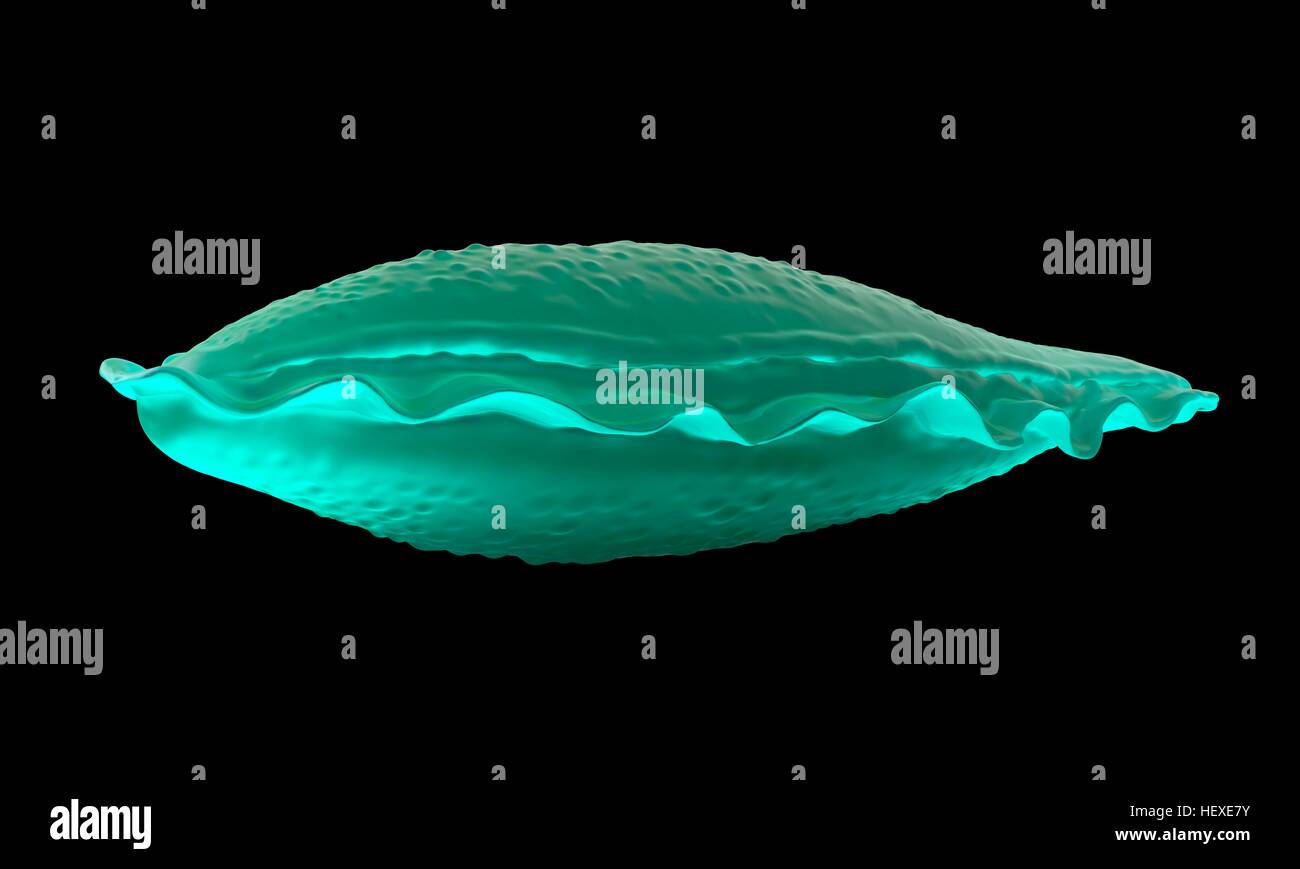 Pyrocystis fusiformis dinoflagellate, illustration. Stock Photohttps://www.alamy.com/image-license-details/?v=1https://www.alamy.com/stock-photo-pyrocystis-fusiformis-dinoflagellate-illustration-129659711.html
Pyrocystis fusiformis dinoflagellate, illustration. Stock Photohttps://www.alamy.com/image-license-details/?v=1https://www.alamy.com/stock-photo-pyrocystis-fusiformis-dinoflagellate-illustration-129659711.htmlRFHEXE7Y–Pyrocystis fusiformis dinoflagellate, illustration.
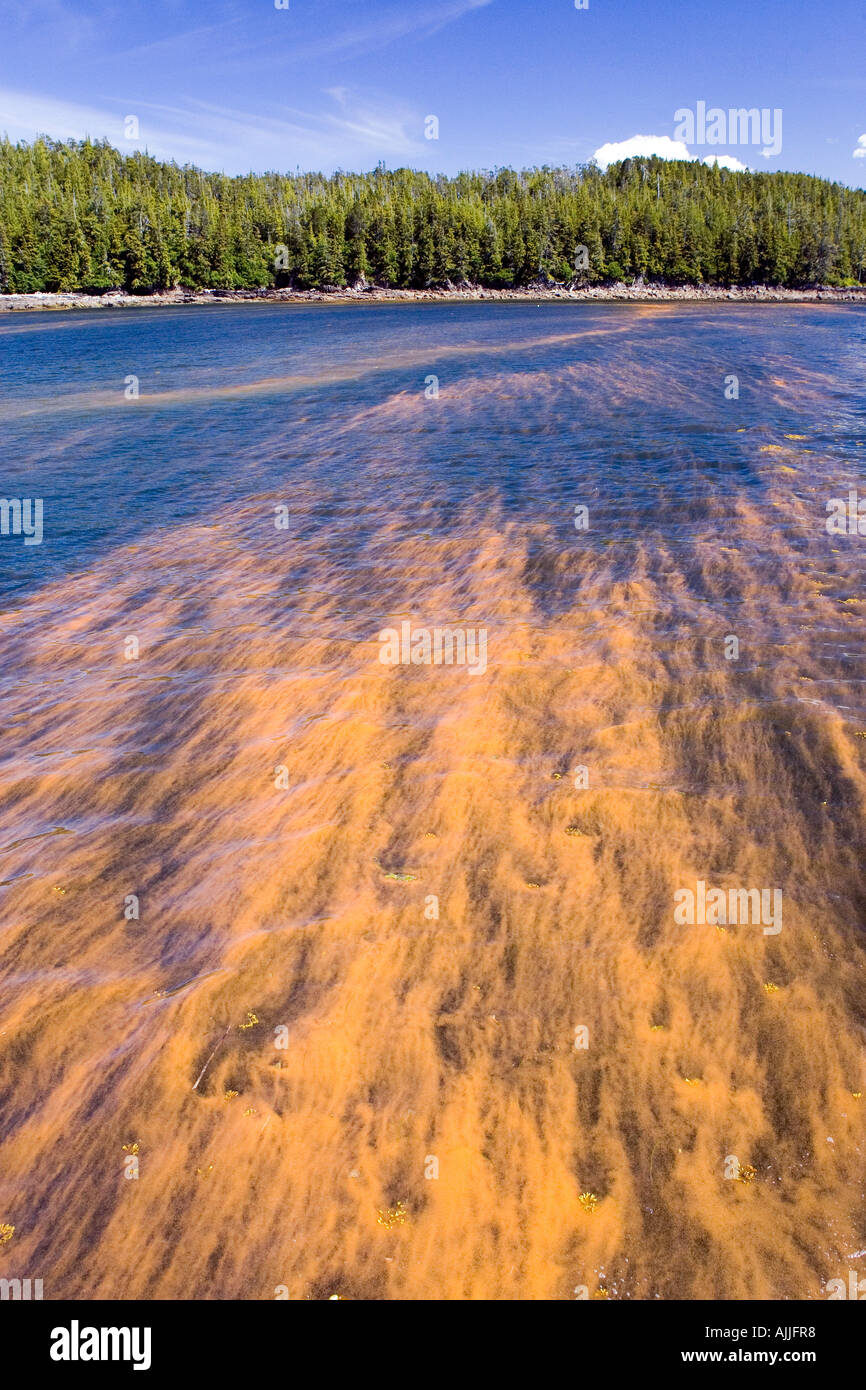 Dinoflagellates in the water cause a red tide color change in water Revillagigedo Channel SE AK Stock Photohttps://www.alamy.com/image-license-details/?v=1https://www.alamy.com/dinoflagellates-in-the-water-cause-a-red-tide-color-change-in-water-image8428983.html
Dinoflagellates in the water cause a red tide color change in water Revillagigedo Channel SE AK Stock Photohttps://www.alamy.com/image-license-details/?v=1https://www.alamy.com/dinoflagellates-in-the-water-cause-a-red-tide-color-change-in-water-image8428983.htmlRMAJJFR8–Dinoflagellates in the water cause a red tide color change in water Revillagigedo Channel SE AK
 This close-up picture of a giant clam (Tridacna gigas: 20 cms.) shows the coloured patterns formed by colonies of single-celled dinoflagellate symbiotic algae near the edge of the mollusc's mantle. The central elongated cavity serves as a means of circulating water inside the animal in the course of feeding on microplankton. Individuals of this species can grow to more than one metre in length, weigh up to 200 kilograms and live for over 100 years. Sadly, it is becoming rarer as its meat is highly prized by humans; it is listed by the IUCN as vulnerable. Photographed in the Egyptian Red Sea. Stock Photohttps://www.alamy.com/image-license-details/?v=1https://www.alamy.com/stock-photo-this-close-up-picture-of-a-giant-clam-tridacna-gigas-20-cms-shows-175070491.html
This close-up picture of a giant clam (Tridacna gigas: 20 cms.) shows the coloured patterns formed by colonies of single-celled dinoflagellate symbiotic algae near the edge of the mollusc's mantle. The central elongated cavity serves as a means of circulating water inside the animal in the course of feeding on microplankton. Individuals of this species can grow to more than one metre in length, weigh up to 200 kilograms and live for over 100 years. Sadly, it is becoming rarer as its meat is highly prized by humans; it is listed by the IUCN as vulnerable. Photographed in the Egyptian Red Sea. Stock Photohttps://www.alamy.com/image-license-details/?v=1https://www.alamy.com/stock-photo-this-close-up-picture-of-a-giant-clam-tridacna-gigas-20-cms-shows-175070491.htmlRFM4R45F–This close-up picture of a giant clam (Tridacna gigas: 20 cms.) shows the coloured patterns formed by colonies of single-celled dinoflagellate symbiotic algae near the edge of the mollusc's mantle. The central elongated cavity serves as a means of circulating water inside the animal in the course of feeding on microplankton. Individuals of this species can grow to more than one metre in length, weigh up to 200 kilograms and live for over 100 years. Sadly, it is becoming rarer as its meat is highly prized by humans; it is listed by the IUCN as vulnerable. Photographed in the Egyptian Red Sea.
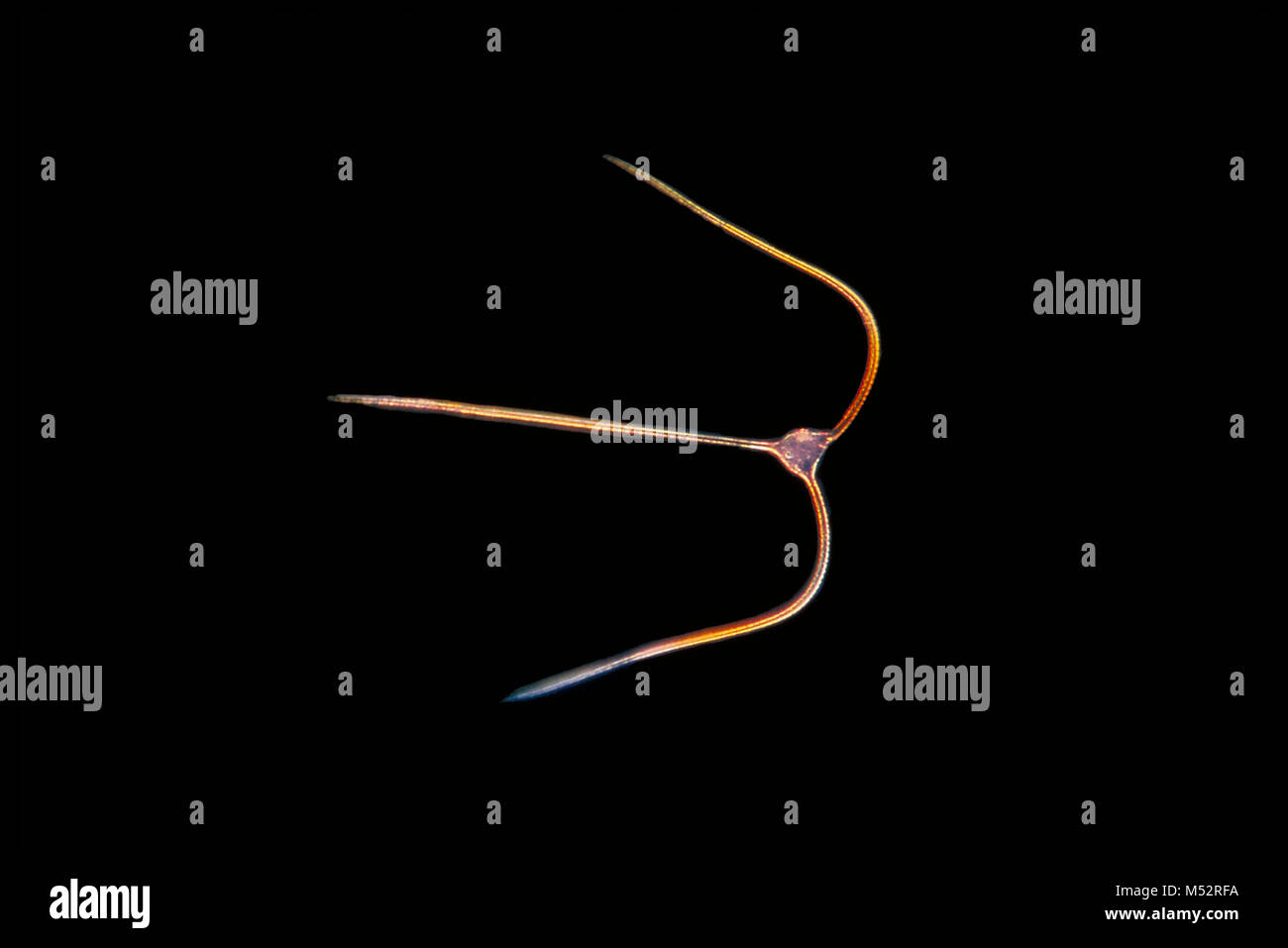 Dinoflagellate, causes 'red tide', magnified 100X Stock Photohttps://www.alamy.com/image-license-details/?v=1https://www.alamy.com/stock-photo-dinoflagellate-causes-red-tide-magnified-100x-175239326.html
Dinoflagellate, causes 'red tide', magnified 100X Stock Photohttps://www.alamy.com/image-license-details/?v=1https://www.alamy.com/stock-photo-dinoflagellate-causes-red-tide-magnified-100x-175239326.htmlRMM52RFA–Dinoflagellate, causes 'red tide', magnified 100X
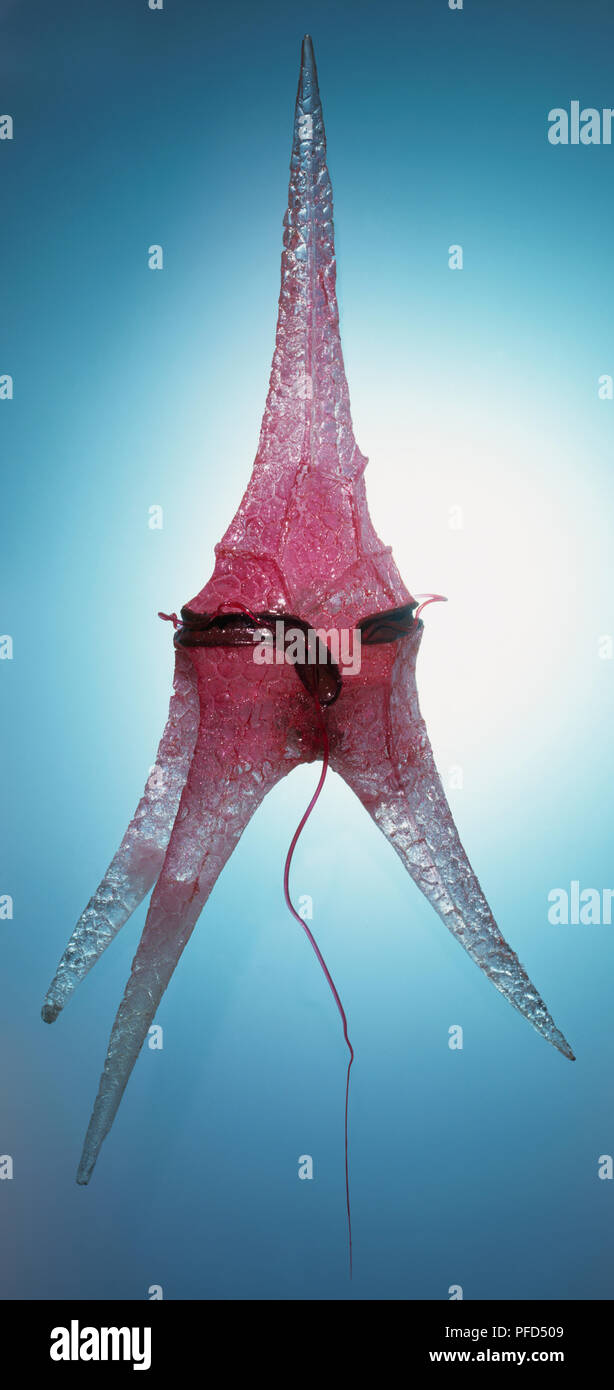 Model of Ceratium Stock Photohttps://www.alamy.com/image-license-details/?v=1https://www.alamy.com/model-of-ceratium-image216033561.html
Model of Ceratium Stock Photohttps://www.alamy.com/image-license-details/?v=1https://www.alamy.com/model-of-ceratium-image216033561.htmlRMPFD509–Model of Ceratium
 Ernst Haeckel, Dinoflagellates Stock Photohttps://www.alamy.com/image-license-details/?v=1https://www.alamy.com/ernst-haeckel-dinoflagellates-image352785335.html
Ernst Haeckel, Dinoflagellates Stock Photohttps://www.alamy.com/image-license-details/?v=1https://www.alamy.com/ernst-haeckel-dinoflagellates-image352785335.htmlRM2BDXN87–Ernst Haeckel, Dinoflagellates
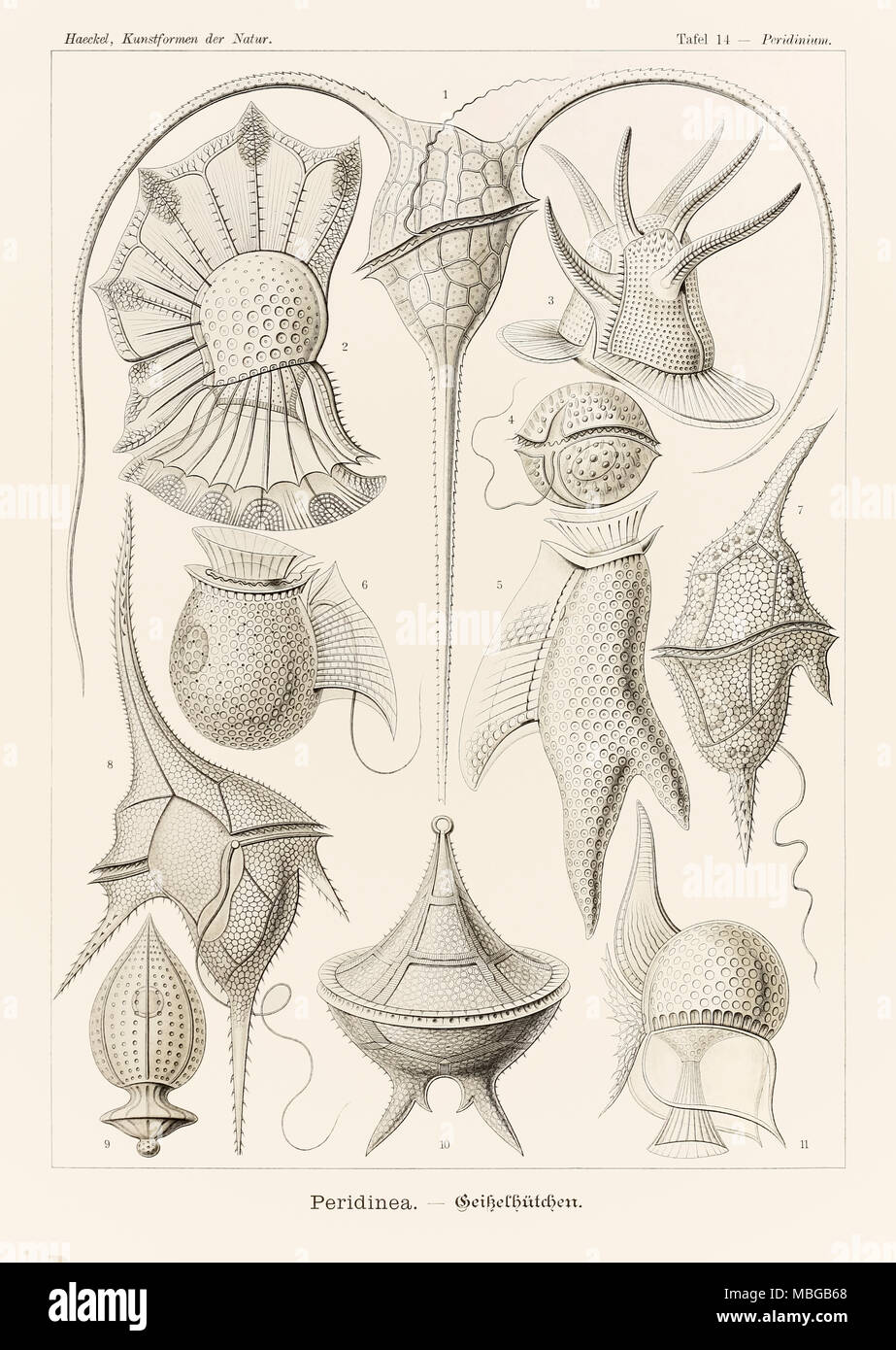 Plate 14 Peridinium Peridinea from ‘Kunstformen der Natur’ (Art Forms in Nature) illustrated by Ernst Haeckel (1834-1919). See more information below. Stock Photohttps://www.alamy.com/image-license-details/?v=1https://www.alamy.com/plate-14-peridinium-peridinea-from-kunstformen-der-natur-art-forms-in-nature-illustrated-by-ernst-haeckel-1834-1919-see-more-information-below-image179224928.html
Plate 14 Peridinium Peridinea from ‘Kunstformen der Natur’ (Art Forms in Nature) illustrated by Ernst Haeckel (1834-1919). See more information below. Stock Photohttps://www.alamy.com/image-license-details/?v=1https://www.alamy.com/plate-14-peridinium-peridinea-from-kunstformen-der-natur-art-forms-in-nature-illustrated-by-ernst-haeckel-1834-1919-see-more-information-below-image179224928.htmlRMMBGB68–Plate 14 Peridinium Peridinea from ‘Kunstformen der Natur’ (Art Forms in Nature) illustrated by Ernst Haeckel (1834-1919). See more information below.
 WASHINGTON DC, United States — The Sant Ocean Hall features dramatically enlarged models of microscopic marine organisms, including a radiolarian (Didimocyrtis tetrathalamus) magnified 3400 times from its actual size of 0.06 mm, and a dinoflagellate (Ceratocorys horrida) magnified 1000 times from its natural size of 0.15 mm. These models, based on scanning electron microscopy, reveal the intricate structures of oceanic microorganisms. Stock Photohttps://www.alamy.com/image-license-details/?v=1https://www.alamy.com/washington-dc-united-states-the-sant-ocean-hall-features-dramatically-enlarged-models-of-microscopic-marine-organisms-including-a-radiolarian-didimocyrtis-tetrathalamus-magnified-3400-times-from-its-actual-size-of-006-mm-and-a-dinoflagellate-ceratocorys-horrida-magnified-1000-times-from-its-natural-size-of-015-mm-these-models-based-on-scanning-electron-microscopy-reveal-the-intricate-structures-of-oceanic-microorganisms-image627106006.html
WASHINGTON DC, United States — The Sant Ocean Hall features dramatically enlarged models of microscopic marine organisms, including a radiolarian (Didimocyrtis tetrathalamus) magnified 3400 times from its actual size of 0.06 mm, and a dinoflagellate (Ceratocorys horrida) magnified 1000 times from its natural size of 0.15 mm. These models, based on scanning electron microscopy, reveal the intricate structures of oceanic microorganisms. Stock Photohttps://www.alamy.com/image-license-details/?v=1https://www.alamy.com/washington-dc-united-states-the-sant-ocean-hall-features-dramatically-enlarged-models-of-microscopic-marine-organisms-including-a-radiolarian-didimocyrtis-tetrathalamus-magnified-3400-times-from-its-actual-size-of-006-mm-and-a-dinoflagellate-ceratocorys-horrida-magnified-1000-times-from-its-natural-size-of-015-mm-these-models-based-on-scanning-electron-microscopy-reveal-the-intricate-structures-of-oceanic-microorganisms-image627106006.htmlRM2YC7432–WASHINGTON DC, United States — The Sant Ocean Hall features dramatically enlarged models of microscopic marine organisms, including a radiolarian (Didimocyrtis tetrathalamus) magnified 3400 times from its actual size of 0.06 mm, and a dinoflagellate (Ceratocorys horrida) magnified 1000 times from its natural size of 0.15 mm. These models, based on scanning electron microscopy, reveal the intricate structures of oceanic microorganisms.
 Bioluminescence by dinoflagellates disturbed by waves off Ruby Beach in Olympic National Park, Washington State, USA Stock Photohttps://www.alamy.com/image-license-details/?v=1https://www.alamy.com/bioluminescence-by-dinoflagellates-disturbed-by-waves-off-ruby-beach-in-olympic-national-park-washington-state-usa-image562647291.html
Bioluminescence by dinoflagellates disturbed by waves off Ruby Beach in Olympic National Park, Washington State, USA Stock Photohttps://www.alamy.com/image-license-details/?v=1https://www.alamy.com/bioluminescence-by-dinoflagellates-disturbed-by-waves-off-ruby-beach-in-olympic-national-park-washington-state-usa-image562647291.htmlRF2RKAPA3–Bioluminescence by dinoflagellates disturbed by waves off Ruby Beach in Olympic National Park, Washington State, USA
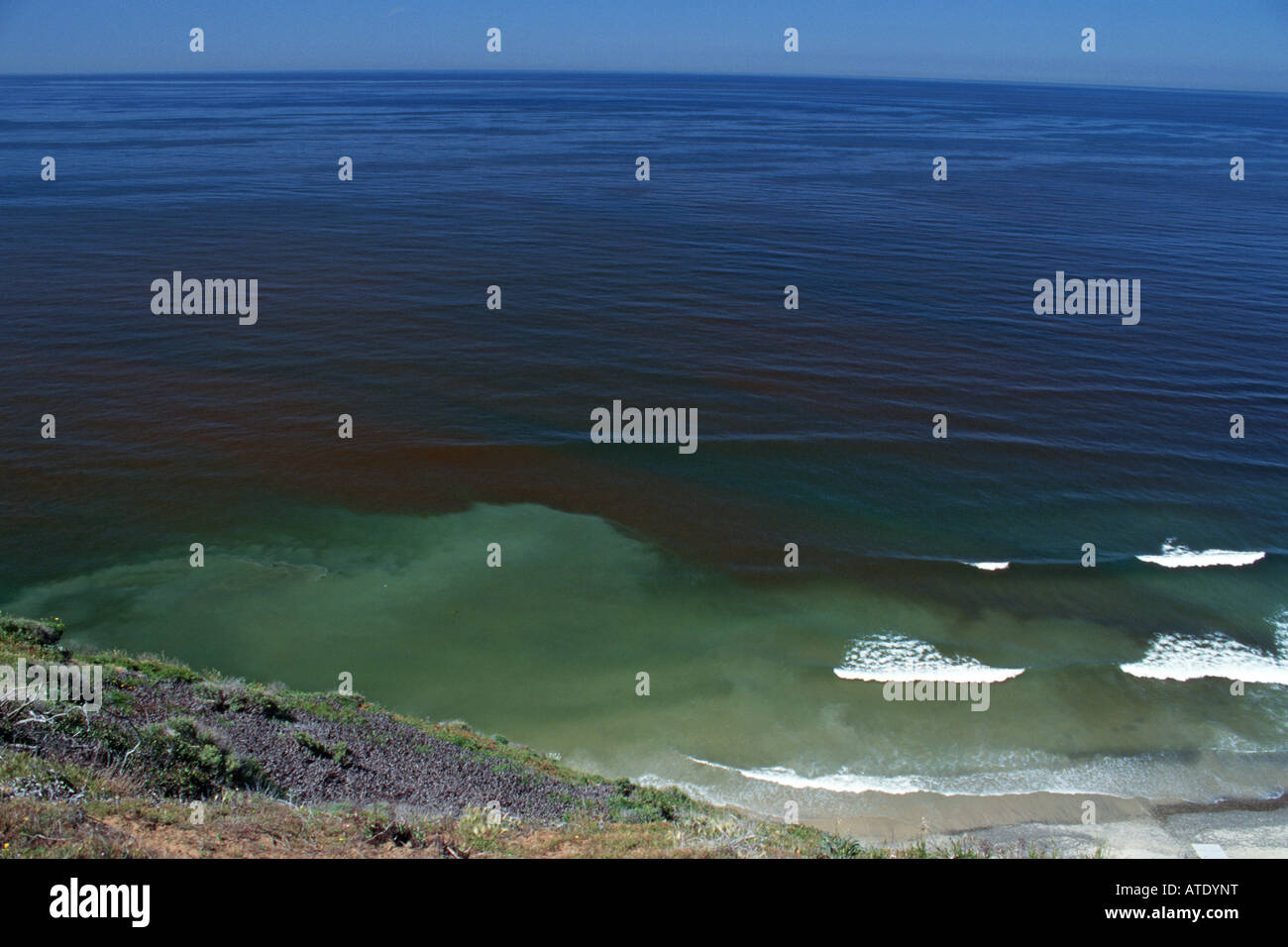 Red Tide, California Pacific Ocean Stock Photohttps://www.alamy.com/image-license-details/?v=1https://www.alamy.com/stock-photo-red-tide-california-pacific-ocean-16288307.html
Red Tide, California Pacific Ocean Stock Photohttps://www.alamy.com/image-license-details/?v=1https://www.alamy.com/stock-photo-red-tide-california-pacific-ocean-16288307.htmlRMATDYNT–Red Tide, California Pacific Ocean
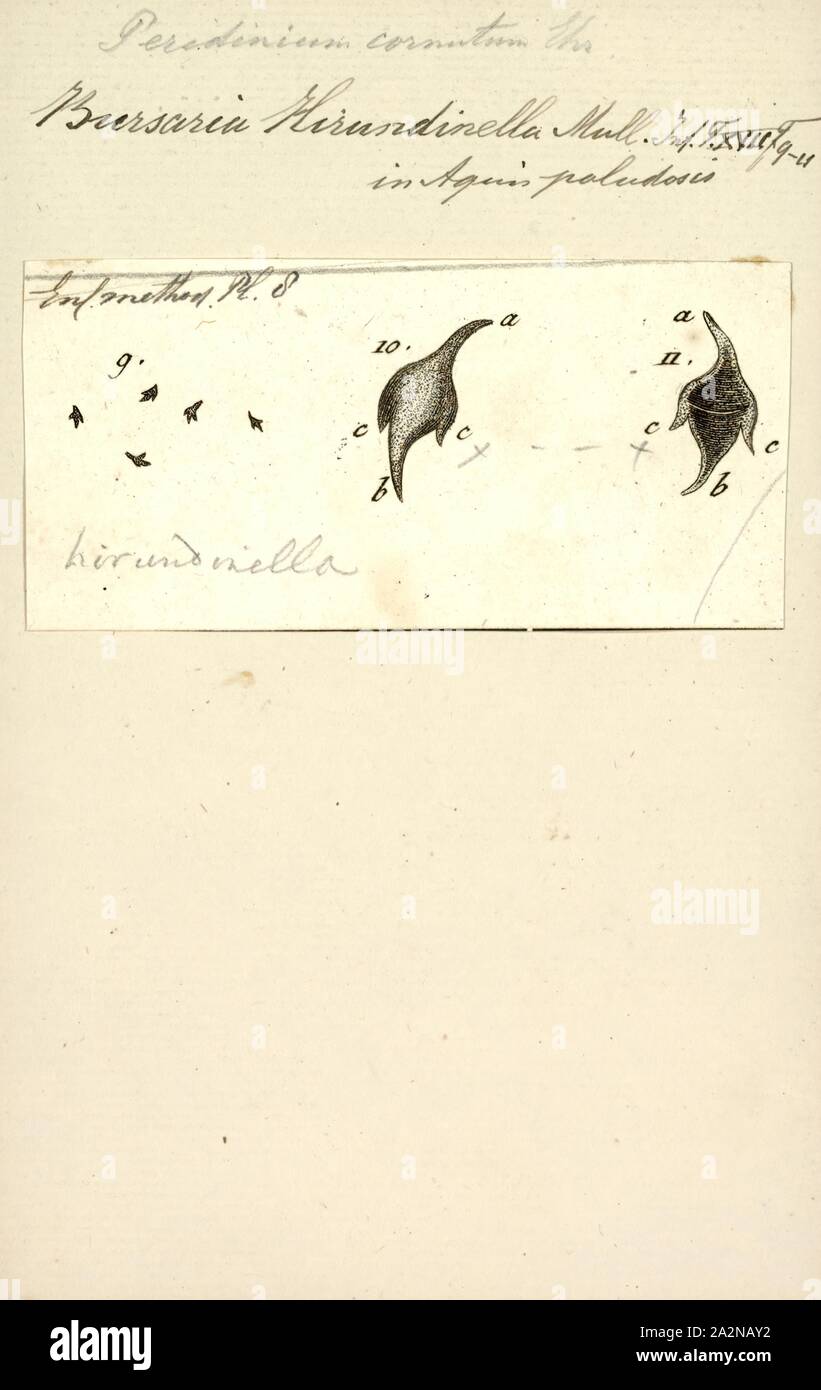 Peridinium cornutum, Print, Peridinium is a genus of motile, marine and freshwater dinoflagellates.Their morphology is considered typical of the armoured dinoflagellates, and their form is commonly used in diagrams of a dinoflagellate's structure. Peridinium can range from 30-70 μm in diameter, and has very thick thecal plates Stock Photohttps://www.alamy.com/image-license-details/?v=1https://www.alamy.com/peridinium-cornutum-print-peridinium-is-a-genus-of-motile-marine-and-freshwater-dinoflagellatestheir-morphology-is-considered-typical-of-the-armoured-dinoflagellates-and-their-form-is-commonly-used-in-diagrams-of-a-dinoflagellates-structure-peridinium-can-range-from-30-70-m-in-diameter-and-has-very-thick-thecal-plates-image328695894.html
Peridinium cornutum, Print, Peridinium is a genus of motile, marine and freshwater dinoflagellates.Their morphology is considered typical of the armoured dinoflagellates, and their form is commonly used in diagrams of a dinoflagellate's structure. Peridinium can range from 30-70 μm in diameter, and has very thick thecal plates Stock Photohttps://www.alamy.com/image-license-details/?v=1https://www.alamy.com/peridinium-cornutum-print-peridinium-is-a-genus-of-motile-marine-and-freshwater-dinoflagellatestheir-morphology-is-considered-typical-of-the-armoured-dinoflagellates-and-their-form-is-commonly-used-in-diagrams-of-a-dinoflagellates-structure-peridinium-can-range-from-30-70-m-in-diameter-and-has-very-thick-thecal-plates-image328695894.htmlRM2A2NAY2–Peridinium cornutum, Print, Peridinium is a genus of motile, marine and freshwater dinoflagellates.Their morphology is considered typical of the armoured dinoflagellates, and their form is commonly used in diagrams of a dinoflagellate's structure. Peridinium can range from 30-70 μm in diameter, and has very thick thecal plates
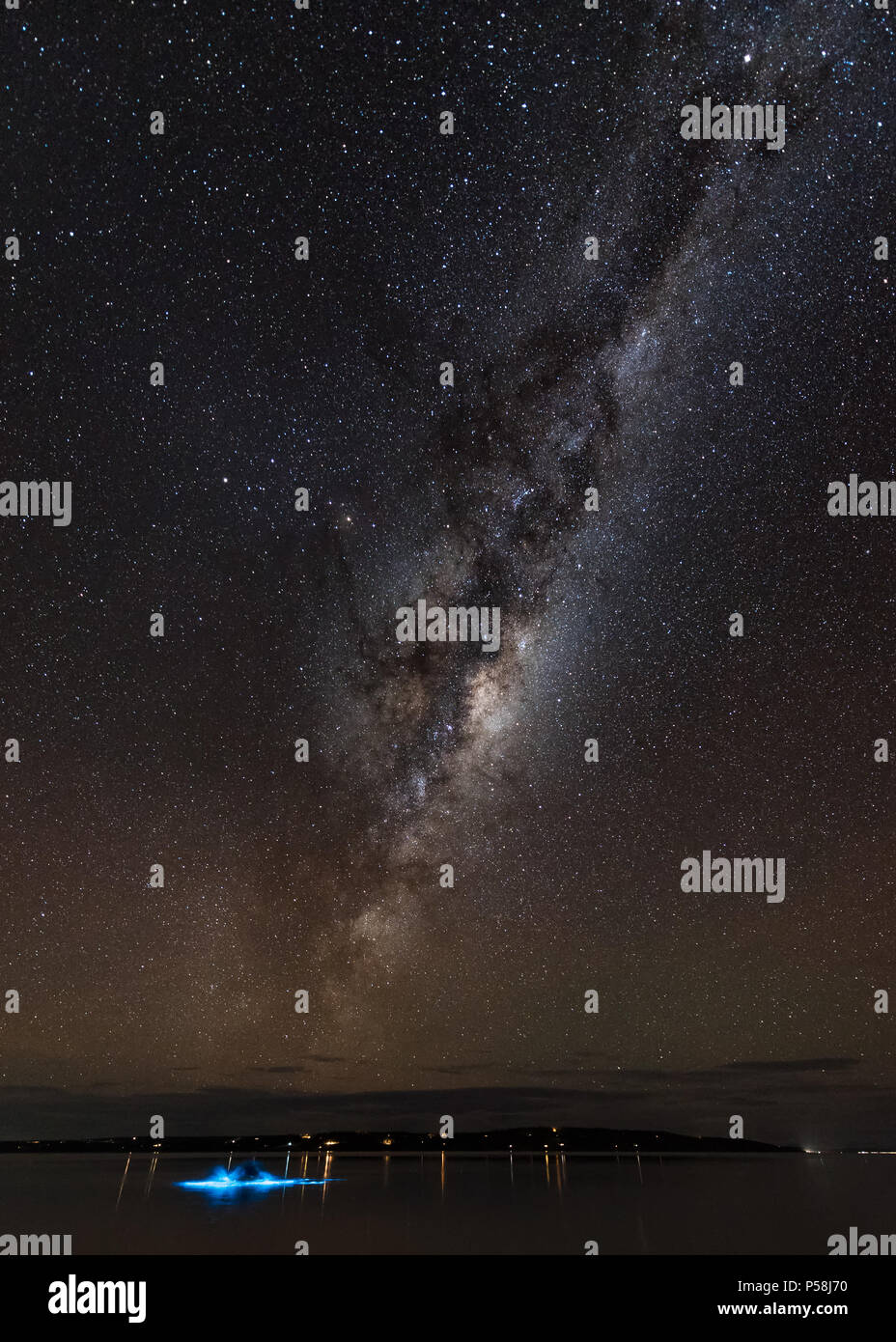 Kayaking in blue bioluminescence sea sparkle under the Milky Way Stock Photohttps://www.alamy.com/image-license-details/?v=1https://www.alamy.com/kayaking-in-blue-bioluminescence-sea-sparkle-under-the-milky-way-image209787620.html
Kayaking in blue bioluminescence sea sparkle under the Milky Way Stock Photohttps://www.alamy.com/image-license-details/?v=1https://www.alamy.com/kayaking-in-blue-bioluminescence-sea-sparkle-under-the-milky-way-image209787620.htmlRFP58J70–Kayaking in blue bioluminescence sea sparkle under the Milky Way
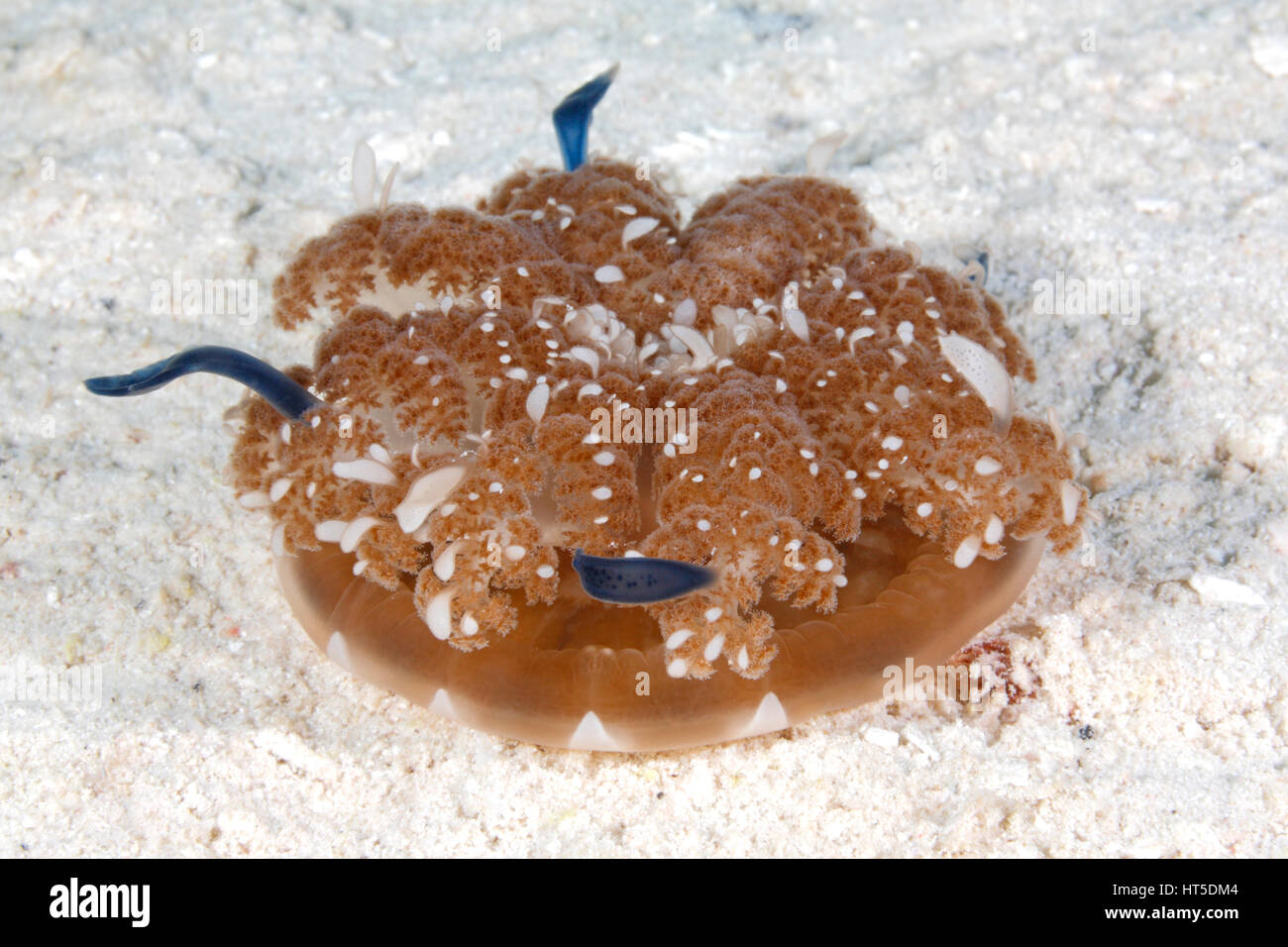 Upside Down Jellyfish, Cassiopea andromeda. This jellyfish usually has its mouth upward on the bottom. Stock Photohttps://www.alamy.com/image-license-details/?v=1https://www.alamy.com/stock-photo-upside-down-jellyfish-cassiopea-andromeda-this-jellyfish-usually-has-135344836.html
Upside Down Jellyfish, Cassiopea andromeda. This jellyfish usually has its mouth upward on the bottom. Stock Photohttps://www.alamy.com/image-license-details/?v=1https://www.alamy.com/stock-photo-upside-down-jellyfish-cassiopea-andromeda-this-jellyfish-usually-has-135344836.htmlRMHT5DM4–Upside Down Jellyfish, Cassiopea andromeda. This jellyfish usually has its mouth upward on the bottom.
 Planctonic dinoflagellates from the genus Ceratium from southwest Norway in August Stock Photohttps://www.alamy.com/image-license-details/?v=1https://www.alamy.com/stock-photo-planctonic-dinoflagellates-from-the-genus-ceratium-from-southwest-47926111.html
Planctonic dinoflagellates from the genus Ceratium from southwest Norway in August Stock Photohttps://www.alamy.com/image-license-details/?v=1https://www.alamy.com/stock-photo-planctonic-dinoflagellates-from-the-genus-ceratium-from-southwest-47926111.htmlRMCNY66R–Planctonic dinoflagellates from the genus Ceratium from southwest Norway in August
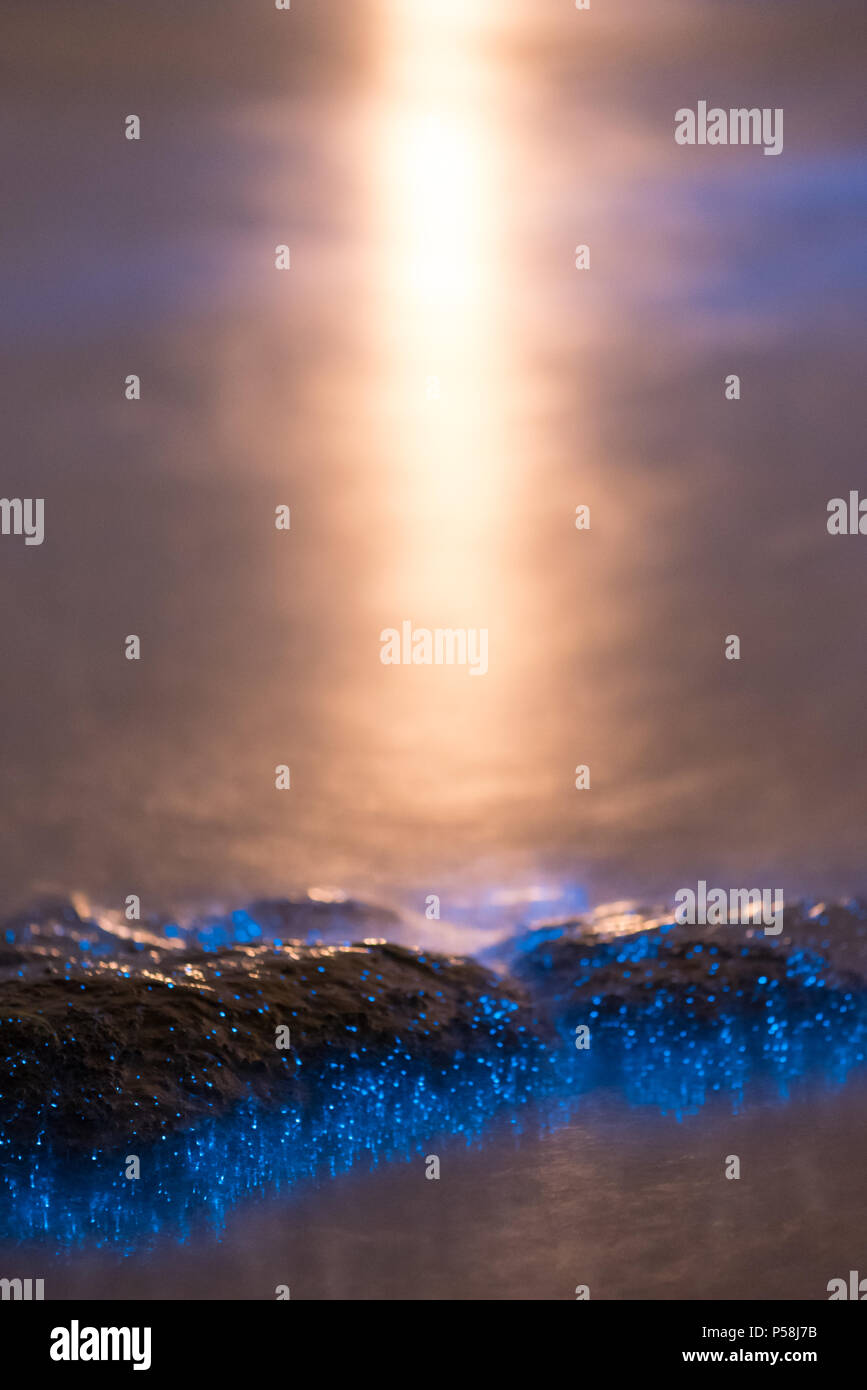 Blue Bioluminescence close up on rock Stock Photohttps://www.alamy.com/image-license-details/?v=1https://www.alamy.com/blue-bioluminescence-close-up-on-rock-image209787631.html
Blue Bioluminescence close up on rock Stock Photohttps://www.alamy.com/image-license-details/?v=1https://www.alamy.com/blue-bioluminescence-close-up-on-rock-image209787631.htmlRFP58J7B–Blue Bioluminescence close up on rock
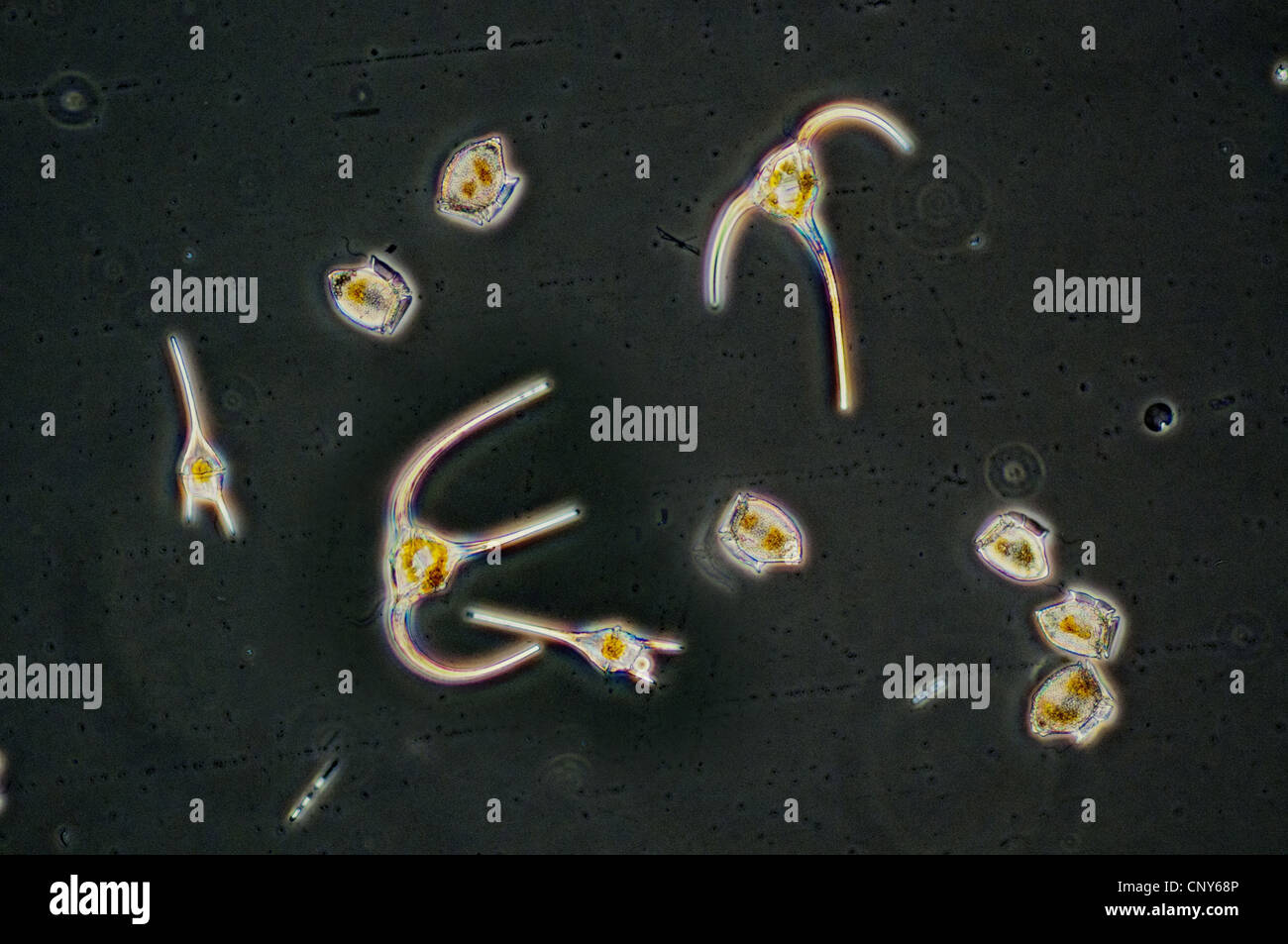 Dinoflagellates from the genera Dinophysis and Ceratium seen through a microscope. Collected from the waters of southern Norway in early June 2010., Norway Stock Photohttps://www.alamy.com/image-license-details/?v=1https://www.alamy.com/stock-photo-dinoflagellates-from-the-genera-dinophysis-and-ceratium-seen-through-47926166.html
Dinoflagellates from the genera Dinophysis and Ceratium seen through a microscope. Collected from the waters of southern Norway in early June 2010., Norway Stock Photohttps://www.alamy.com/image-license-details/?v=1https://www.alamy.com/stock-photo-dinoflagellates-from-the-genera-dinophysis-and-ceratium-seen-through-47926166.htmlRMCNY68P–Dinoflagellates from the genera Dinophysis and Ceratium seen through a microscope. Collected from the waters of southern Norway in early June 2010., Norway
 Dinoflagellates - Stock Photohttps://www.alamy.com/image-license-details/?v=1https://www.alamy.com/dinoflagellates-image334987405.html
Dinoflagellates - Stock Photohttps://www.alamy.com/image-license-details/?v=1https://www.alamy.com/dinoflagellates-image334987405.htmlRM2ACYYRW–Dinoflagellates -
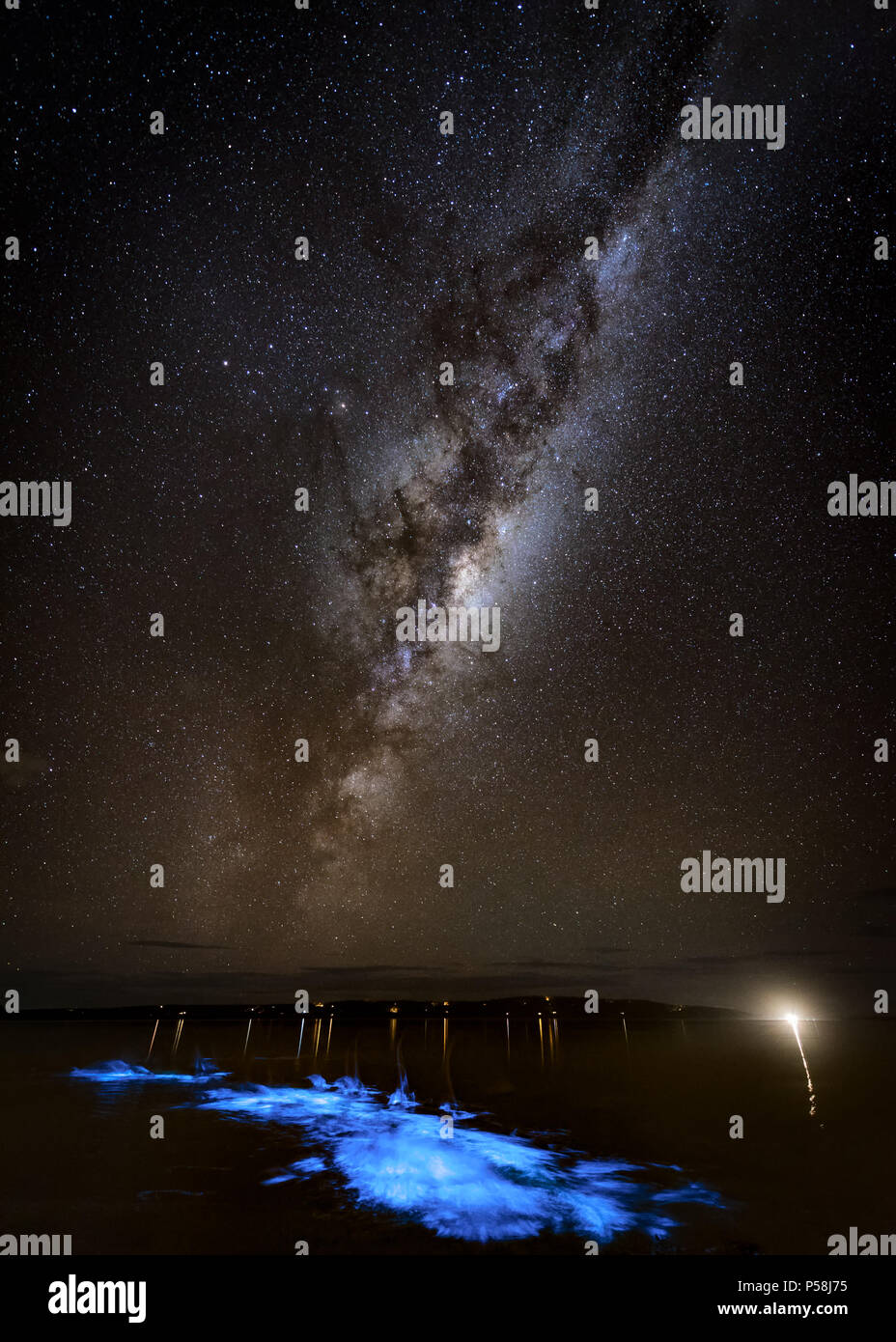 Kayaking in Bioluminescence under the Milky Way Stock Photohttps://www.alamy.com/image-license-details/?v=1https://www.alamy.com/kayaking-in-bioluminescence-under-the-milky-way-image209787625.html
Kayaking in Bioluminescence under the Milky Way Stock Photohttps://www.alamy.com/image-license-details/?v=1https://www.alamy.com/kayaking-in-bioluminescence-under-the-milky-way-image209787625.htmlRFP58J75–Kayaking in Bioluminescence under the Milky Way
 Plankton phytopl'clay X20, various species of diatoms and dinoflagellates, English Channel Stock Photohttps://www.alamy.com/image-license-details/?v=1https://www.alamy.com/plankton-phytoplclay-x20-various-species-of-diatoms-and-dinoflagellates-english-channel-image543856806.html
Plankton phytopl'clay X20, various species of diatoms and dinoflagellates, English Channel Stock Photohttps://www.alamy.com/image-license-details/?v=1https://www.alamy.com/plankton-phytoplclay-x20-various-species-of-diatoms-and-dinoflagellates-english-channel-image543856806.htmlRM2PGPPWA–Plankton phytopl'clay X20, various species of diatoms and dinoflagellates, English Channel
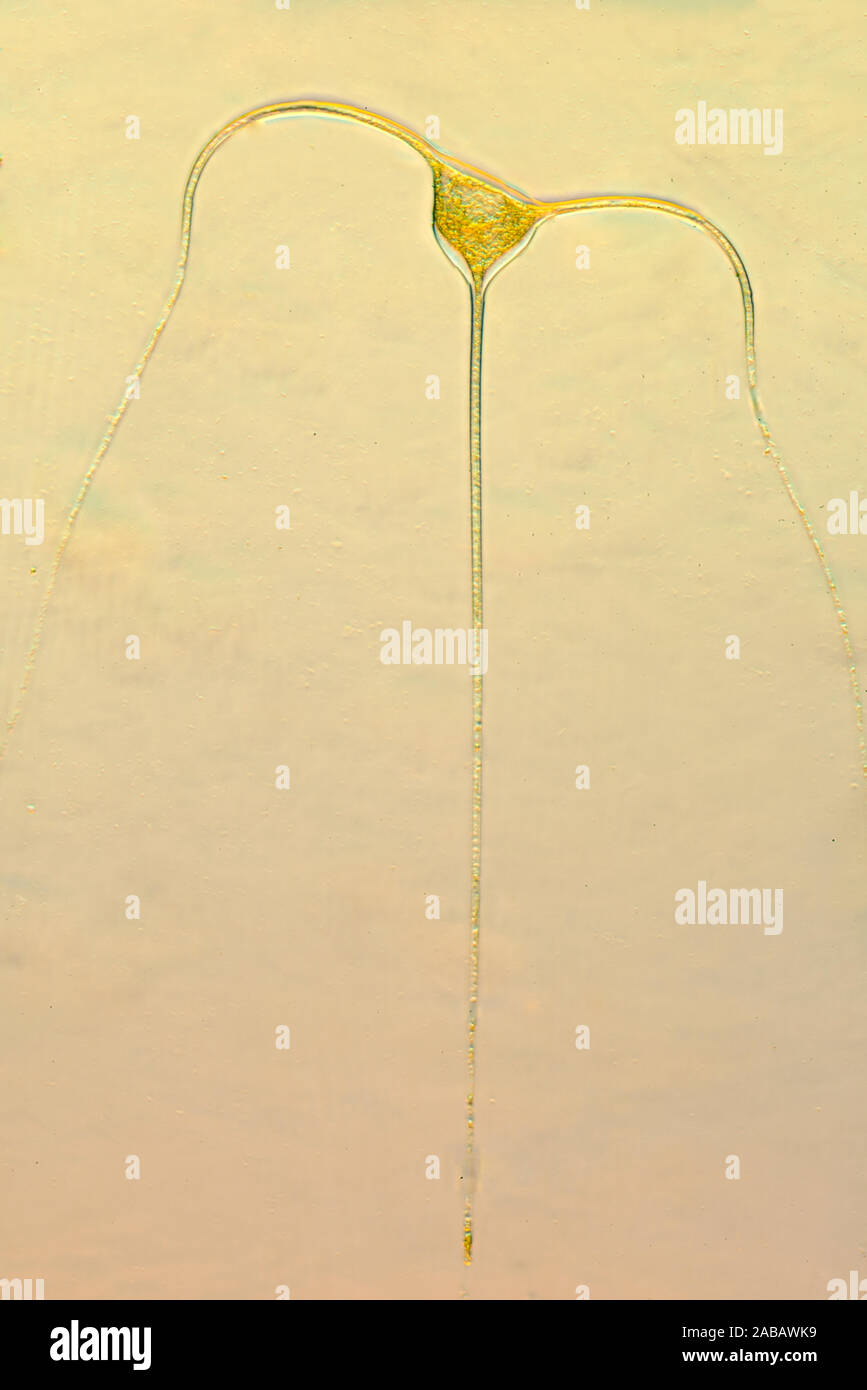 Marine, dinoflagellate, flagellum, unicellular, organisms, flagella Stock Photohttps://www.alamy.com/image-license-details/?v=1https://www.alamy.com/marine-dinoflagellate-flagellum-unicellular-organisms-flagella-image333997869.html
Marine, dinoflagellate, flagellum, unicellular, organisms, flagella Stock Photohttps://www.alamy.com/image-license-details/?v=1https://www.alamy.com/marine-dinoflagellate-flagellum-unicellular-organisms-flagella-image333997869.htmlRM2ABAWK9–Marine, dinoflagellate, flagellum, unicellular, organisms, flagella
 Bioluminescence by dinoflagellates at full moon on Minsener Oog Island, Lower Saxony Wadden Sea National Park, Lower Saxony, Germany Stock Photohttps://www.alamy.com/image-license-details/?v=1https://www.alamy.com/bioluminescence-by-dinoflagellates-at-full-moon-on-minsener-oog-island-lower-saxony-wadden-sea-national-park-lower-saxony-germany-image564922624.html
Bioluminescence by dinoflagellates at full moon on Minsener Oog Island, Lower Saxony Wadden Sea National Park, Lower Saxony, Germany Stock Photohttps://www.alamy.com/image-license-details/?v=1https://www.alamy.com/bioluminescence-by-dinoflagellates-at-full-moon-on-minsener-oog-island-lower-saxony-wadden-sea-national-park-lower-saxony-germany-image564922624.htmlRF2RR2CG0–Bioluminescence by dinoflagellates at full moon on Minsener Oog Island, Lower Saxony Wadden Sea National Park, Lower Saxony, Germany
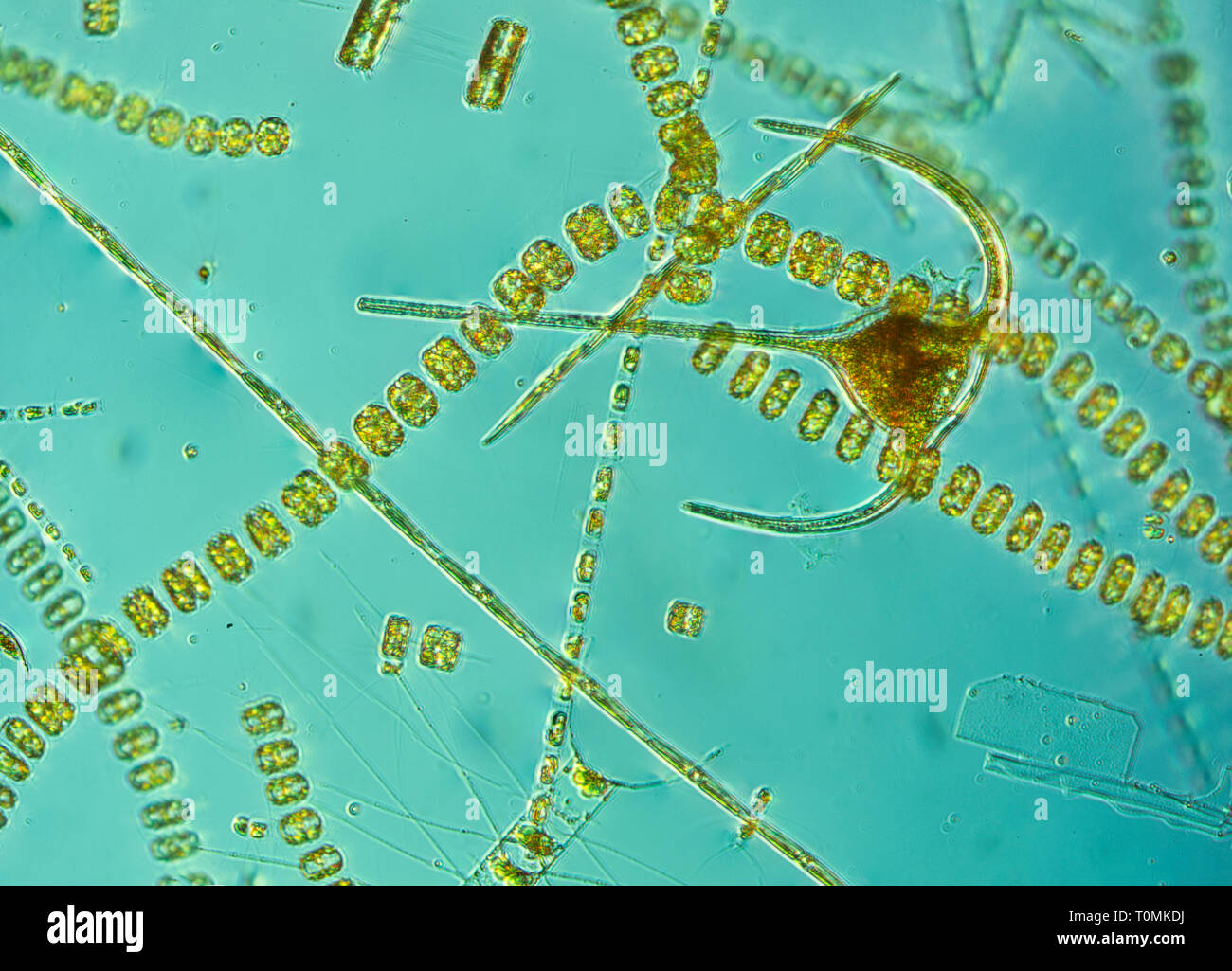 Dinoflagellates, flagellum, protista, .flagellate eukaryotes, Dinoflagellata, marine, plankton, photosynthetic, mixotrophic ,phagotrophy ,myzocytos Stock Photohttps://www.alamy.com/image-license-details/?v=1https://www.alamy.com/dinoflagellates-flagellum-protista-flagellate-eukaryotes-dinoflagellata-marine-plankton-photosynthetic-mixotrophic-phagotrophy-myzocytos-image241399470.html
Dinoflagellates, flagellum, protista, .flagellate eukaryotes, Dinoflagellata, marine, plankton, photosynthetic, mixotrophic ,phagotrophy ,myzocytos Stock Photohttps://www.alamy.com/image-license-details/?v=1https://www.alamy.com/dinoflagellates-flagellum-protista-flagellate-eukaryotes-dinoflagellata-marine-plankton-photosynthetic-mixotrophic-phagotrophy-myzocytos-image241399470.htmlRMT0MKDJ–Dinoflagellates, flagellum, protista, .flagellate eukaryotes, Dinoflagellata, marine, plankton, photosynthetic, mixotrophic ,phagotrophy ,myzocytos
 Noctiluca miliaris, sea sparkle (Noctiluca scintillans), dinoflagellates, Other animals, Animals, Dinoflagellate swarm of luminescent dinoflagellate Stock Photohttps://www.alamy.com/image-license-details/?v=1https://www.alamy.com/noctiluca-miliaris-sea-sparkle-noctiluca-scintillans-dinoflagellates-other-animals-animals-dinoflagellate-swarm-of-luminescent-dinoflagellate-image543856844.html
Noctiluca miliaris, sea sparkle (Noctiluca scintillans), dinoflagellates, Other animals, Animals, Dinoflagellate swarm of luminescent dinoflagellate Stock Photohttps://www.alamy.com/image-license-details/?v=1https://www.alamy.com/noctiluca-miliaris-sea-sparkle-noctiluca-scintillans-dinoflagellates-other-animals-animals-dinoflagellate-swarm-of-luminescent-dinoflagellate-image543856844.htmlRM2PGPPXM–Noctiluca miliaris, sea sparkle (Noctiluca scintillans), dinoflagellates, Other animals, Animals, Dinoflagellate swarm of luminescent dinoflagellate
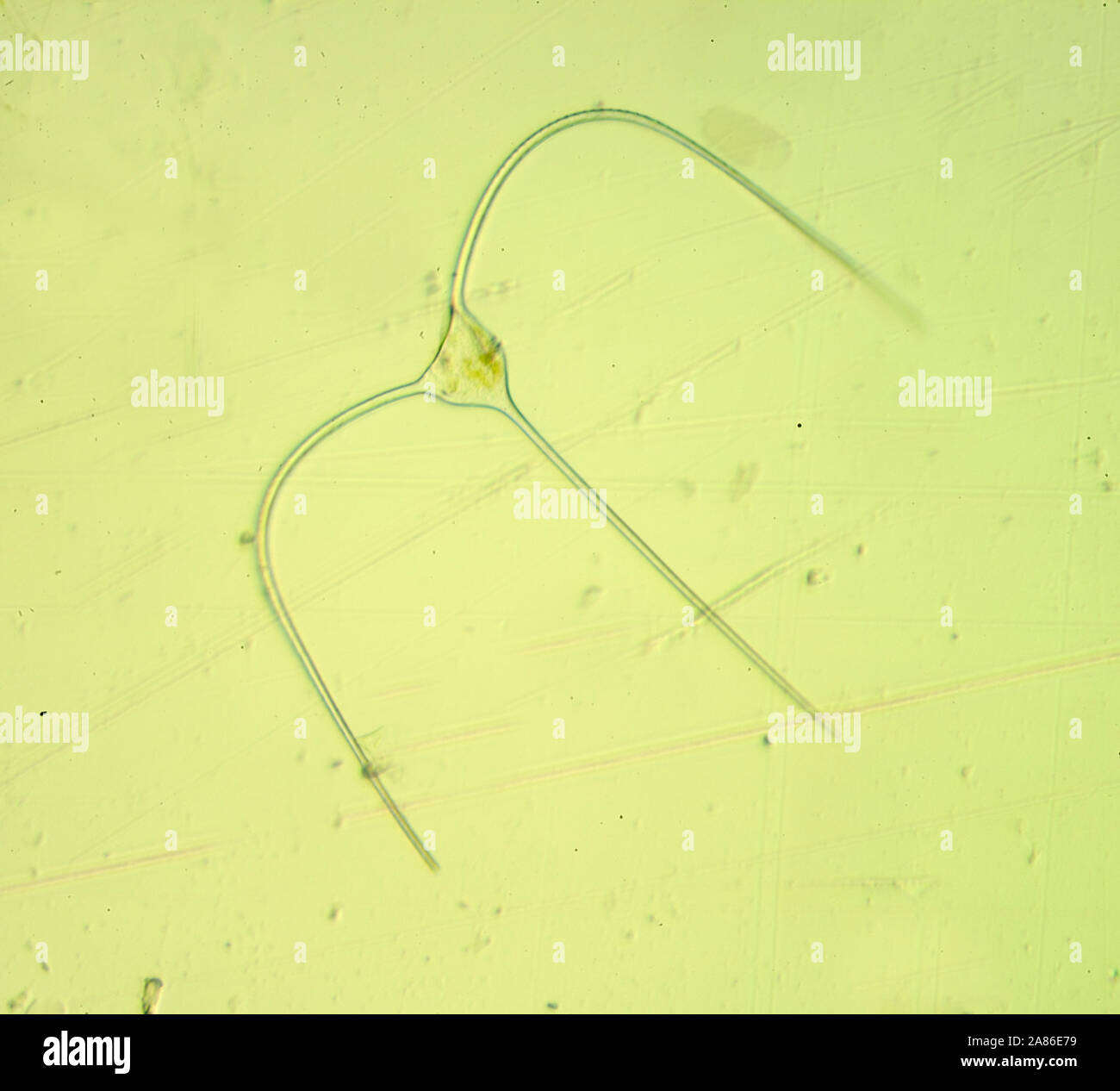 dinoflagellates - Latin flagellum 'whip, scourge') are a classification subgroup of protista.They are a large group of flagellate eukaryotes that cons Stock Photohttps://www.alamy.com/image-license-details/?v=1https://www.alamy.com/dinoflagellates-latin-flagellum-whip-scourge-are-a-classification-subgroup-of-protistathey-are-a-large-group-of-flagellate-eukaryotes-that-cons-image332057133.html
dinoflagellates - Latin flagellum 'whip, scourge') are a classification subgroup of protista.They are a large group of flagellate eukaryotes that cons Stock Photohttps://www.alamy.com/image-license-details/?v=1https://www.alamy.com/dinoflagellates-latin-flagellum-whip-scourge-are-a-classification-subgroup-of-protistathey-are-a-large-group-of-flagellate-eukaryotes-that-cons-image332057133.htmlRM2A86E79–dinoflagellates - Latin flagellum 'whip, scourge') are a classification subgroup of protista.They are a large group of flagellate eukaryotes that cons
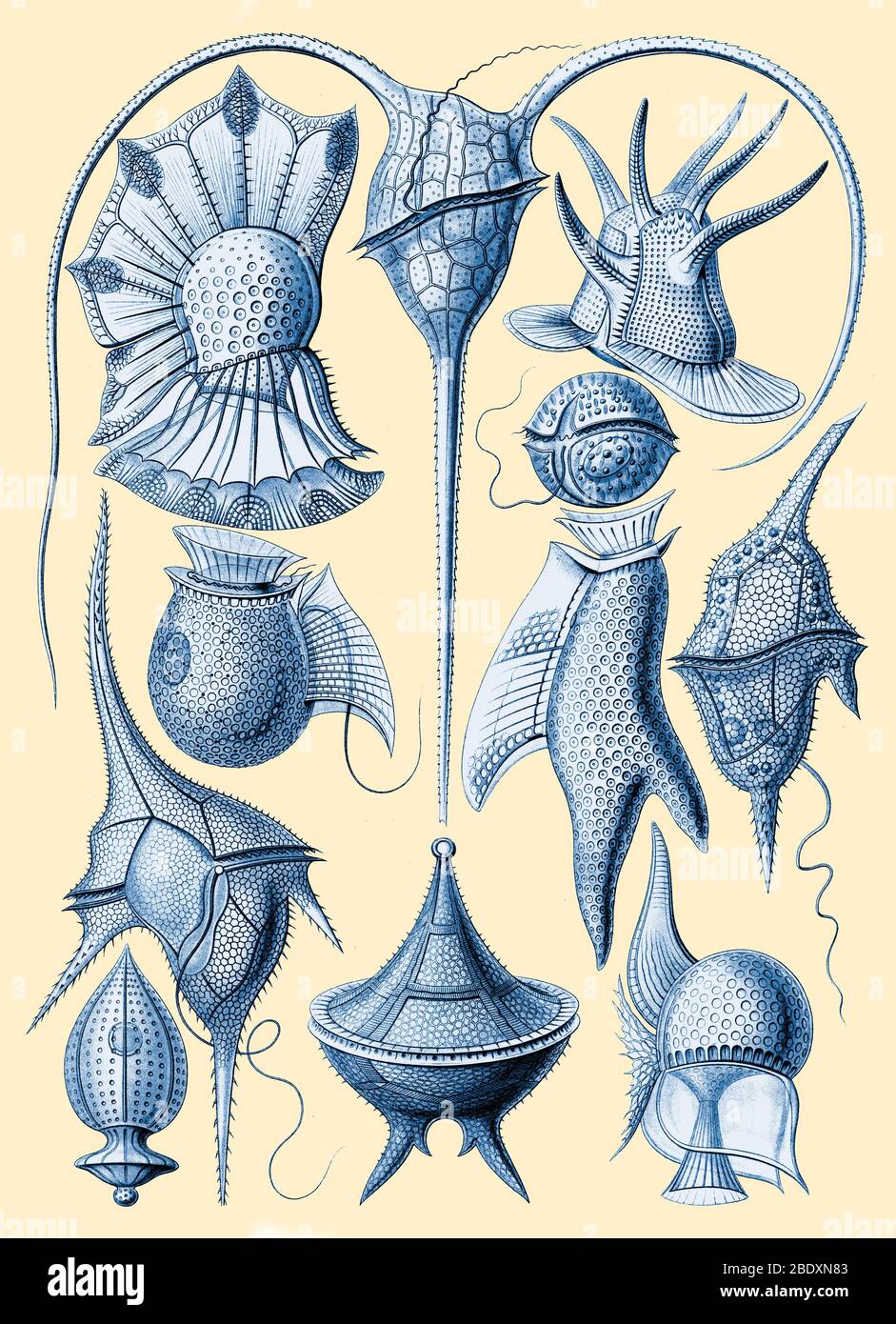 Ernst Haeckel, Dinoflagellates Stock Photohttps://www.alamy.com/image-license-details/?v=1https://www.alamy.com/ernst-haeckel-dinoflagellates-image352785331.html
Ernst Haeckel, Dinoflagellates Stock Photohttps://www.alamy.com/image-license-details/?v=1https://www.alamy.com/ernst-haeckel-dinoflagellates-image352785331.htmlRM2BDXN83–Ernst Haeckel, Dinoflagellates
 The genus Ceratium includes species of freshwater and marine dinoflagellates. Most species of Ceratium are unicellular organisms that are characterize Stock Photohttps://www.alamy.com/image-license-details/?v=1https://www.alamy.com/the-genus-ceratium-includes-species-of-freshwater-and-marine-dinoflagellates-most-species-of-ceratium-are-unicellular-organisms-that-are-characterize-image255561085.html
The genus Ceratium includes species of freshwater and marine dinoflagellates. Most species of Ceratium are unicellular organisms that are characterize Stock Photohttps://www.alamy.com/image-license-details/?v=1https://www.alamy.com/the-genus-ceratium-includes-species-of-freshwater-and-marine-dinoflagellates-most-species-of-ceratium-are-unicellular-organisms-that-are-characterize-image255561085.htmlRMTRNPNH–The genus Ceratium includes species of freshwater and marine dinoflagellates. Most species of Ceratium are unicellular organisms that are characterize
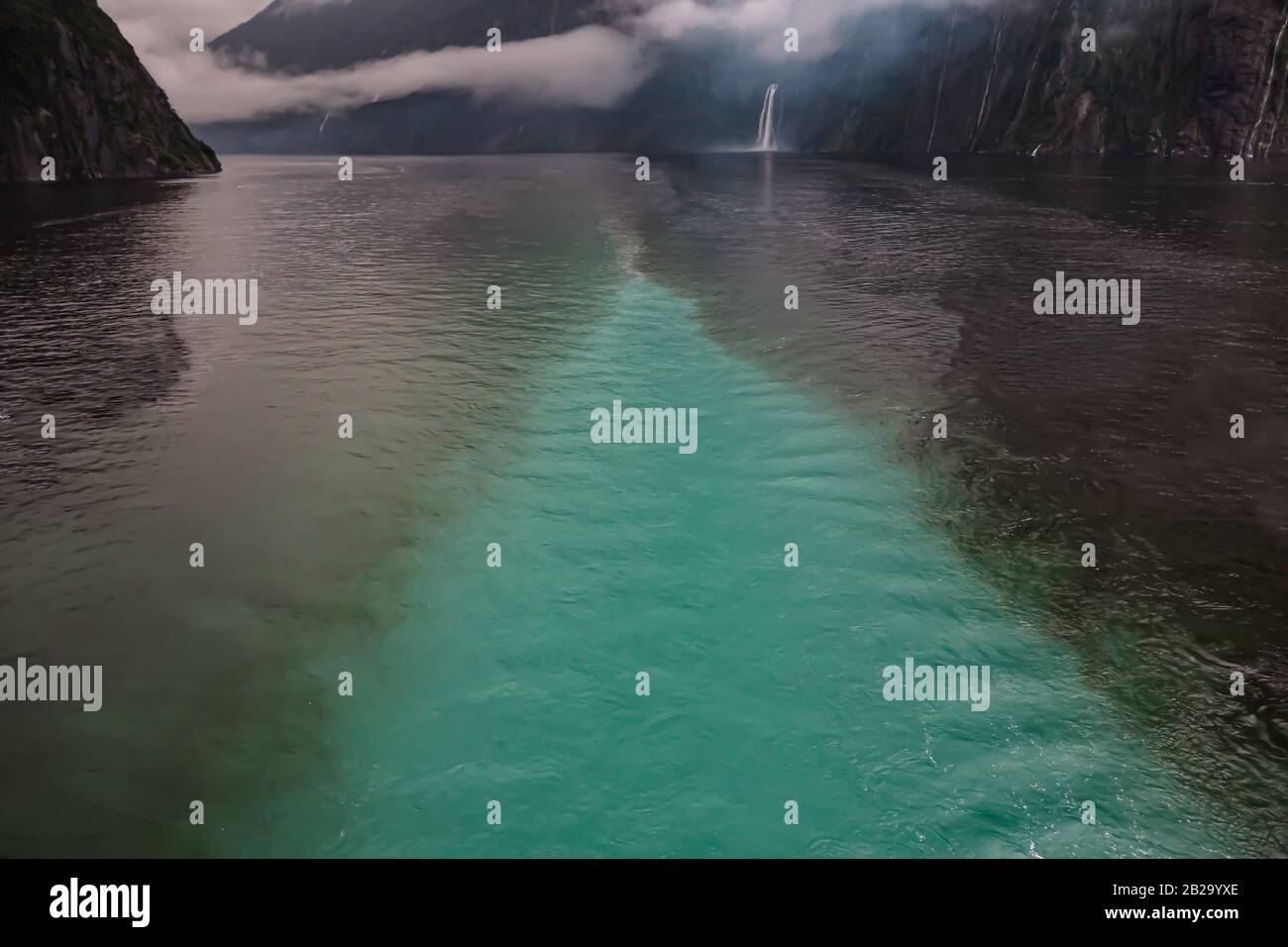 Bioluminescence at Te Wahipounamu Fiordland New Zealand Stock Photohttps://www.alamy.com/image-license-details/?v=1https://www.alamy.com/bioluminescence-at-te-wahipounamu-fiordland-new-zealand-image345656150.html
Bioluminescence at Te Wahipounamu Fiordland New Zealand Stock Photohttps://www.alamy.com/image-license-details/?v=1https://www.alamy.com/bioluminescence-at-te-wahipounamu-fiordland-new-zealand-image345656150.htmlRF2B29YXE–Bioluminescence at Te Wahipounamu Fiordland New Zealand
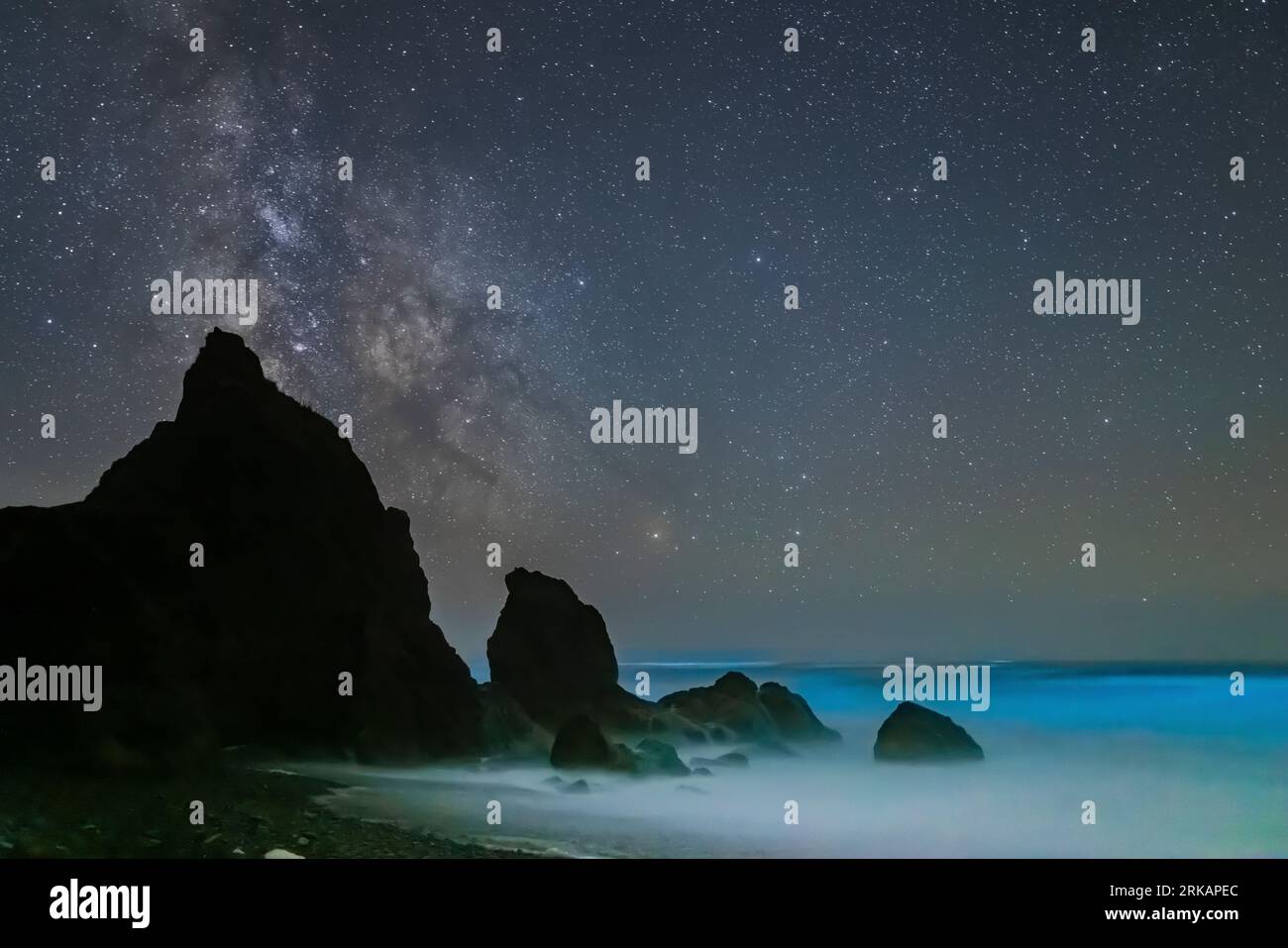 Bioluminescence by dinoflagellates disturbed by waves off Ruby Beach in Olympic National Park, Washington State, USA Stock Photohttps://www.alamy.com/image-license-details/?v=1https://www.alamy.com/bioluminescence-by-dinoflagellates-disturbed-by-waves-off-ruby-beach-in-olympic-national-park-washington-state-usa-image562647412.html
Bioluminescence by dinoflagellates disturbed by waves off Ruby Beach in Olympic National Park, Washington State, USA Stock Photohttps://www.alamy.com/image-license-details/?v=1https://www.alamy.com/bioluminescence-by-dinoflagellates-disturbed-by-waves-off-ruby-beach-in-olympic-national-park-washington-state-usa-image562647412.htmlRF2RKAPEC–Bioluminescence by dinoflagellates disturbed by waves off Ruby Beach in Olympic National Park, Washington State, USA
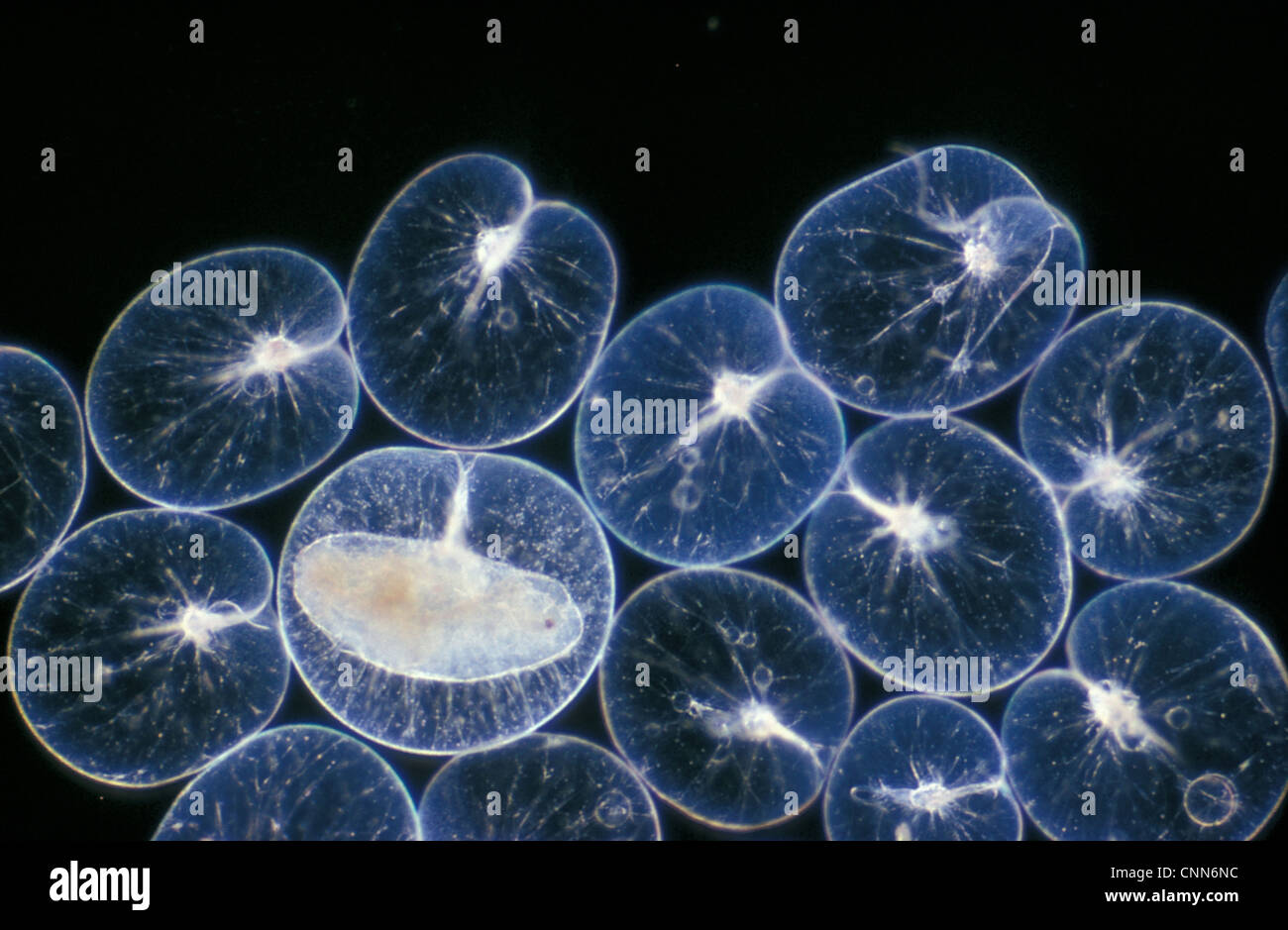 Pl'ton -(Noctiluca scintillans) group / one with ingested copepod / x12 Stock Photohttps://www.alamy.com/image-license-details/?v=1https://www.alamy.com/stock-photo-plton-noctiluca-scintillans-group-one-with-ingested-copepod-x12-47794808.html
Pl'ton -(Noctiluca scintillans) group / one with ingested copepod / x12 Stock Photohttps://www.alamy.com/image-license-details/?v=1https://www.alamy.com/stock-photo-plton-noctiluca-scintillans-group-one-with-ingested-copepod-x12-47794808.htmlRMCNN6NC–Pl'ton -(Noctiluca scintillans) group / one with ingested copepod / x12
 Noctiluca miliaris, Print, Noctiluca scintillans, commonly known as the sea sparkle, and also published as Noctiluca miliaris, is a free-living, marine-dwelling species of dinoflagellate that exhibits bioluminescence when disturbed (popularly known as mareel). Its bioluminescence is produced throughout the cytoplasm of this single-celled protist, by a luciferin-luciferase reaction in thousands of spherically shaped organelles, called scintillons Stock Photohttps://www.alamy.com/image-license-details/?v=1https://www.alamy.com/noctiluca-miliaris-print-noctiluca-scintillans-commonly-known-as-the-sea-sparkle-and-also-published-as-noctiluca-miliaris-is-a-free-living-marine-dwelling-species-of-dinoflagellate-that-exhibits-bioluminescence-when-disturbed-popularly-known-as-mareel-its-bioluminescence-is-produced-throughout-the-cytoplasm-of-this-single-celled-protist-by-a-luciferin-luciferase-reaction-in-thousands-of-spherically-shaped-organelles-called-scintillons-image328693419.html
Noctiluca miliaris, Print, Noctiluca scintillans, commonly known as the sea sparkle, and also published as Noctiluca miliaris, is a free-living, marine-dwelling species of dinoflagellate that exhibits bioluminescence when disturbed (popularly known as mareel). Its bioluminescence is produced throughout the cytoplasm of this single-celled protist, by a luciferin-luciferase reaction in thousands of spherically shaped organelles, called scintillons Stock Photohttps://www.alamy.com/image-license-details/?v=1https://www.alamy.com/noctiluca-miliaris-print-noctiluca-scintillans-commonly-known-as-the-sea-sparkle-and-also-published-as-noctiluca-miliaris-is-a-free-living-marine-dwelling-species-of-dinoflagellate-that-exhibits-bioluminescence-when-disturbed-popularly-known-as-mareel-its-bioluminescence-is-produced-throughout-the-cytoplasm-of-this-single-celled-protist-by-a-luciferin-luciferase-reaction-in-thousands-of-spherically-shaped-organelles-called-scintillons-image328693419.htmlRM2A2N7PK–Noctiluca miliaris, Print, Noctiluca scintillans, commonly known as the sea sparkle, and also published as Noctiluca miliaris, is a free-living, marine-dwelling species of dinoflagellate that exhibits bioluminescence when disturbed (popularly known as mareel). Its bioluminescence is produced throughout the cytoplasm of this single-celled protist, by a luciferin-luciferase reaction in thousands of spherically shaped organelles, called scintillons
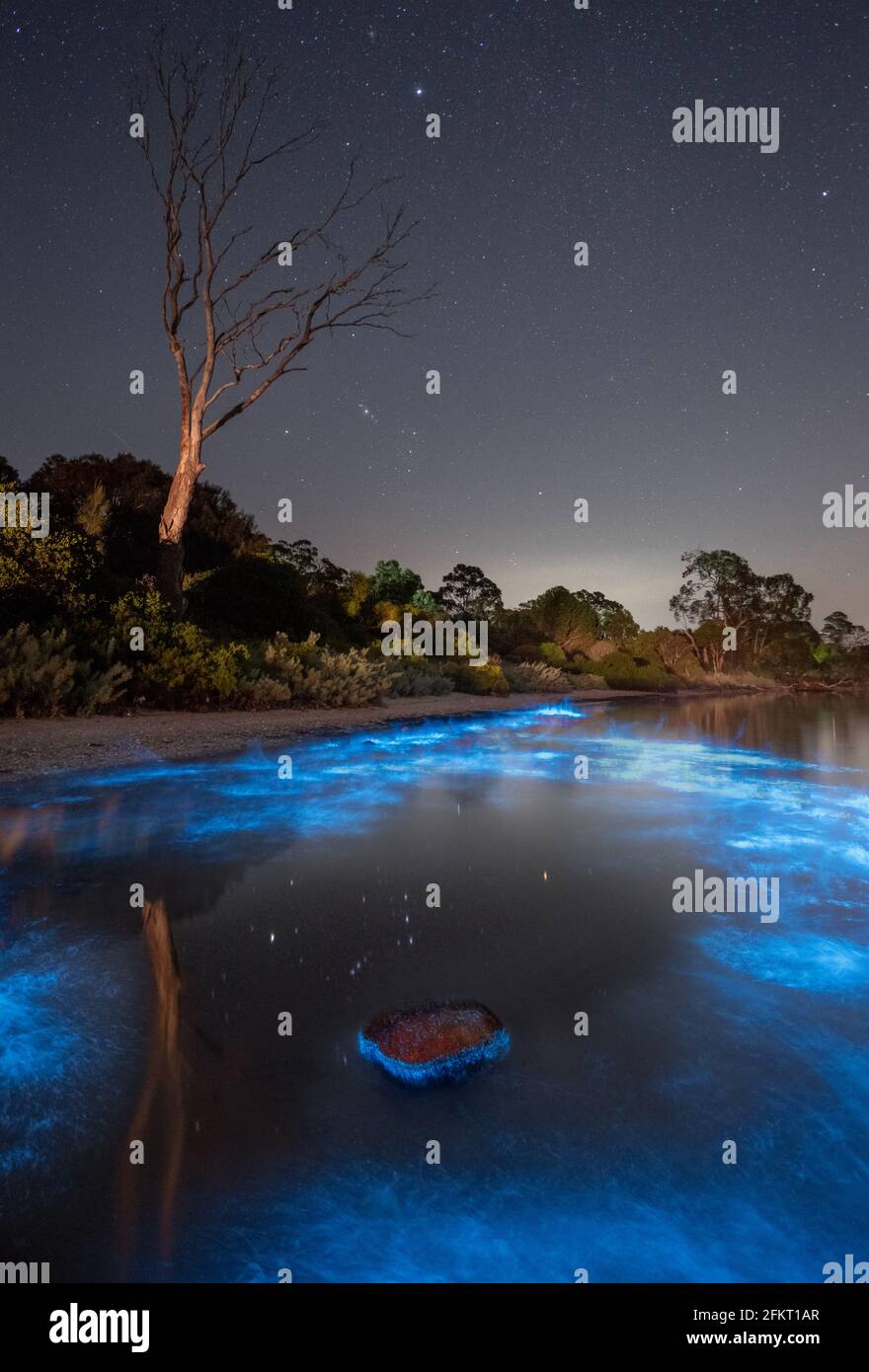 Orion reflected in blue bioluminescence Stock Photohttps://www.alamy.com/image-license-details/?v=1https://www.alamy.com/orion-reflected-in-blue-bioluminescence-image425255231.html
Orion reflected in blue bioluminescence Stock Photohttps://www.alamy.com/image-license-details/?v=1https://www.alamy.com/orion-reflected-in-blue-bioluminescence-image425255231.htmlRF2FKT1AR–Orion reflected in blue bioluminescence
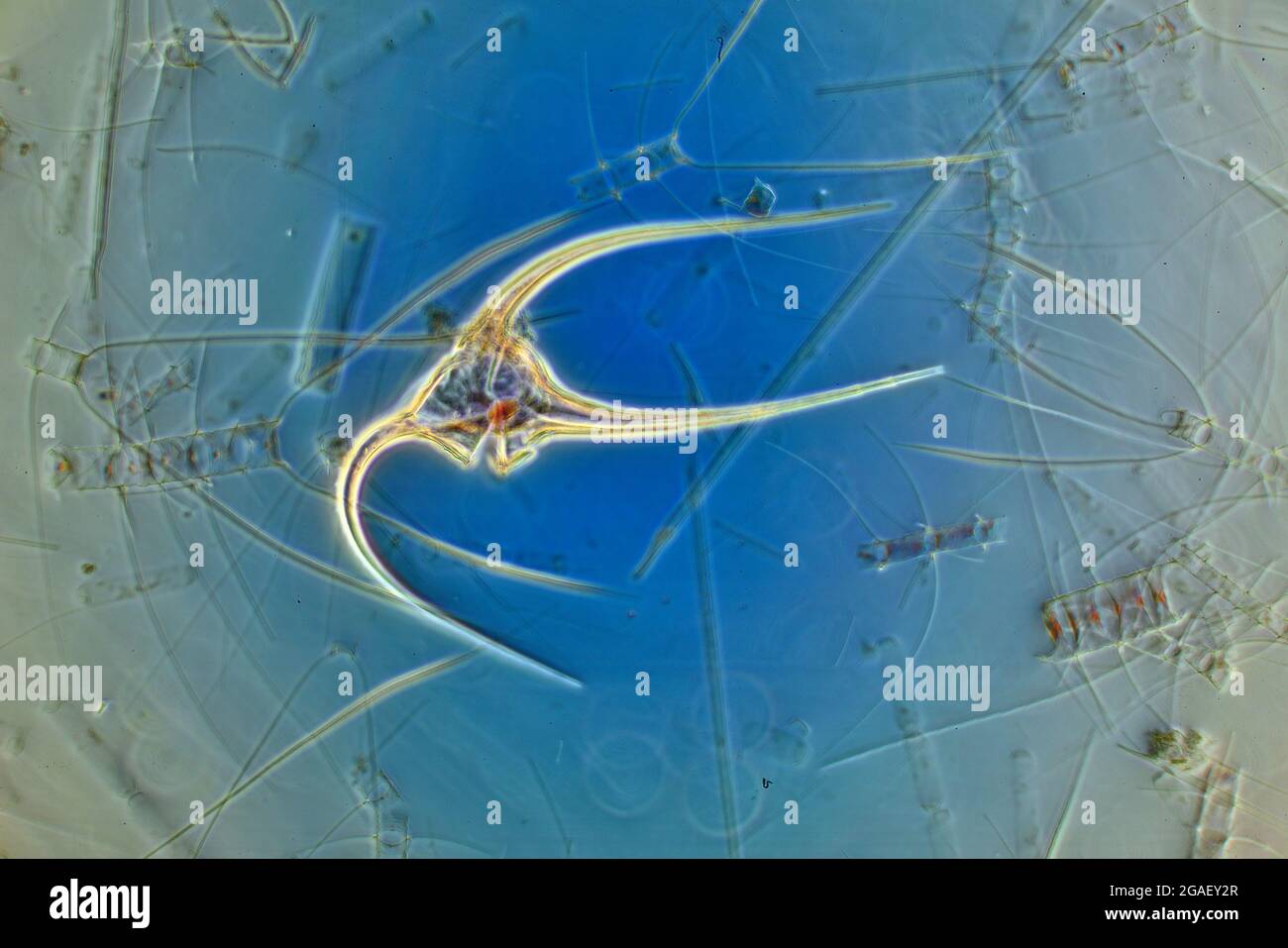 Marine Phytoplankton, dinoflagellate, Bacteriastrum, ceratium, diatoms/plankton from the Gullman fjord, Sweden 1995, PHOTOMICROGRAPH Stock Photohttps://www.alamy.com/image-license-details/?v=1https://www.alamy.com/marine-phytoplankton-dinoflagellate-bacteriastrum-ceratium-diatomsplankton-from-the-gullman-fjord-sweden-1995-photomicrograph-image436734335.html
Marine Phytoplankton, dinoflagellate, Bacteriastrum, ceratium, diatoms/plankton from the Gullman fjord, Sweden 1995, PHOTOMICROGRAPH Stock Photohttps://www.alamy.com/image-license-details/?v=1https://www.alamy.com/marine-phytoplankton-dinoflagellate-bacteriastrum-ceratium-diatomsplankton-from-the-gullman-fjord-sweden-1995-photomicrograph-image436734335.htmlRM2GAEY2R–Marine Phytoplankton, dinoflagellate, Bacteriastrum, ceratium, diatoms/plankton from the Gullman fjord, Sweden 1995, PHOTOMICROGRAPH
 La Jolla, CA. April 26, 2020. At night, ocean waves glow with bioluminescence during a red tide event. The blue phosphorescence light is caused when m Stock Photohttps://www.alamy.com/image-license-details/?v=1https://www.alamy.com/la-jolla-ca-april-26-2020-at-night-ocean-waves-glow-with-bioluminescence-during-a-red-tide-event-the-blue-phosphorescence-light-is-caused-when-m-image355248904.html
La Jolla, CA. April 26, 2020. At night, ocean waves glow with bioluminescence during a red tide event. The blue phosphorescence light is caused when m Stock Photohttps://www.alamy.com/image-license-details/?v=1https://www.alamy.com/la-jolla-ca-april-26-2020-at-night-ocean-waves-glow-with-bioluminescence-during-a-red-tide-event-the-blue-phosphorescence-light-is-caused-when-m-image355248904.htmlRF2BHXYGT–La Jolla, CA. April 26, 2020. At night, ocean waves glow with bioluminescence during a red tide event. The blue phosphorescence light is caused when m
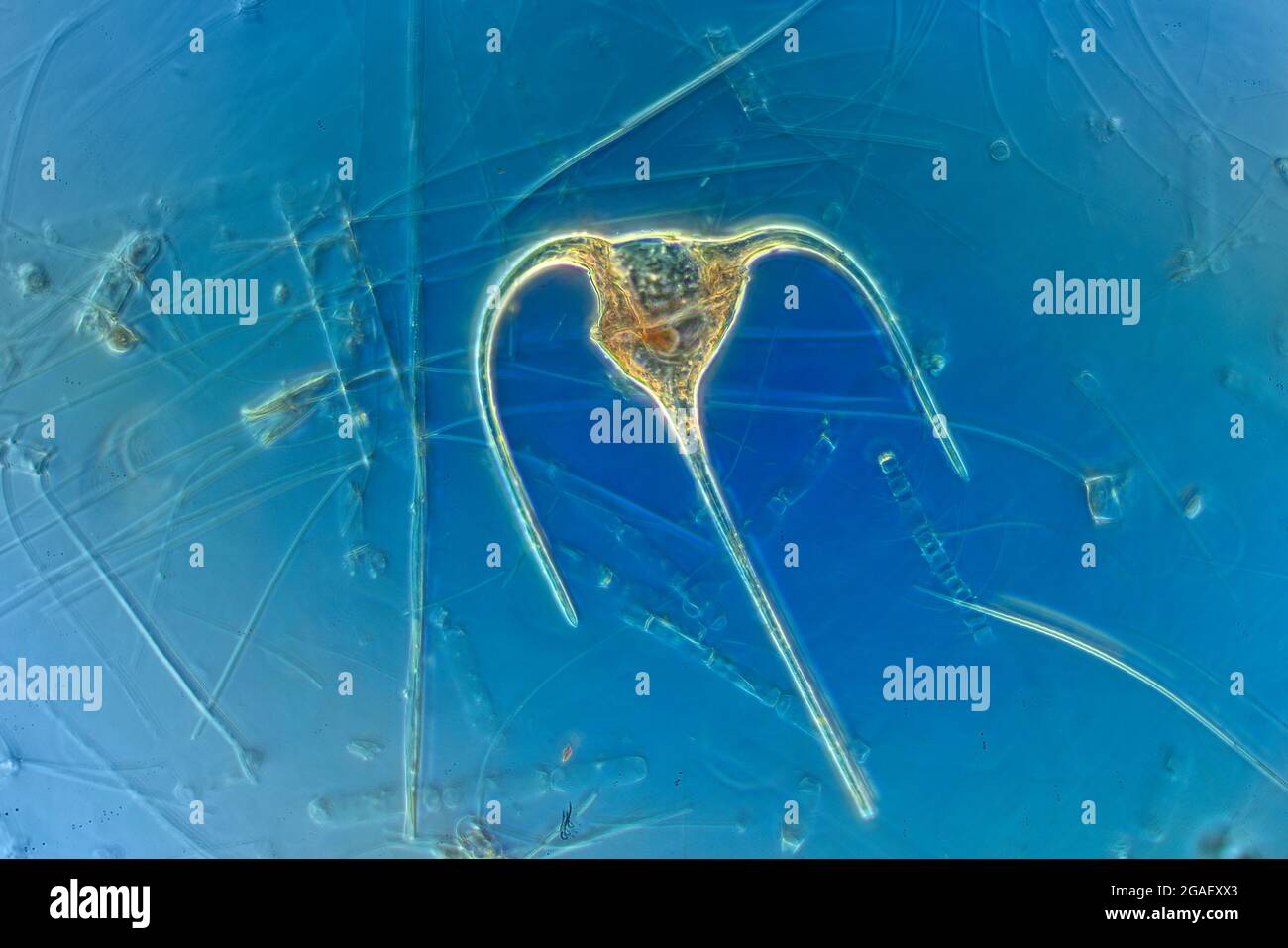 Marine Phytoplankton, dinoflagellate, Bacteriastrum, ceratium, diatoms/plankton from the Gullman fjord, Sweden 1995, PHOTOMICROGRAPH Stock Photohttps://www.alamy.com/image-license-details/?v=1https://www.alamy.com/marine-phytoplankton-dinoflagellate-bacteriastrum-ceratium-diatomsplankton-from-the-gullman-fjord-sweden-1995-photomicrograph-image436734203.html
Marine Phytoplankton, dinoflagellate, Bacteriastrum, ceratium, diatoms/plankton from the Gullman fjord, Sweden 1995, PHOTOMICROGRAPH Stock Photohttps://www.alamy.com/image-license-details/?v=1https://www.alamy.com/marine-phytoplankton-dinoflagellate-bacteriastrum-ceratium-diatomsplankton-from-the-gullman-fjord-sweden-1995-photomicrograph-image436734203.htmlRM2GAEXX3–Marine Phytoplankton, dinoflagellate, Bacteriastrum, ceratium, diatoms/plankton from the Gullman fjord, Sweden 1995, PHOTOMICROGRAPH
 Dinoflagellates from the genus Ceratium and two cells of Protoperidinium depressum in a sample collected from the waters of southern Norway in early June 2010., Norway Stock Photohttps://www.alamy.com/image-license-details/?v=1https://www.alamy.com/stock-photo-dinoflagellates-from-the-genus-ceratium-and-two-cells-of-protoperidinium-47926175.html
Dinoflagellates from the genus Ceratium and two cells of Protoperidinium depressum in a sample collected from the waters of southern Norway in early June 2010., Norway Stock Photohttps://www.alamy.com/image-license-details/?v=1https://www.alamy.com/stock-photo-dinoflagellates-from-the-genus-ceratium-and-two-cells-of-protoperidinium-47926175.htmlRMCNY693–Dinoflagellates from the genus Ceratium and two cells of Protoperidinium depressum in a sample collected from the waters of southern Norway in early June 2010., Norway
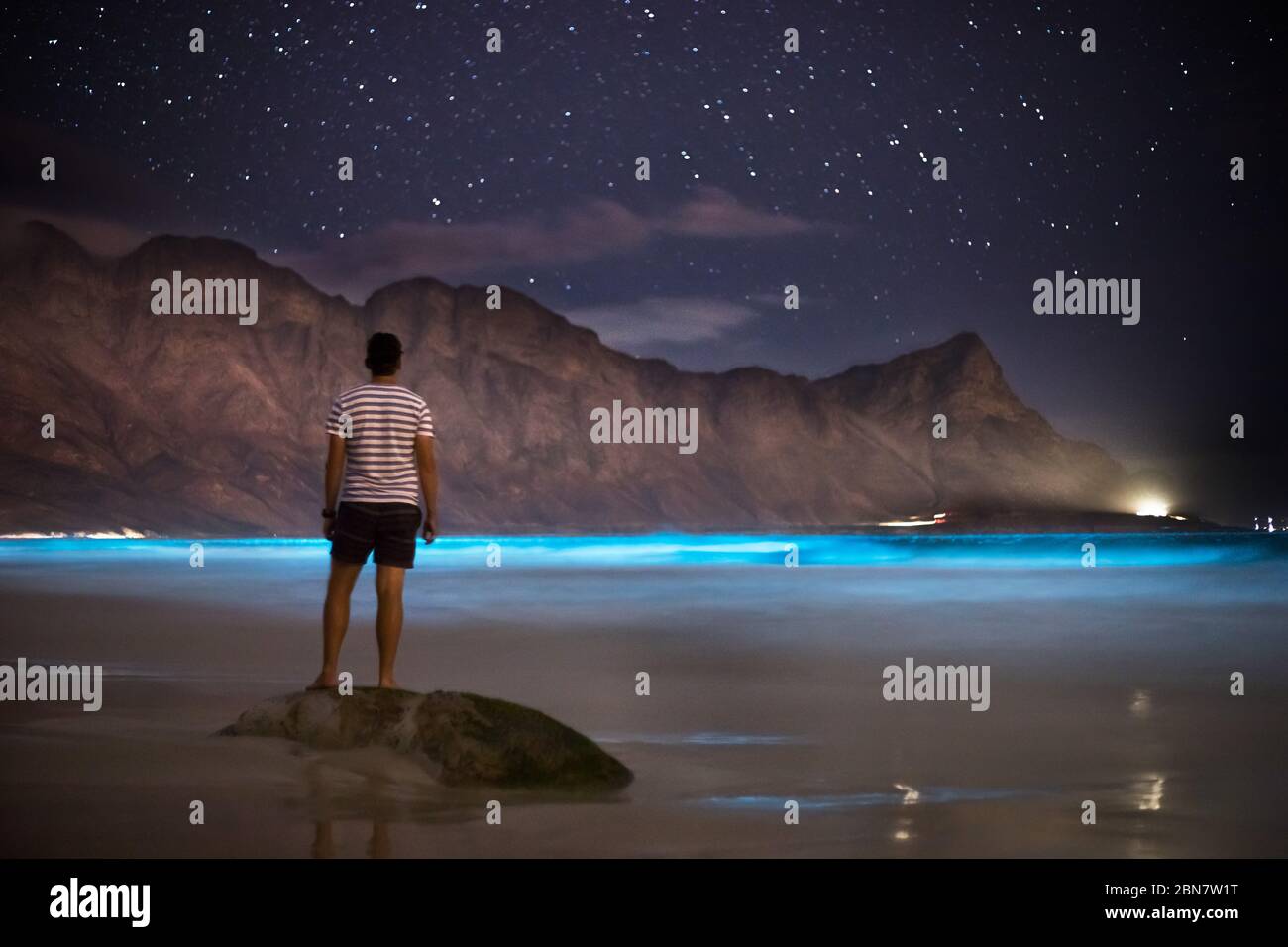 Bioluminescent plankton organisms in the water off Kogel Bay, Western Cape, South Africa, give off a blue glow when wave action agitates the water. Stock Photohttps://www.alamy.com/image-license-details/?v=1https://www.alamy.com/bioluminescent-plankton-organisms-in-the-water-off-kogel-bay-western-cape-south-africa-give-off-a-blue-glow-when-wave-action-agitates-the-water-image357288452.html
Bioluminescent plankton organisms in the water off Kogel Bay, Western Cape, South Africa, give off a blue glow when wave action agitates the water. Stock Photohttps://www.alamy.com/image-license-details/?v=1https://www.alamy.com/bioluminescent-plankton-organisms-in-the-water-off-kogel-bay-western-cape-south-africa-give-off-a-blue-glow-when-wave-action-agitates-the-water-image357288452.htmlRF2BN7W1T–Bioluminescent plankton organisms in the water off Kogel Bay, Western Cape, South Africa, give off a blue glow when wave action agitates the water.
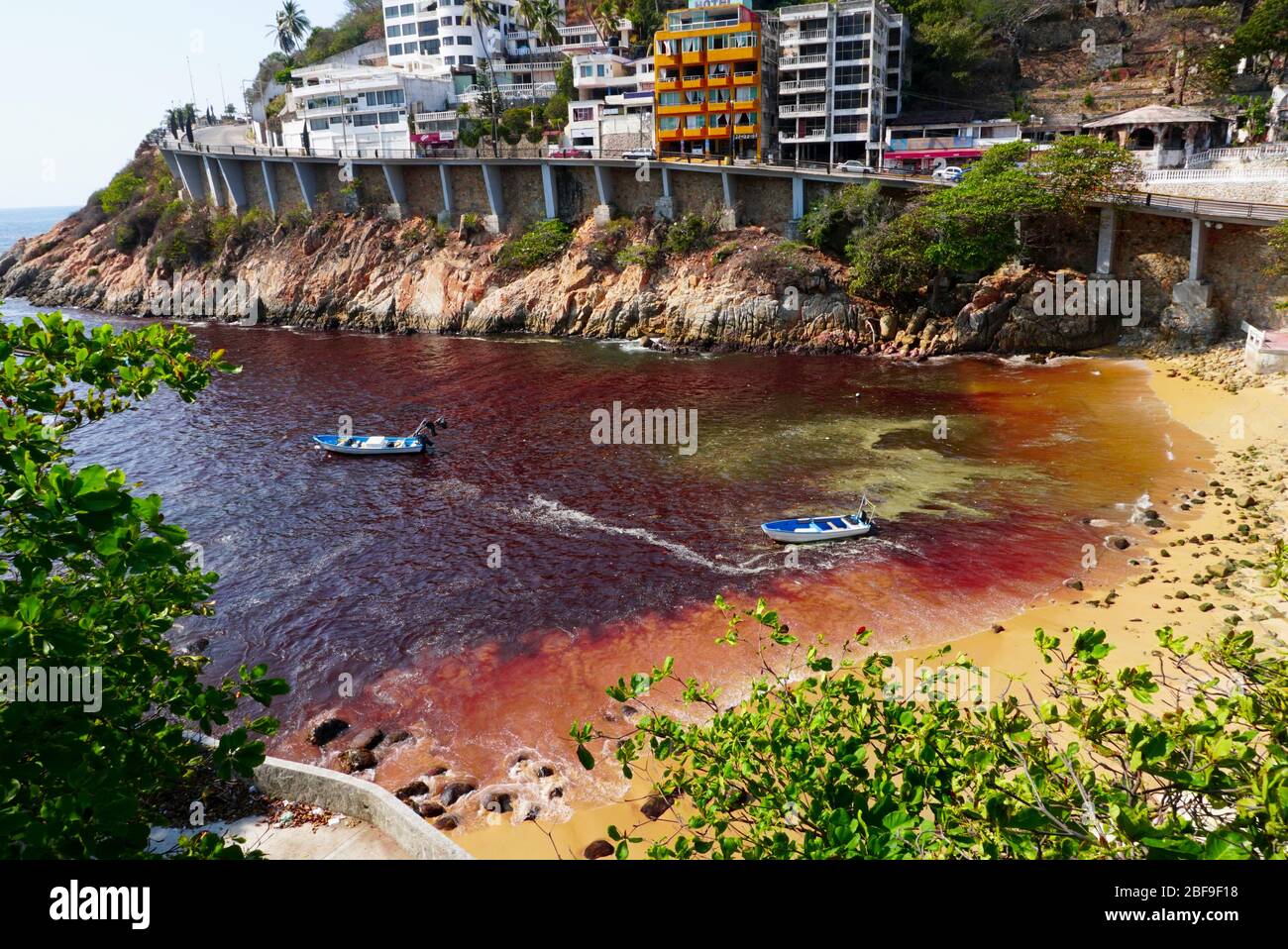 Red tide at Playa L'Angosta on the Pacific Ocean, Acapulco, Mexico. Stock Photohttps://www.alamy.com/image-license-details/?v=1https://www.alamy.com/red-tide-at-playa-langosta-on-the-pacific-ocean-acapulco-mexico-image353636564.html
Red tide at Playa L'Angosta on the Pacific Ocean, Acapulco, Mexico. Stock Photohttps://www.alamy.com/image-license-details/?v=1https://www.alamy.com/red-tide-at-playa-langosta-on-the-pacific-ocean-acapulco-mexico-image353636564.htmlRM2BF9F18–Red tide at Playa L'Angosta on the Pacific Ocean, Acapulco, Mexico.
 . English: Brian Funnell recovering core samples at the site of the Ludham Borehole, funded by the Royal Society of London, 1959. Image with kind permission Prof R.G. West. The Ludham Borehole was a geological research borehole drilled in 1959 near Ludham, Norfolk, UK. A continuous core sample of late Pliocene and early Pleistocene sediments of the Crag Group was recovered. Analysis allowed biostratigraphic zonal schemes for fossil pollen,foraminifera, mollusca and dinoflagellates to be constructed for horizons of the Red Crag Formation and Norwich Crag Formations, and for these formations to Stock Photohttps://www.alamy.com/image-license-details/?v=1https://www.alamy.com/english-brian-funnell-recovering-core-samples-at-the-site-of-the-ludham-borehole-funded-by-the-royal-society-of-london-1959-image-with-kind-permission-prof-rg-west-the-ludham-borehole-was-a-geological-research-borehole-drilled-in-1959-near-ludham-norfolk-uk-a-continuous-core-sample-of-late-pliocene-and-early-pleistocene-sediments-of-the-crag-group-was-recovered-analysis-allowed-biostratigraphic-zonal-schemes-for-fossil-pollenforaminifera-mollusca-and-dinoflagellates-to-be-constructed-for-horizons-of-the-red-crag-formation-and-norwich-crag-formations-and-for-these-formations-to-image208042578.html
. English: Brian Funnell recovering core samples at the site of the Ludham Borehole, funded by the Royal Society of London, 1959. Image with kind permission Prof R.G. West. The Ludham Borehole was a geological research borehole drilled in 1959 near Ludham, Norfolk, UK. A continuous core sample of late Pliocene and early Pleistocene sediments of the Crag Group was recovered. Analysis allowed biostratigraphic zonal schemes for fossil pollen,foraminifera, mollusca and dinoflagellates to be constructed for horizons of the Red Crag Formation and Norwich Crag Formations, and for these formations to Stock Photohttps://www.alamy.com/image-license-details/?v=1https://www.alamy.com/english-brian-funnell-recovering-core-samples-at-the-site-of-the-ludham-borehole-funded-by-the-royal-society-of-london-1959-image-with-kind-permission-prof-rg-west-the-ludham-borehole-was-a-geological-research-borehole-drilled-in-1959-near-ludham-norfolk-uk-a-continuous-core-sample-of-late-pliocene-and-early-pleistocene-sediments-of-the-crag-group-was-recovered-analysis-allowed-biostratigraphic-zonal-schemes-for-fossil-pollenforaminifera-mollusca-and-dinoflagellates-to-be-constructed-for-horizons-of-the-red-crag-formation-and-norwich-crag-formations-and-for-these-formations-to-image208042578.htmlRMP2D4C2–. English: Brian Funnell recovering core samples at the site of the Ludham Borehole, funded by the Royal Society of London, 1959. Image with kind permission Prof R.G. West. The Ludham Borehole was a geological research borehole drilled in 1959 near Ludham, Norfolk, UK. A continuous core sample of late Pliocene and early Pleistocene sediments of the Crag Group was recovered. Analysis allowed biostratigraphic zonal schemes for fossil pollen,foraminifera, mollusca and dinoflagellates to be constructed for horizons of the Red Crag Formation and Norwich Crag Formations, and for these formations to
 Peridinea from Ernst Haeckel's Kunstformen der Natur, 1904 Stock Photohttps://www.alamy.com/image-license-details/?v=1https://www.alamy.com/peridinea-from-ernst-haeckels-kunstformen-der-natur-1904-image352829383.html
Peridinea from Ernst Haeckel's Kunstformen der Natur, 1904 Stock Photohttps://www.alamy.com/image-license-details/?v=1https://www.alamy.com/peridinea-from-ernst-haeckels-kunstformen-der-natur-1904-image352829383.htmlRF2BE0NDB–Peridinea from Ernst Haeckel's Kunstformen der Natur, 1904
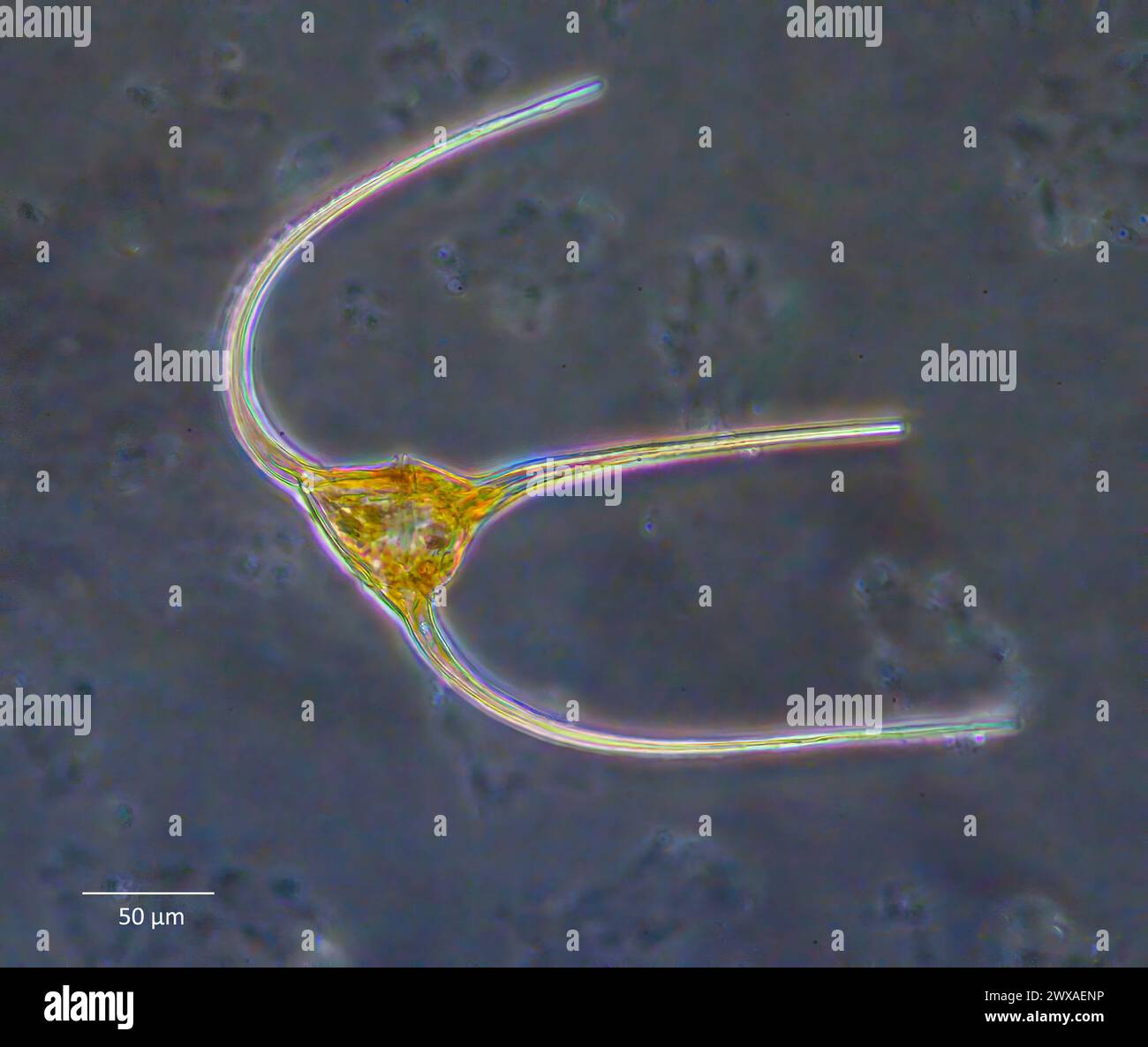 Planktonic dinoflagellate from genus Ceratium collected from coastal surface waters of south-western Norway. Stock Photohttps://www.alamy.com/image-license-details/?v=1https://www.alamy.com/planktonic-dinoflagellate-from-genus-ceratium-collected-from-coastal-surface-waters-of-south-western-norway-image601364674.html
Planktonic dinoflagellate from genus Ceratium collected from coastal surface waters of south-western Norway. Stock Photohttps://www.alamy.com/image-license-details/?v=1https://www.alamy.com/planktonic-dinoflagellate-from-genus-ceratium-collected-from-coastal-surface-waters-of-south-western-norway-image601364674.htmlRM2WXAENP–Planktonic dinoflagellate from genus Ceratium collected from coastal surface waters of south-western Norway.
 Prorocentrum dinoflagellates (blue),coloured scanning electron micrograph (SEM).Dinoflagellates are unicellular protozoans. Stock Photohttps://www.alamy.com/image-license-details/?v=1https://www.alamy.com/stock-photo-prorocentrum-dinoflagellates-bluecoloured-scanning-electron-micrograph-21207770.html
Prorocentrum dinoflagellates (blue),coloured scanning electron micrograph (SEM).Dinoflagellates are unicellular protozoans. Stock Photohttps://www.alamy.com/image-license-details/?v=1https://www.alamy.com/stock-photo-prorocentrum-dinoflagellates-bluecoloured-scanning-electron-micrograph-21207770.htmlRFB6E2MA–Prorocentrum dinoflagellates (blue),coloured scanning electron micrograph (SEM).Dinoflagellates are unicellular protozoans.
 Plankton phytopl'ton Phytoplankton x 30, various diatoms, dino-flagellates, etc. English Channel Stock Photohttps://www.alamy.com/image-license-details/?v=1https://www.alamy.com/plankton-phytoplton-phytoplankton-x-30-various-diatoms-dino-flagellates-etc-english-channel-image543856840.html
Plankton phytopl'ton Phytoplankton x 30, various diatoms, dino-flagellates, etc. English Channel Stock Photohttps://www.alamy.com/image-license-details/?v=1https://www.alamy.com/plankton-phytoplton-phytoplankton-x-30-various-diatoms-dino-flagellates-etc-english-channel-image543856840.htmlRM2PGPPXG–Plankton phytopl'ton Phytoplankton x 30, various diatoms, dino-flagellates, etc. English Channel
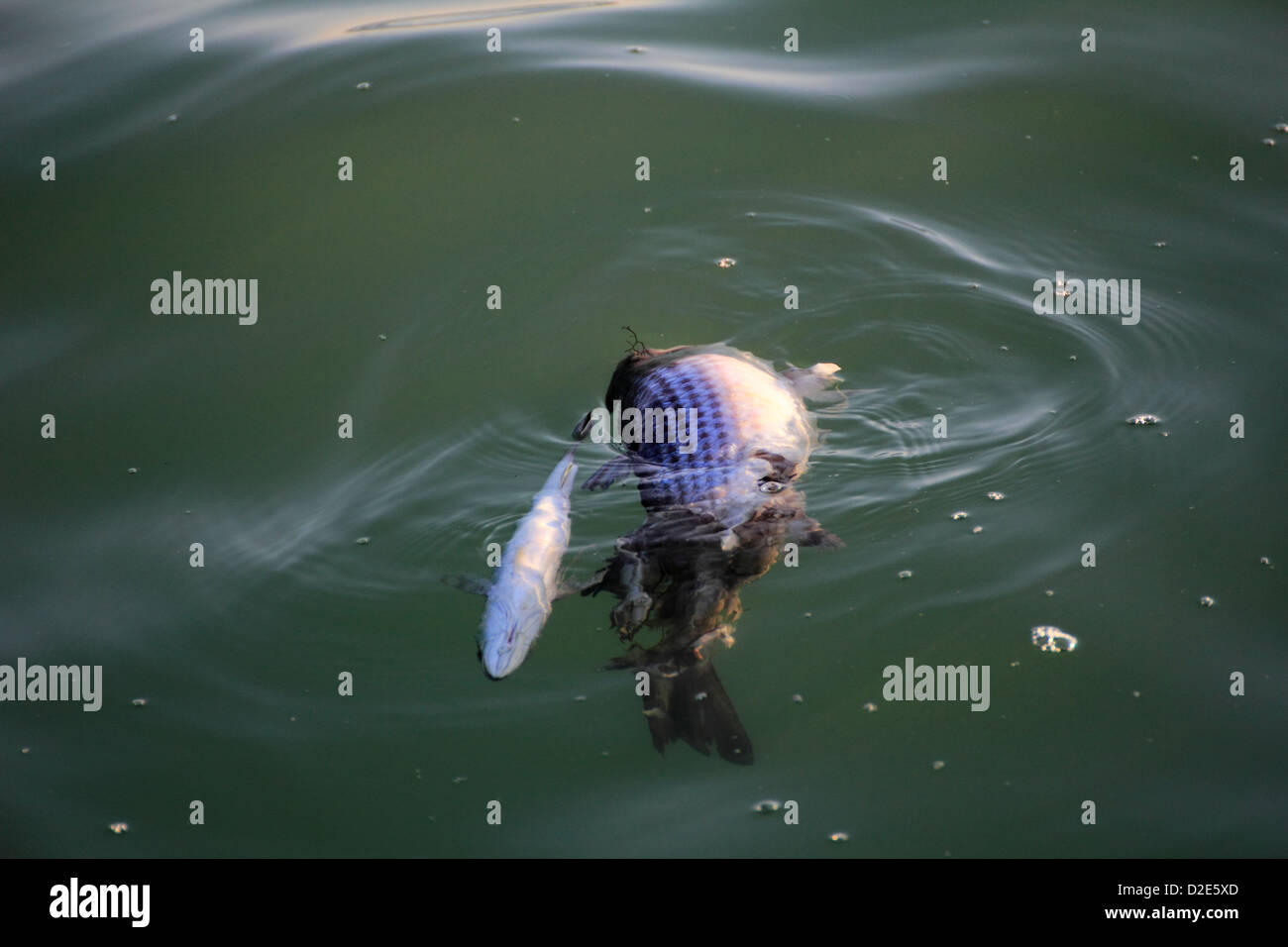 Fish killed by a red tide Karenia brevis dinoflagellates in the Gulf of Mexico in Florida, USA Stock Photohttps://www.alamy.com/image-license-details/?v=1https://www.alamy.com/stock-photo-fish-killed-by-a-red-tide-karenia-brevis-dinoflagellates-in-the-gulf-53172405.html
Fish killed by a red tide Karenia brevis dinoflagellates in the Gulf of Mexico in Florida, USA Stock Photohttps://www.alamy.com/image-license-details/?v=1https://www.alamy.com/stock-photo-fish-killed-by-a-red-tide-karenia-brevis-dinoflagellates-in-the-gulf-53172405.htmlRFD2E5XD–Fish killed by a red tide Karenia brevis dinoflagellates in the Gulf of Mexico in Florida, USA
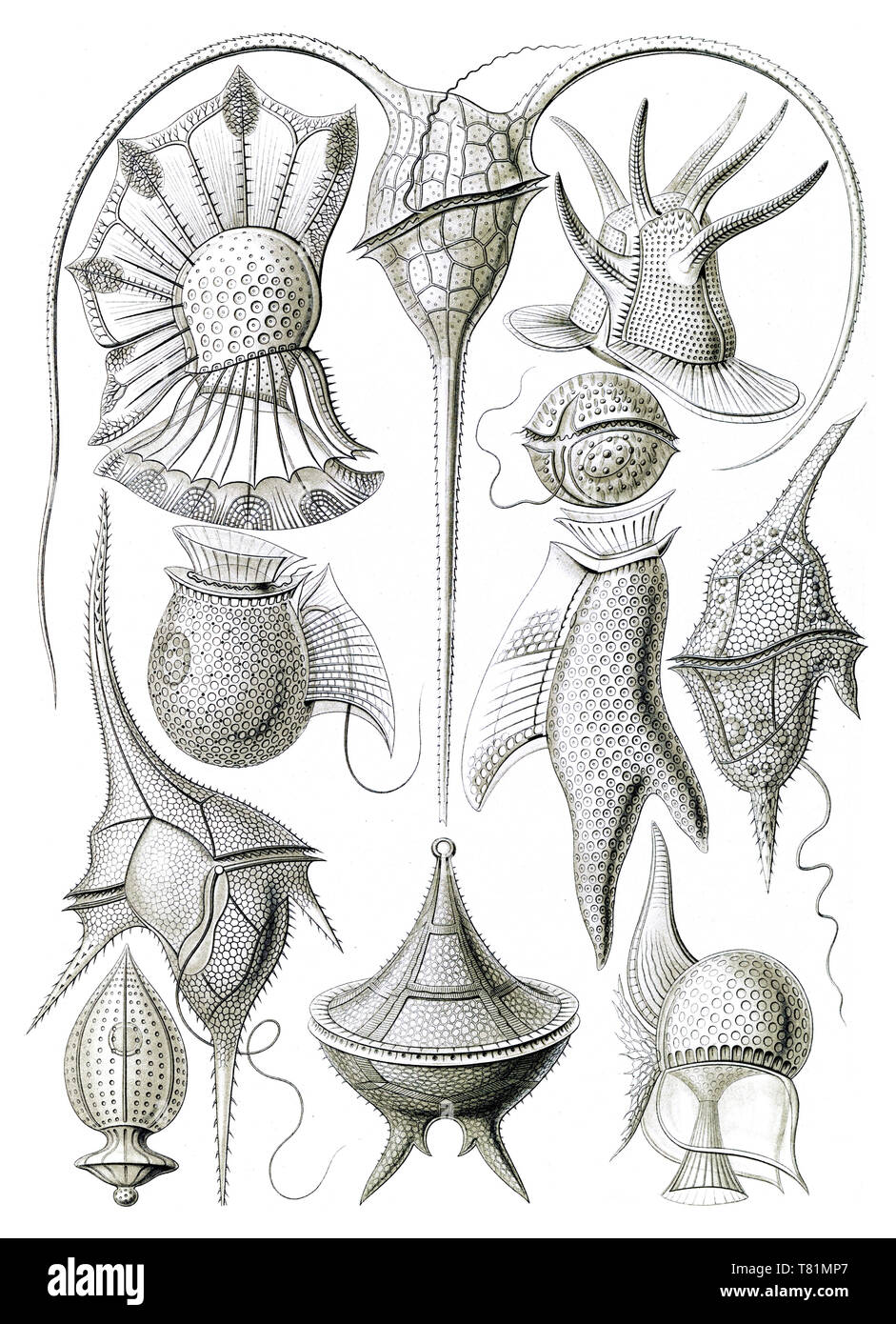 Ernst Haeckel, Dinoflagellates Stock Photohttps://www.alamy.com/image-license-details/?v=1https://www.alamy.com/ernst-haeckel-dinoflagellates-image245900655.html
Ernst Haeckel, Dinoflagellates Stock Photohttps://www.alamy.com/image-license-details/?v=1https://www.alamy.com/ernst-haeckel-dinoflagellates-image245900655.htmlRMT81MP7–Ernst Haeckel, Dinoflagellates
 The genus Ceratium includes species of freshwater and marine dinoflagellates. Most species of Ceratium are unicellular organisms that are characterize Stock Photohttps://www.alamy.com/image-license-details/?v=1https://www.alamy.com/the-genus-ceratium-includes-species-of-freshwater-and-marine-dinoflagellates-most-species-of-ceratium-are-unicellular-organisms-that-are-characterize-image327692876.html
The genus Ceratium includes species of freshwater and marine dinoflagellates. Most species of Ceratium are unicellular organisms that are characterize Stock Photohttps://www.alamy.com/image-license-details/?v=1https://www.alamy.com/the-genus-ceratium-includes-species-of-freshwater-and-marine-dinoflagellates-most-species-of-ceratium-are-unicellular-organisms-that-are-characterize-image327692876.htmlRM2A13KH0–The genus Ceratium includes species of freshwater and marine dinoflagellates. Most species of Ceratium are unicellular organisms that are characterize
 Dinoflagellate Fossil Stock Photohttps://www.alamy.com/image-license-details/?v=1https://www.alamy.com/stock-photo-dinoflagellate-fossil-134943027.html
Dinoflagellate Fossil Stock Photohttps://www.alamy.com/image-license-details/?v=1https://www.alamy.com/stock-photo-dinoflagellate-fossil-134943027.htmlRMHRF55R–Dinoflagellate Fossil
 Bioluminescence by dinoflagellates disturbed by waves off Ruby Beach in Olympic National Park, Washington State, USA Stock Photohttps://www.alamy.com/image-license-details/?v=1https://www.alamy.com/bioluminescence-by-dinoflagellates-disturbed-by-waves-off-ruby-beach-in-olympic-national-park-washington-state-usa-image562647416.html
Bioluminescence by dinoflagellates disturbed by waves off Ruby Beach in Olympic National Park, Washington State, USA Stock Photohttps://www.alamy.com/image-license-details/?v=1https://www.alamy.com/bioluminescence-by-dinoflagellates-disturbed-by-waves-off-ruby-beach-in-olympic-national-park-washington-state-usa-image562647416.htmlRF2RKAPEG–Bioluminescence by dinoflagellates disturbed by waves off Ruby Beach in Olympic National Park, Washington State, USA
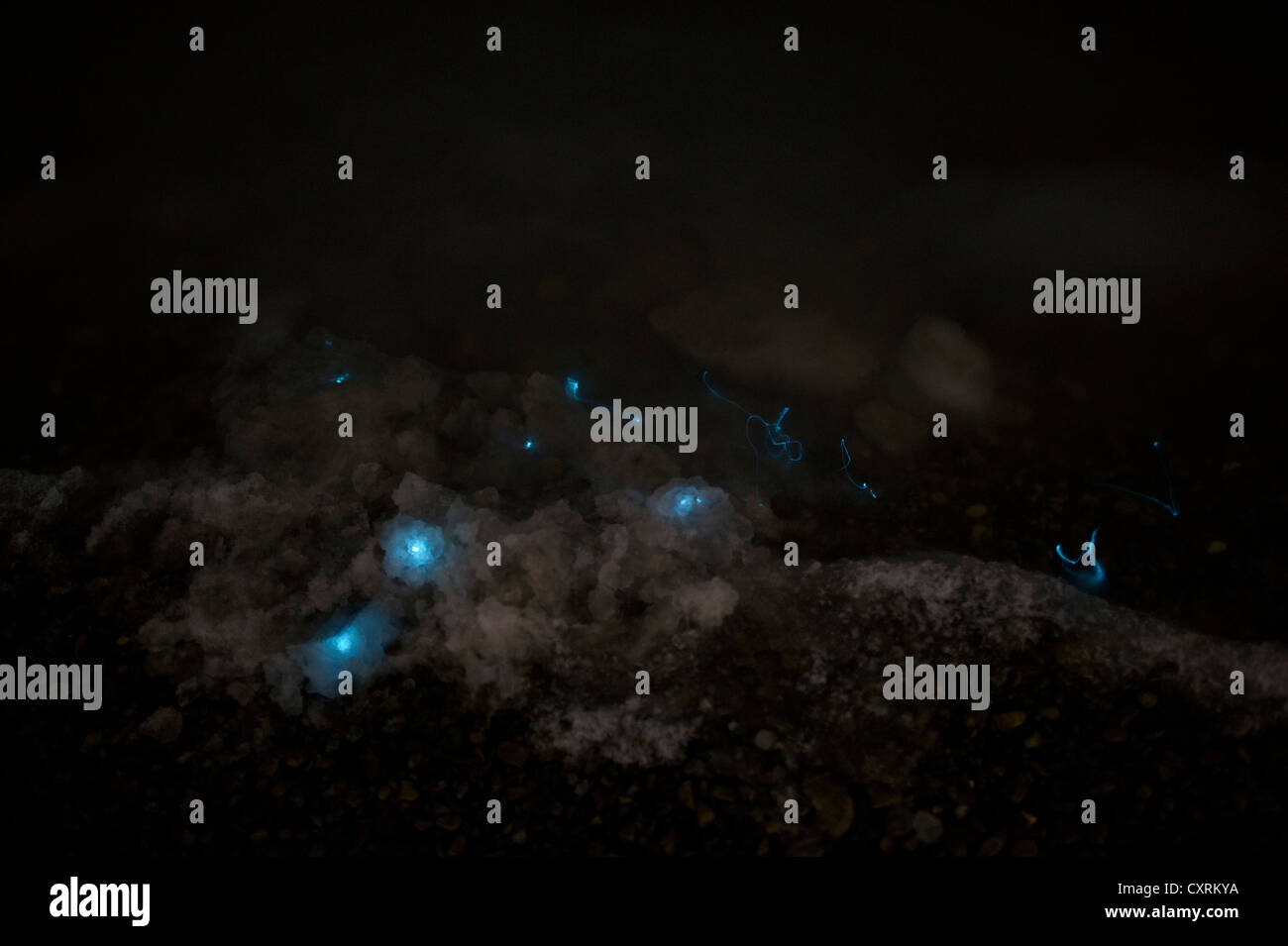 Noctiluca scintillans, commonly known as the Sea Sparkle, bioluminiscence of dinoflagellates, luminous protozoa, zooplankton Stock Photohttps://www.alamy.com/image-license-details/?v=1https://www.alamy.com/stock-photo-noctiluca-scintillans-commonly-known-as-the-sea-sparkle-bioluminiscence-50922350.html
Noctiluca scintillans, commonly known as the Sea Sparkle, bioluminiscence of dinoflagellates, luminous protozoa, zooplankton Stock Photohttps://www.alamy.com/image-license-details/?v=1https://www.alamy.com/stock-photo-noctiluca-scintillans-commonly-known-as-the-sea-sparkle-bioluminiscence-50922350.htmlRMCXRKYA–Noctiluca scintillans, commonly known as the Sea Sparkle, bioluminiscence of dinoflagellates, luminous protozoa, zooplankton
 Noctiluca miliaris, Print, Noctiluca scintillans, commonly known as the sea sparkle, and also published as Noctiluca miliaris, is a free-living, marine-dwelling species of dinoflagellate that exhibits bioluminescence when disturbed (popularly known as mareel). Its bioluminescence is produced throughout the cytoplasm of this single-celled protist, by a luciferin-luciferase reaction in thousands of spherically shaped organelles, called scintillons Stock Photohttps://www.alamy.com/image-license-details/?v=1https://www.alamy.com/noctiluca-miliaris-print-noctiluca-scintillans-commonly-known-as-the-sea-sparkle-and-also-published-as-noctiluca-miliaris-is-a-free-living-marine-dwelling-species-of-dinoflagellate-that-exhibits-bioluminescence-when-disturbed-popularly-known-as-mareel-its-bioluminescence-is-produced-throughout-the-cytoplasm-of-this-single-celled-protist-by-a-luciferin-luciferase-reaction-in-thousands-of-spherically-shaped-organelles-called-scintillons-image328693420.html
Noctiluca miliaris, Print, Noctiluca scintillans, commonly known as the sea sparkle, and also published as Noctiluca miliaris, is a free-living, marine-dwelling species of dinoflagellate that exhibits bioluminescence when disturbed (popularly known as mareel). Its bioluminescence is produced throughout the cytoplasm of this single-celled protist, by a luciferin-luciferase reaction in thousands of spherically shaped organelles, called scintillons Stock Photohttps://www.alamy.com/image-license-details/?v=1https://www.alamy.com/noctiluca-miliaris-print-noctiluca-scintillans-commonly-known-as-the-sea-sparkle-and-also-published-as-noctiluca-miliaris-is-a-free-living-marine-dwelling-species-of-dinoflagellate-that-exhibits-bioluminescence-when-disturbed-popularly-known-as-mareel-its-bioluminescence-is-produced-throughout-the-cytoplasm-of-this-single-celled-protist-by-a-luciferin-luciferase-reaction-in-thousands-of-spherically-shaped-organelles-called-scintillons-image328693420.htmlRM2A2N7PM–Noctiluca miliaris, Print, Noctiluca scintillans, commonly known as the sea sparkle, and also published as Noctiluca miliaris, is a free-living, marine-dwelling species of dinoflagellate that exhibits bioluminescence when disturbed (popularly known as mareel). Its bioluminescence is produced throughout the cytoplasm of this single-celled protist, by a luciferin-luciferase reaction in thousands of spherically shaped organelles, called scintillons
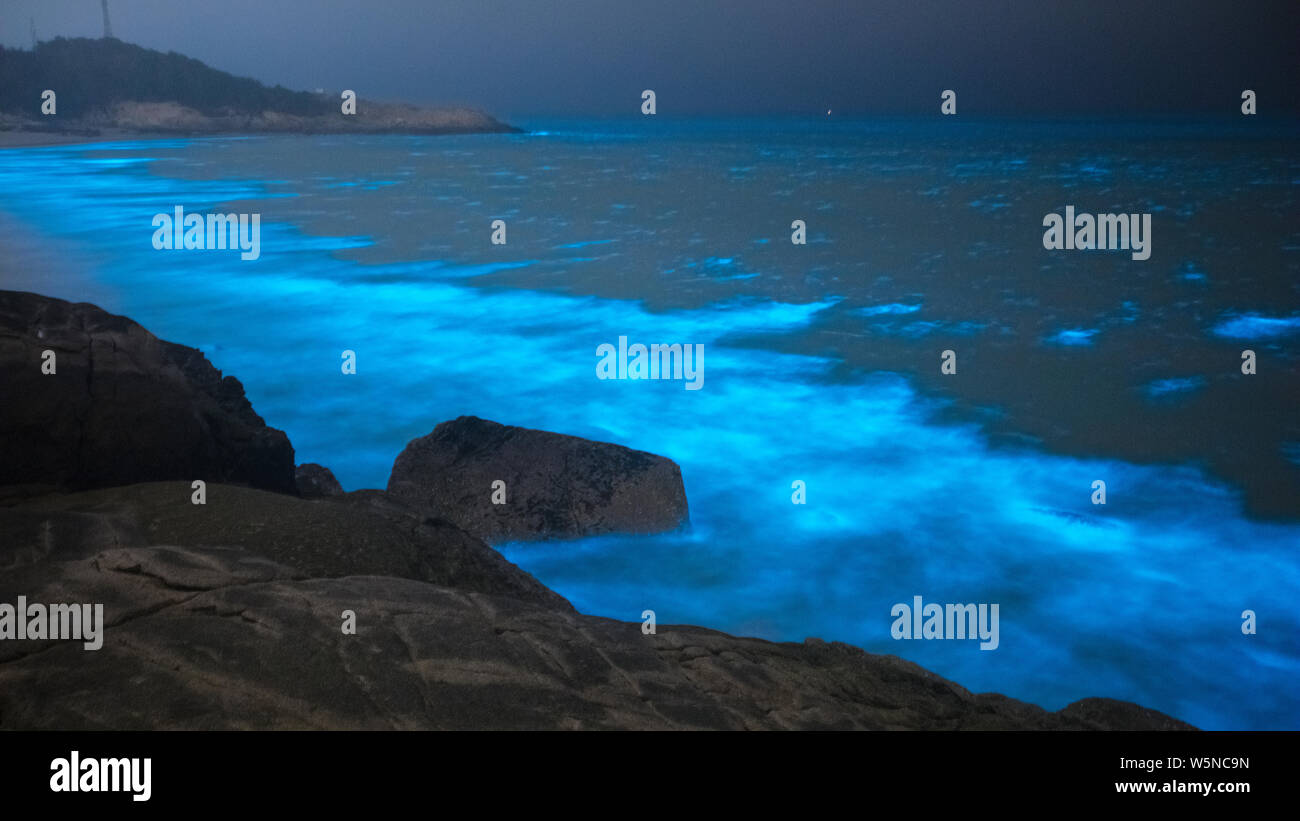 An algal bloom of dinoflagellate illuminates sea water glowing blue at the coast near the Fuzhou Changle International Airport in Fuzhou city, southea Stock Photohttps://www.alamy.com/image-license-details/?v=1https://www.alamy.com/an-algal-bloom-of-dinoflagellate-illuminates-sea-water-glowing-blue-at-the-coast-near-the-fuzhou-changle-international-airport-in-fuzhou-city-southea-image261699473.html
An algal bloom of dinoflagellate illuminates sea water glowing blue at the coast near the Fuzhou Changle International Airport in Fuzhou city, southea Stock Photohttps://www.alamy.com/image-license-details/?v=1https://www.alamy.com/an-algal-bloom-of-dinoflagellate-illuminates-sea-water-glowing-blue-at-the-coast-near-the-fuzhou-changle-international-airport-in-fuzhou-city-southea-image261699473.htmlRMW5NC9N–An algal bloom of dinoflagellate illuminates sea water glowing blue at the coast near the Fuzhou Changle International Airport in Fuzhou city, southea
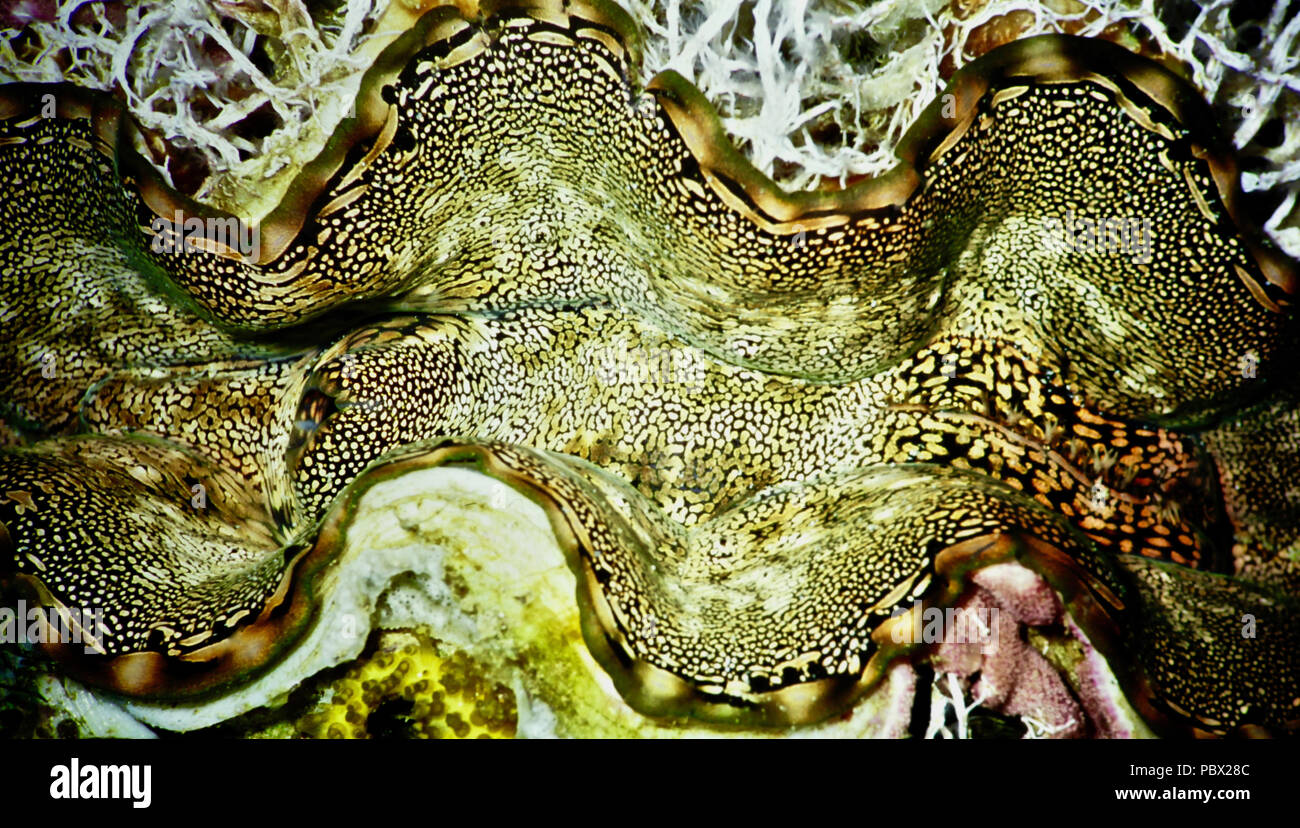 This shows the tissues of a giant clam (Tridacna gigas). Individuals can grow to one metre in length, weigh 200 kilograms and live for 100 years. The striking and beautiful patterns in the mollusc's mantle are formed by multi-coloured colonies of single-celled dinoflagellate symbiotic algae. In exchange for a safe place to live, the algae provide the clam with sugars through photosynthesis. Sadly, giant clams are becoming rare, due to the effects of global warming and pollution - and because their meat is highly prized by humans. The IUCN Red List states that it is vulnerable. Egyptian Red Sea Stock Photohttps://www.alamy.com/image-license-details/?v=1https://www.alamy.com/this-shows-the-tissues-of-a-giant-clam-tridacna-gigas-individuals-can-grow-to-one-metre-in-length-weigh-200-kilograms-and-live-for-100-years-the-striking-and-beautiful-patterns-in-the-molluscs-mantle-are-formed-by-multi-coloured-colonies-of-single-celled-dinoflagellate-symbiotic-algae-in-exchange-for-a-safe-place-to-live-the-algae-provide-the-clam-with-sugars-through-photosynthesis-sadly-giant-clams-are-becoming-rare-due-to-the-effects-of-global-warming-and-pollution-and-because-their-meat-is-highly-prized-by-humans-the-iucn-red-list-states-that-it-is-vulnerable-egyptian-red-sea-image213858188.html
This shows the tissues of a giant clam (Tridacna gigas). Individuals can grow to one metre in length, weigh 200 kilograms and live for 100 years. The striking and beautiful patterns in the mollusc's mantle are formed by multi-coloured colonies of single-celled dinoflagellate symbiotic algae. In exchange for a safe place to live, the algae provide the clam with sugars through photosynthesis. Sadly, giant clams are becoming rare, due to the effects of global warming and pollution - and because their meat is highly prized by humans. The IUCN Red List states that it is vulnerable. Egyptian Red Sea Stock Photohttps://www.alamy.com/image-license-details/?v=1https://www.alamy.com/this-shows-the-tissues-of-a-giant-clam-tridacna-gigas-individuals-can-grow-to-one-metre-in-length-weigh-200-kilograms-and-live-for-100-years-the-striking-and-beautiful-patterns-in-the-molluscs-mantle-are-formed-by-multi-coloured-colonies-of-single-celled-dinoflagellate-symbiotic-algae-in-exchange-for-a-safe-place-to-live-the-algae-provide-the-clam-with-sugars-through-photosynthesis-sadly-giant-clams-are-becoming-rare-due-to-the-effects-of-global-warming-and-pollution-and-because-their-meat-is-highly-prized-by-humans-the-iucn-red-list-states-that-it-is-vulnerable-egyptian-red-sea-image213858188.htmlRFPBX28C–This shows the tissues of a giant clam (Tridacna gigas). Individuals can grow to one metre in length, weigh 200 kilograms and live for 100 years. The striking and beautiful patterns in the mollusc's mantle are formed by multi-coloured colonies of single-celled dinoflagellate symbiotic algae. In exchange for a safe place to live, the algae provide the clam with sugars through photosynthesis. Sadly, giant clams are becoming rare, due to the effects of global warming and pollution - and because their meat is highly prized by humans. The IUCN Red List states that it is vulnerable. Egyptian Red Sea
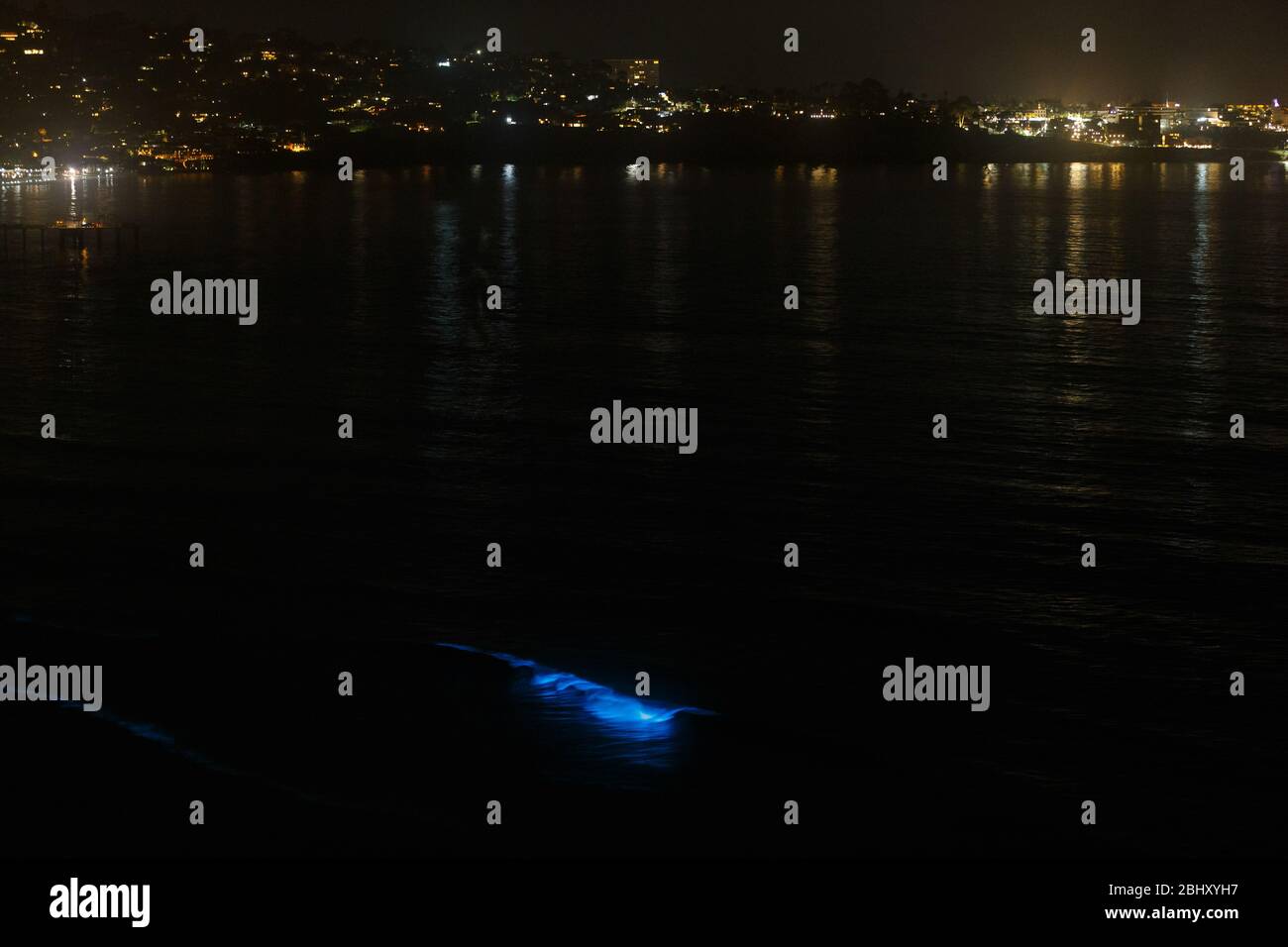 Ocean waves at Blacks Beach glow with bioluminescence at night during a red tide event in La Jolla, California. Stock Photohttps://www.alamy.com/image-license-details/?v=1https://www.alamy.com/ocean-waves-at-blacks-beach-glow-with-bioluminescence-at-night-during-a-red-tide-event-in-la-jolla-california-image355248915.html
Ocean waves at Blacks Beach glow with bioluminescence at night during a red tide event in La Jolla, California. Stock Photohttps://www.alamy.com/image-license-details/?v=1https://www.alamy.com/ocean-waves-at-blacks-beach-glow-with-bioluminescence-at-night-during-a-red-tide-event-in-la-jolla-california-image355248915.htmlRF2BHXYH7–Ocean waves at Blacks Beach glow with bioluminescence at night during a red tide event in La Jolla, California.
 Marine Phytoplankton, dinoflagellate, Bacteriastrum, ceratium, diatoms/plankton from the Gullman fjord, Sweden 1995, PHOTOMICROGRAPH Stock Photohttps://www.alamy.com/image-license-details/?v=1https://www.alamy.com/marine-phytoplankton-dinoflagellate-bacteriastrum-ceratium-diatomsplankton-from-the-gullman-fjord-sweden-1995-photomicrograph-image436733969.html
Marine Phytoplankton, dinoflagellate, Bacteriastrum, ceratium, diatoms/plankton from the Gullman fjord, Sweden 1995, PHOTOMICROGRAPH Stock Photohttps://www.alamy.com/image-license-details/?v=1https://www.alamy.com/marine-phytoplankton-dinoflagellate-bacteriastrum-ceratium-diatomsplankton-from-the-gullman-fjord-sweden-1995-photomicrograph-image436733969.htmlRM2GAEXHN–Marine Phytoplankton, dinoflagellate, Bacteriastrum, ceratium, diatoms/plankton from the Gullman fjord, Sweden 1995, PHOTOMICROGRAPH
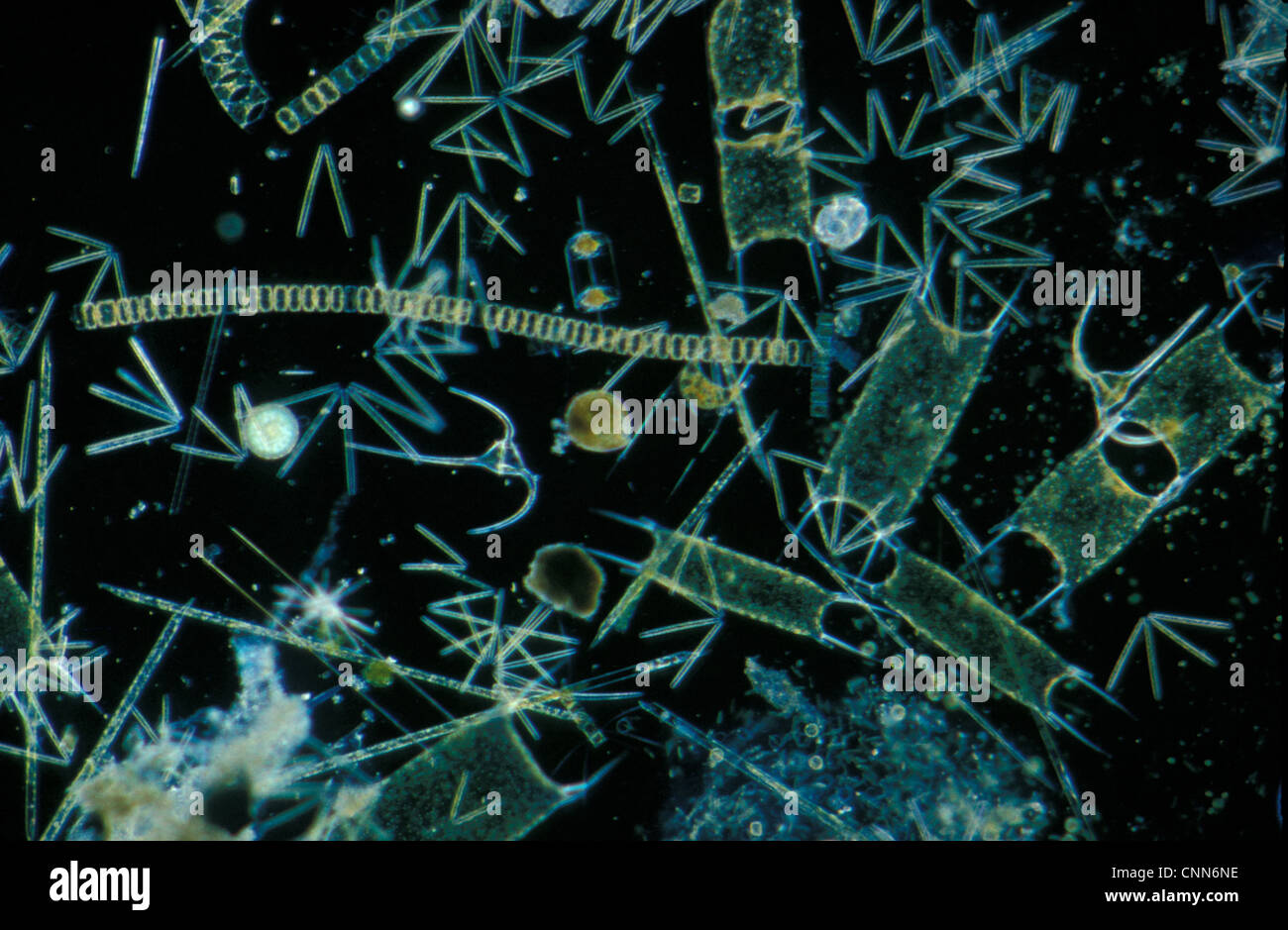 Plankton-Phytopl'ton X20 / various species of diatom & dinoflagellates / English Channel Stock Photohttps://www.alamy.com/image-license-details/?v=1https://www.alamy.com/stock-photo-plankton-phytoplton-x20-various-species-of-diatom-dinoflagellates-47794810.html
Plankton-Phytopl'ton X20 / various species of diatom & dinoflagellates / English Channel Stock Photohttps://www.alamy.com/image-license-details/?v=1https://www.alamy.com/stock-photo-plankton-phytoplton-x20-various-species-of-diatom-dinoflagellates-47794810.htmlRMCNN6NE–Plankton-Phytopl'ton X20 / various species of diatom & dinoflagellates / English Channel
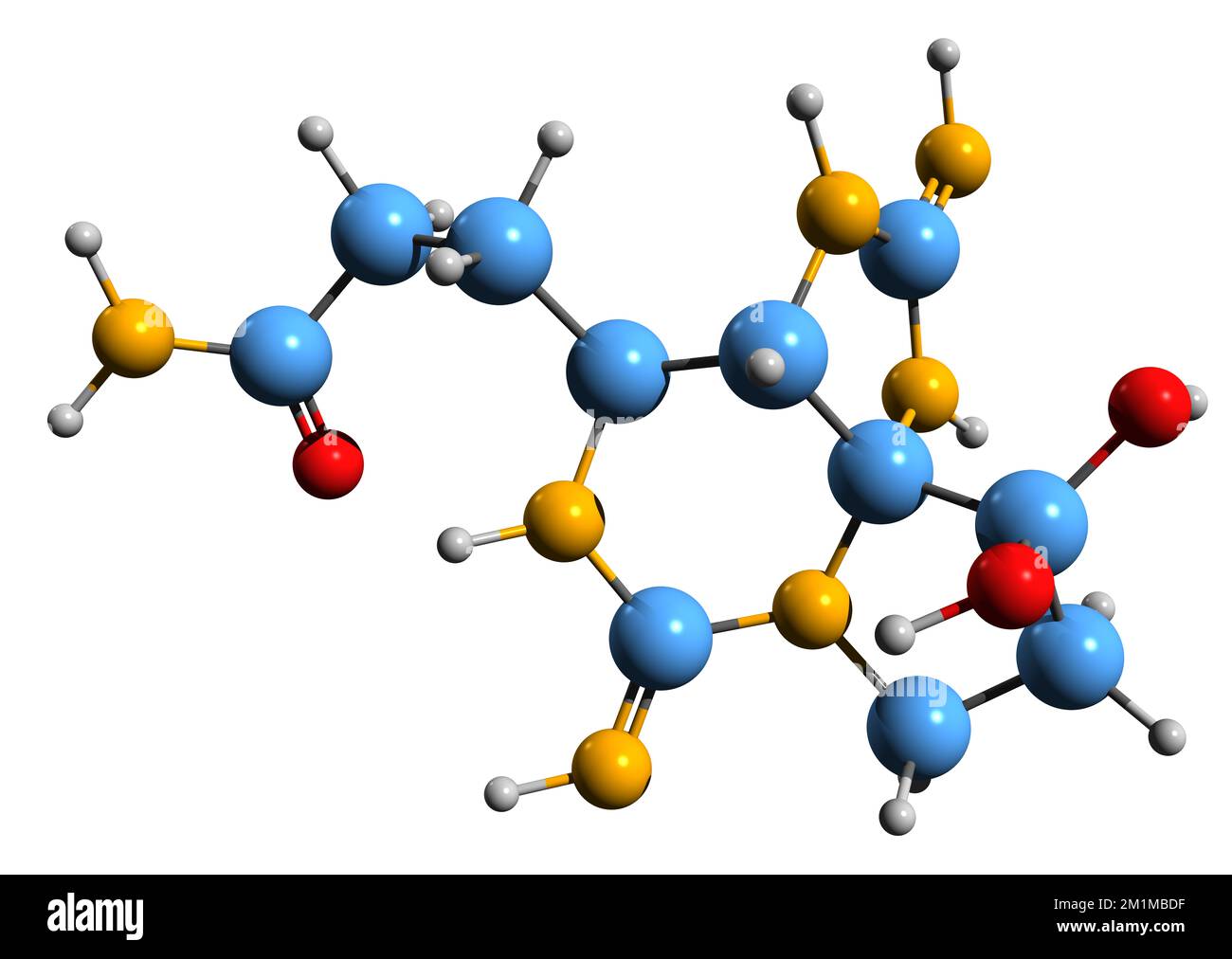 3D image of Saxitoxin skeletal formula - molecular chemical structure of shellfish neurotoxin isolated on white background Stock Photohttps://www.alamy.com/image-license-details/?v=1https://www.alamy.com/3d-image-of-saxitoxin-skeletal-formula-molecular-chemical-structure-of-shellfish-neurotoxin-isolated-on-white-background-image500163371.html
3D image of Saxitoxin skeletal formula - molecular chemical structure of shellfish neurotoxin isolated on white background Stock Photohttps://www.alamy.com/image-license-details/?v=1https://www.alamy.com/3d-image-of-saxitoxin-skeletal-formula-molecular-chemical-structure-of-shellfish-neurotoxin-isolated-on-white-background-image500163371.htmlRF2M1MBDF–3D image of Saxitoxin skeletal formula - molecular chemical structure of shellfish neurotoxin isolated on white background
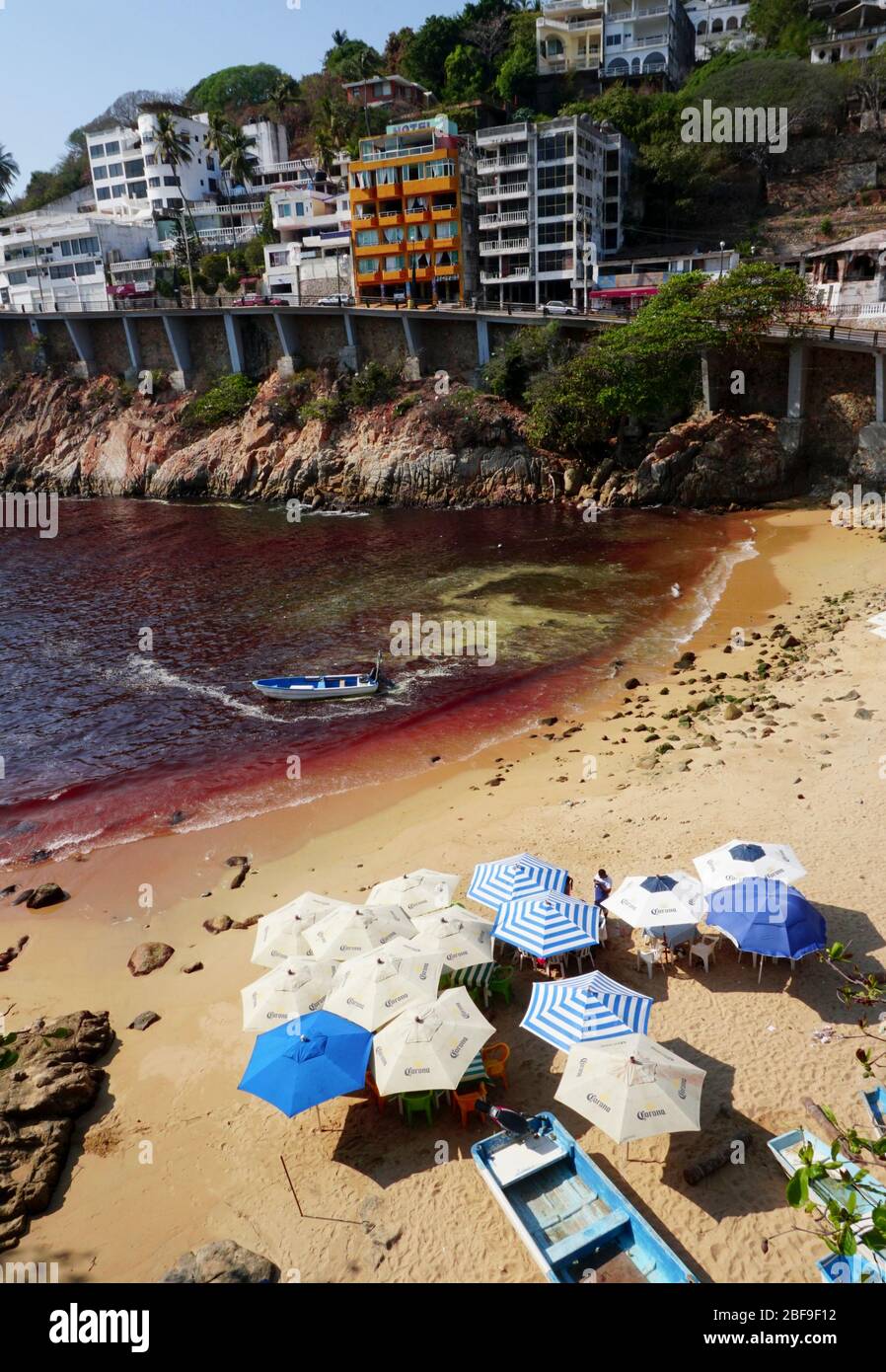 Red tide at Playa L'Angosta on the Pacific Ocean, Acapulco, Mexico. Stock Photohttps://www.alamy.com/image-license-details/?v=1https://www.alamy.com/red-tide-at-playa-langosta-on-the-pacific-ocean-acapulco-mexico-image353636558.html
Red tide at Playa L'Angosta on the Pacific Ocean, Acapulco, Mexico. Stock Photohttps://www.alamy.com/image-license-details/?v=1https://www.alamy.com/red-tide-at-playa-langosta-on-the-pacific-ocean-acapulco-mexico-image353636558.htmlRM2BF9F12–Red tide at Playa L'Angosta on the Pacific Ocean, Acapulco, Mexico.
 Electric Blue Glow on Pacific Coast Waves or Red Tide. The electric blue glow in these pacific coast waves is caused by a dinoflagellate Stock Photohttps://www.alamy.com/image-license-details/?v=1https://www.alamy.com/electric-blue-glow-on-pacific-coast-waves-or-red-tide-the-electric-blue-glow-in-these-pacific-coast-waves-is-caused-by-a-dinoflagellate-image218769717.html
Electric Blue Glow on Pacific Coast Waves or Red Tide. The electric blue glow in these pacific coast waves is caused by a dinoflagellate Stock Photohttps://www.alamy.com/image-license-details/?v=1https://www.alamy.com/electric-blue-glow-on-pacific-coast-waves-or-red-tide-the-electric-blue-glow-in-these-pacific-coast-waves-is-caused-by-a-dinoflagellate-image218769717.htmlRFPKWR05–Electric Blue Glow on Pacific Coast Waves or Red Tide. The electric blue glow in these pacific coast waves is caused by a dinoflagellate
 An illustration of Noticulales in section, are a peculiar order of marine dinoflagellates, vintage line drawing or engraving illustration. Stock Vectorhttps://www.alamy.com/image-license-details/?v=1https://www.alamy.com/an-illustration-of-noticulales-in-section-are-a-peculiar-order-of-marine-dinoflagellates-vintage-line-drawing-or-engraving-illustration-image359332819.html
An illustration of Noticulales in section, are a peculiar order of marine dinoflagellates, vintage line drawing or engraving illustration. Stock Vectorhttps://www.alamy.com/image-license-details/?v=1https://www.alamy.com/an-illustration-of-noticulales-in-section-are-a-peculiar-order-of-marine-dinoflagellates-vintage-line-drawing-or-engraving-illustration-image359332819.htmlRF2BTH0JY–An illustration of Noticulales in section, are a peculiar order of marine dinoflagellates, vintage line drawing or engraving illustration.
 Planktonic dinoflagellates from genus Ceratium collected from coastal surface waters of south-western Norway. Stock Photohttps://www.alamy.com/image-license-details/?v=1https://www.alamy.com/planktonic-dinoflagellates-from-genus-ceratium-collected-from-coastal-surface-waters-of-south-western-norway-image561229004.html
Planktonic dinoflagellates from genus Ceratium collected from coastal surface waters of south-western Norway. Stock Photohttps://www.alamy.com/image-license-details/?v=1https://www.alamy.com/planktonic-dinoflagellates-from-genus-ceratium-collected-from-coastal-surface-waters-of-south-western-norway-image561229004.htmlRM2RH2590–Planktonic dinoflagellates from genus Ceratium collected from coastal surface waters of south-western Norway.
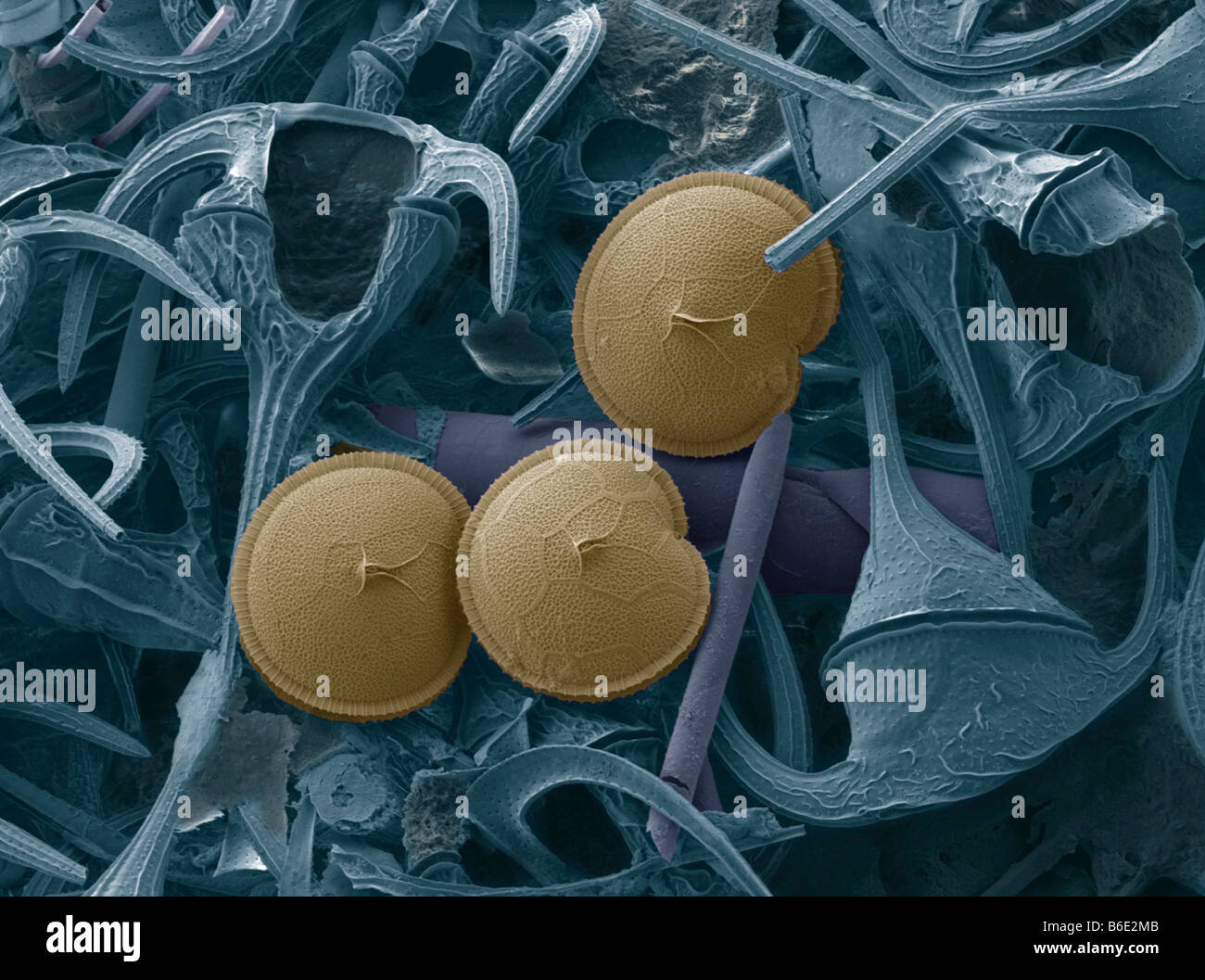 Prorocentrum dinoflagellates (blue),coloured scanning electron micrograph (SEM).Dinoflagellates are unicellular protozoans. Stock Photohttps://www.alamy.com/image-license-details/?v=1https://www.alamy.com/stock-photo-prorocentrum-dinoflagellates-bluecoloured-scanning-electron-micrograph-21207771.html
Prorocentrum dinoflagellates (blue),coloured scanning electron micrograph (SEM).Dinoflagellates are unicellular protozoans. Stock Photohttps://www.alamy.com/image-license-details/?v=1https://www.alamy.com/stock-photo-prorocentrum-dinoflagellates-bluecoloured-scanning-electron-micrograph-21207771.htmlRFB6E2MB–Prorocentrum dinoflagellates (blue),coloured scanning electron micrograph (SEM).Dinoflagellates are unicellular protozoans.
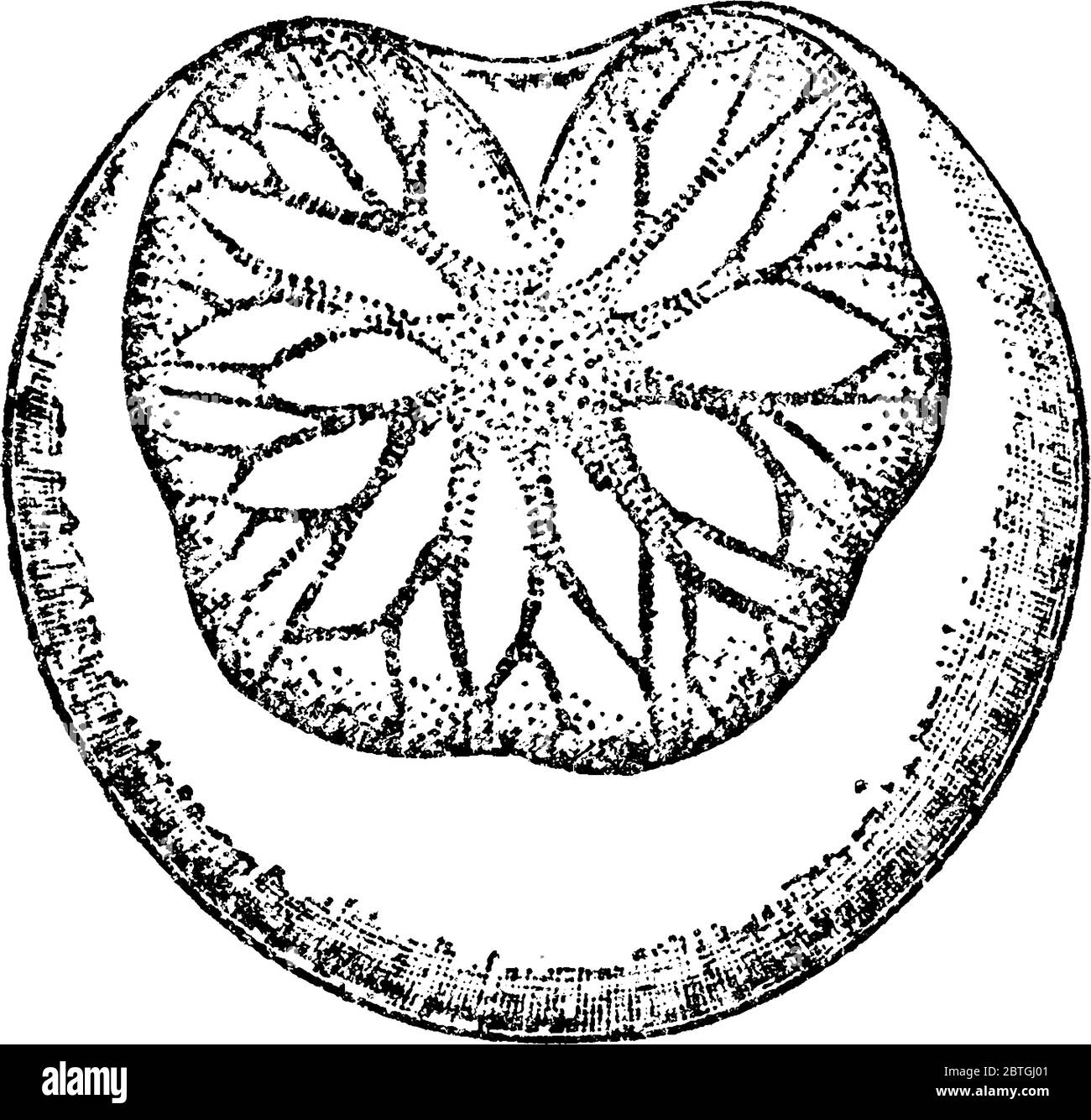 A free-living non-parasitic marine-dwelling species of dinoflagellate that exhibits bioluminescence, vintage line drawing or engraving illustration. Stock Vectorhttps://www.alamy.com/image-license-details/?v=1https://www.alamy.com/a-free-living-non-parasitic-marine-dwelling-species-of-dinoflagellate-that-exhibits-bioluminescence-vintage-line-drawing-or-engraving-illustration-image359324449.html
A free-living non-parasitic marine-dwelling species of dinoflagellate that exhibits bioluminescence, vintage line drawing or engraving illustration. Stock Vectorhttps://www.alamy.com/image-license-details/?v=1https://www.alamy.com/a-free-living-non-parasitic-marine-dwelling-species-of-dinoflagellate-that-exhibits-bioluminescence-vintage-line-drawing-or-engraving-illustration-image359324449.htmlRF2BTGJ01–A free-living non-parasitic marine-dwelling species of dinoflagellate that exhibits bioluminescence, vintage line drawing or engraving illustration.
 Plankton. Coloured scanning electron micrograph (SEM) of plankton containing mainly Ceratium dinoflagellates. A few diatoms are also present. Dinoflagellates are unicellular protozoans. About 90% are found in marine environments as plankton. They range in size from 2 millimetres to less than a hundredth of a milimetre across. These specimens were found off the coast of Scotland. Magnification: x200 when printed at 10 centimetres wide. Stock Photohttps://www.alamy.com/image-license-details/?v=1https://www.alamy.com/plankton-coloured-scanning-electron-micrograph-sem-of-plankton-containing-mainly-ceratium-dinoflagellates-a-few-diatoms-are-also-present-dinoflagellates-are-unicellular-protozoans-about-90-are-found-in-marine-environments-as-plankton-they-range-in-size-from-2-millimetres-to-less-than-a-hundredth-of-a-milimetre-across-these-specimens-were-found-off-the-coast-of-scotland-magnification-x200-when-printed-at-10-centimetres-wide-image364972776.html
Plankton. Coloured scanning electron micrograph (SEM) of plankton containing mainly Ceratium dinoflagellates. A few diatoms are also present. Dinoflagellates are unicellular protozoans. About 90% are found in marine environments as plankton. They range in size from 2 millimetres to less than a hundredth of a milimetre across. These specimens were found off the coast of Scotland. Magnification: x200 when printed at 10 centimetres wide. Stock Photohttps://www.alamy.com/image-license-details/?v=1https://www.alamy.com/plankton-coloured-scanning-electron-micrograph-sem-of-plankton-containing-mainly-ceratium-dinoflagellates-a-few-diatoms-are-also-present-dinoflagellates-are-unicellular-protozoans-about-90-are-found-in-marine-environments-as-plankton-they-range-in-size-from-2-millimetres-to-less-than-a-hundredth-of-a-milimetre-across-these-specimens-were-found-off-the-coast-of-scotland-magnification-x200-when-printed-at-10-centimetres-wide-image364972776.htmlRF2C5NXE0–Plankton. Coloured scanning electron micrograph (SEM) of plankton containing mainly Ceratium dinoflagellates. A few diatoms are also present. Dinoflagellates are unicellular protozoans. About 90% are found in marine environments as plankton. They range in size from 2 millimetres to less than a hundredth of a milimetre across. These specimens were found off the coast of Scotland. Magnification: x200 when printed at 10 centimetres wide.
 Red Tide caused by dinoflagellates (Noctiluca sp) source of bioluminescence, Bahia de Los Angeles, Baja California, MEXICO Stock Photohttps://www.alamy.com/image-license-details/?v=1https://www.alamy.com/stock-photo-red-tide-caused-by-dinoflagellates-noctiluca-sp-source-of-bioluminescence-13292923.html
Red Tide caused by dinoflagellates (Noctiluca sp) source of bioluminescence, Bahia de Los Angeles, Baja California, MEXICO Stock Photohttps://www.alamy.com/image-license-details/?v=1https://www.alamy.com/stock-photo-red-tide-caused-by-dinoflagellates-noctiluca-sp-source-of-bioluminescence-13292923.htmlRMAD3GXM–Red Tide caused by dinoflagellates (Noctiluca sp) source of bioluminescence, Bahia de Los Angeles, Baja California, MEXICO
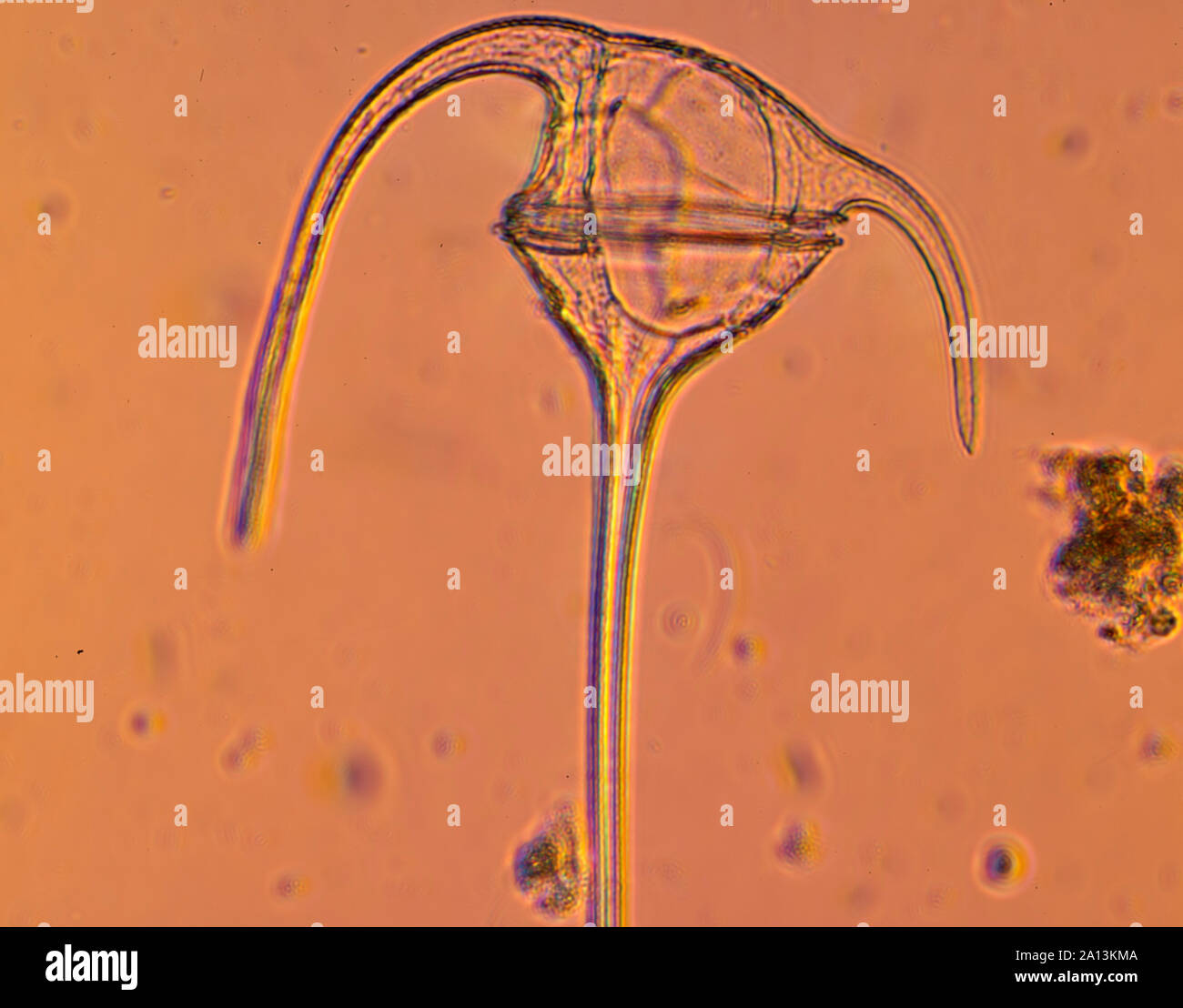 The genus Ceratium includes species of freshwater and marine dinoflagellates. Most species of Ceratium are unicellular organisms that are characterize Stock Photohttps://www.alamy.com/image-license-details/?v=1https://www.alamy.com/the-genus-ceratium-includes-species-of-freshwater-and-marine-dinoflagellates-most-species-of-ceratium-are-unicellular-organisms-that-are-characterize-image327692970.html
The genus Ceratium includes species of freshwater and marine dinoflagellates. Most species of Ceratium are unicellular organisms that are characterize Stock Photohttps://www.alamy.com/image-license-details/?v=1https://www.alamy.com/the-genus-ceratium-includes-species-of-freshwater-and-marine-dinoflagellates-most-species-of-ceratium-are-unicellular-organisms-that-are-characterize-image327692970.htmlRM2A13KMA–The genus Ceratium includes species of freshwater and marine dinoflagellates. Most species of Ceratium are unicellular organisms that are characterize
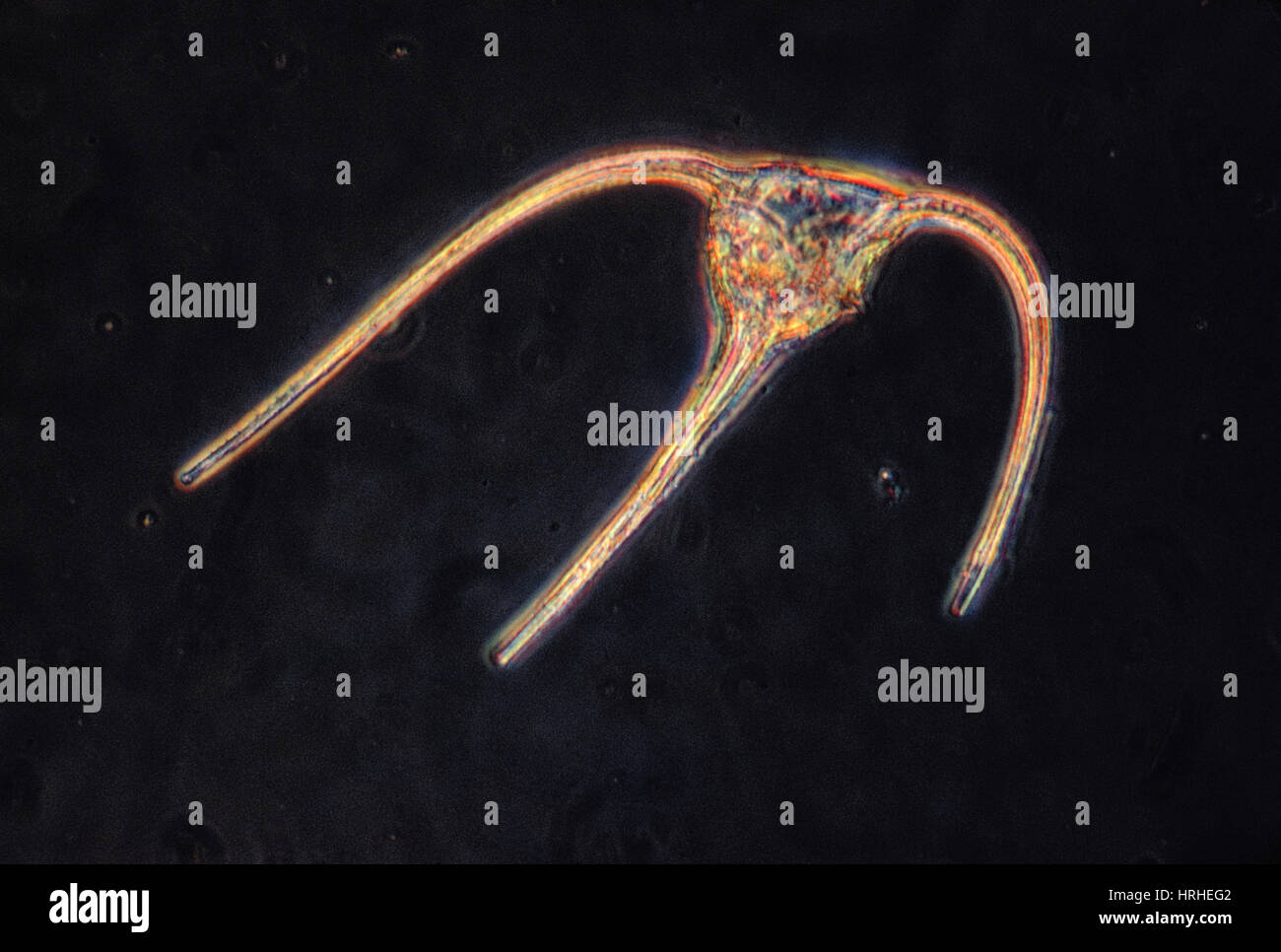 Ceratium sp. Dinoflagellate, LM Stock Photohttps://www.alamy.com/image-license-details/?v=1https://www.alamy.com/stock-photo-ceratium-sp-dinoflagellate-lm-134994274.html
Ceratium sp. Dinoflagellate, LM Stock Photohttps://www.alamy.com/image-license-details/?v=1https://www.alamy.com/stock-photo-ceratium-sp-dinoflagellate-lm-134994274.htmlRMHRHEG2–Ceratium sp. Dinoflagellate, LM
 Bioluminescence by dinoflagellates disturbed by waves off Ruby Beach in Olympic National Park, Washington State, USA Stock Photohttps://www.alamy.com/image-license-details/?v=1https://www.alamy.com/bioluminescence-by-dinoflagellates-disturbed-by-waves-off-ruby-beach-in-olympic-national-park-washington-state-usa-image562647272.html
Bioluminescence by dinoflagellates disturbed by waves off Ruby Beach in Olympic National Park, Washington State, USA Stock Photohttps://www.alamy.com/image-license-details/?v=1https://www.alamy.com/bioluminescence-by-dinoflagellates-disturbed-by-waves-off-ruby-beach-in-olympic-national-park-washington-state-usa-image562647272.htmlRF2RKAP9C–Bioluminescence by dinoflagellates disturbed by waves off Ruby Beach in Olympic National Park, Washington State, USA
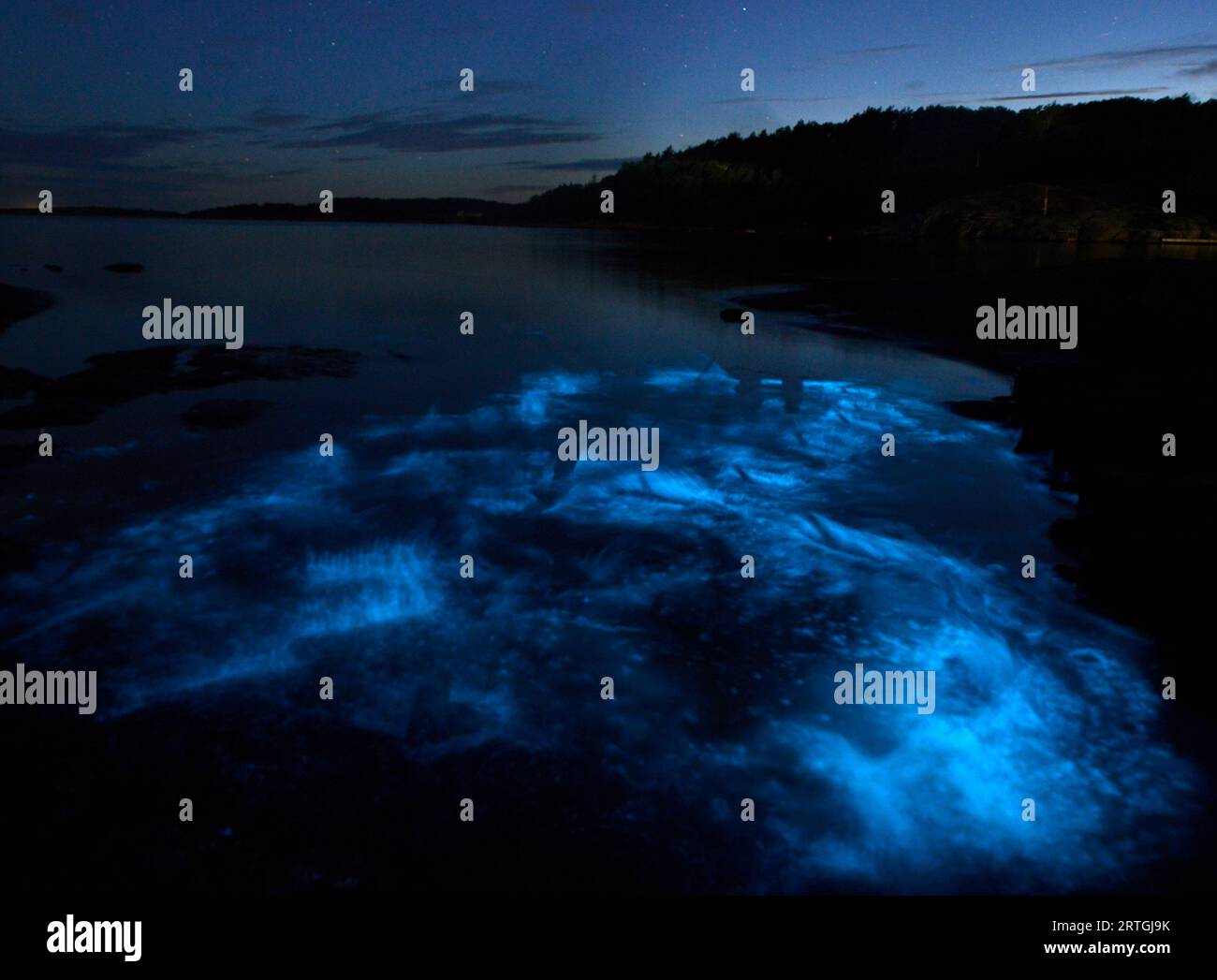 Milky seas, sea fire, Milky seas, mareel, luminous, phenomenon, ocean, seawater, glow, translucently, shades of blue, night, noctiluca, Noctiluca, Stock Photohttps://www.alamy.com/image-license-details/?v=1https://www.alamy.com/milky-seas-sea-fire-milky-seas-mareel-luminous-phenomenon-ocean-seawater-glow-translucently-shades-of-blue-night-noctiluca-noctiluca-image565849135.html
Milky seas, sea fire, Milky seas, mareel, luminous, phenomenon, ocean, seawater, glow, translucently, shades of blue, night, noctiluca, Noctiluca, Stock Photohttps://www.alamy.com/image-license-details/?v=1https://www.alamy.com/milky-seas-sea-fire-milky-seas-mareel-luminous-phenomenon-ocean-seawater-glow-translucently-shades-of-blue-night-noctiluca-noctiluca-image565849135.htmlRM2RTGJ9K–Milky seas, sea fire, Milky seas, mareel, luminous, phenomenon, ocean, seawater, glow, translucently, shades of blue, night, noctiluca, Noctiluca,
 Microscopic view of dinoflagellate Stock Photohttps://www.alamy.com/image-license-details/?v=1https://www.alamy.com/microscopic-view-of-dinoflagellate-image368616768.html
Microscopic view of dinoflagellate Stock Photohttps://www.alamy.com/image-license-details/?v=1https://www.alamy.com/microscopic-view-of-dinoflagellate-image368616768.htmlRF2CBKXCG–Microscopic view of dinoflagellate
 Noctiluca scintillans Milky seas, also called mareel, Stock Photohttps://www.alamy.com/image-license-details/?v=1https://www.alamy.com/noctiluca-scintillans-milky-seas-also-called-mareel-image241399583.html
Noctiluca scintillans Milky seas, also called mareel, Stock Photohttps://www.alamy.com/image-license-details/?v=1https://www.alamy.com/noctiluca-scintillans-milky-seas-also-called-mareel-image241399583.htmlRMT0MKHK–Noctiluca scintillans Milky seas, also called mareel,
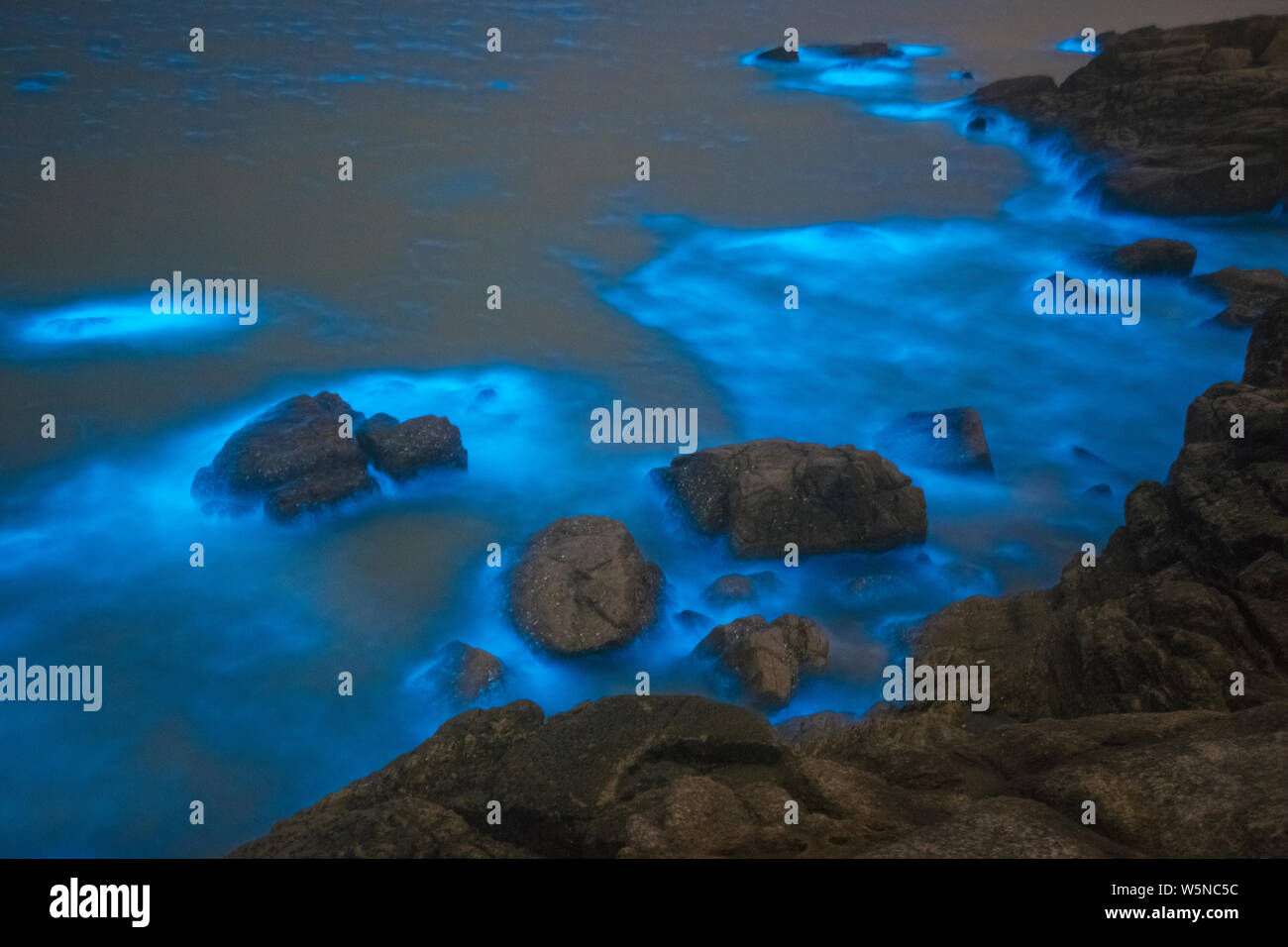 An algal bloom of dinoflagellate illuminates sea water glowing blue at the coast near the Fuzhou Changle International Airport in Fuzhou city, southea Stock Photohttps://www.alamy.com/image-license-details/?v=1https://www.alamy.com/an-algal-bloom-of-dinoflagellate-illuminates-sea-water-glowing-blue-at-the-coast-near-the-fuzhou-changle-international-airport-in-fuzhou-city-southea-image261699352.html
An algal bloom of dinoflagellate illuminates sea water glowing blue at the coast near the Fuzhou Changle International Airport in Fuzhou city, southea Stock Photohttps://www.alamy.com/image-license-details/?v=1https://www.alamy.com/an-algal-bloom-of-dinoflagellate-illuminates-sea-water-glowing-blue-at-the-coast-near-the-fuzhou-changle-international-airport-in-fuzhou-city-southea-image261699352.htmlRMW5NC5C–An algal bloom of dinoflagellate illuminates sea water glowing blue at the coast near the Fuzhou Changle International Airport in Fuzhou city, southea
 Ocean waves at Blacks Beach glow with bioluminescence at night during a red tide event in La Jolla, California. Stock Photohttps://www.alamy.com/image-license-details/?v=1https://www.alamy.com/ocean-waves-at-blacks-beach-glow-with-bioluminescence-at-night-during-a-red-tide-event-in-la-jolla-california-image355249013.html
Ocean waves at Blacks Beach glow with bioluminescence at night during a red tide event in La Jolla, California. Stock Photohttps://www.alamy.com/image-license-details/?v=1https://www.alamy.com/ocean-waves-at-blacks-beach-glow-with-bioluminescence-at-night-during-a-red-tide-event-in-la-jolla-california-image355249013.htmlRF2BHXYMN–Ocean waves at Blacks Beach glow with bioluminescence at night during a red tide event in La Jolla, California.
 Marine Phytoplankton, dinoflagellate, Bacteriastrum, ceratium, diatoms/plankton from the Gullman fjord, Sweden 1995, PHOTOMICROGRAPH Stock Photohttps://www.alamy.com/image-license-details/?v=1https://www.alamy.com/marine-phytoplankton-dinoflagellate-bacteriastrum-ceratium-diatomsplankton-from-the-gullman-fjord-sweden-1995-photomicrograph-image436734029.html
Marine Phytoplankton, dinoflagellate, Bacteriastrum, ceratium, diatoms/plankton from the Gullman fjord, Sweden 1995, PHOTOMICROGRAPH Stock Photohttps://www.alamy.com/image-license-details/?v=1https://www.alamy.com/marine-phytoplankton-dinoflagellate-bacteriastrum-ceratium-diatomsplankton-from-the-gullman-fjord-sweden-1995-photomicrograph-image436734029.htmlRM2GAEXKW–Marine Phytoplankton, dinoflagellate, Bacteriastrum, ceratium, diatoms/plankton from the Gullman fjord, Sweden 1995, PHOTOMICROGRAPH
 This shows the tissues of a giant clam (Tridacna gigas). Individuals can grow to one metre in length, weigh 200 kilograms and live for 100 years. The striking and beautiful patterns in the mollusc's mantle are formed by multi-coloured colonies of single-celled dinoflagellate symbiotic algae. In exchange for a safe place to live, the algae provide the clam with sugars through photosynthesis. Sadly, giant clams are becoming rare, due to the effects of global warming and pollution - and because their meat is highly prized by humans. The IUCN Red List states that it is vulnerable. Egyptian Red Sea Stock Photohttps://www.alamy.com/image-license-details/?v=1https://www.alamy.com/this-shows-the-tissues-of-a-giant-clam-tridacna-gigas-individuals-can-grow-to-one-metre-in-length-weigh-200-kilograms-and-live-for-100-years-the-striking-and-beautiful-patterns-in-the-molluscs-mantle-are-formed-by-multi-coloured-colonies-of-single-celled-dinoflagellate-symbiotic-algae-in-exchange-for-a-safe-place-to-live-the-algae-provide-the-clam-with-sugars-through-photosynthesis-sadly-giant-clams-are-becoming-rare-due-to-the-effects-of-global-warming-and-pollution-and-because-their-meat-is-highly-prized-by-humans-the-iucn-red-list-states-that-it-is-vulnerable-egyptian-red-sea-image213858228.html
This shows the tissues of a giant clam (Tridacna gigas). Individuals can grow to one metre in length, weigh 200 kilograms and live for 100 years. The striking and beautiful patterns in the mollusc's mantle are formed by multi-coloured colonies of single-celled dinoflagellate symbiotic algae. In exchange for a safe place to live, the algae provide the clam with sugars through photosynthesis. Sadly, giant clams are becoming rare, due to the effects of global warming and pollution - and because their meat is highly prized by humans. The IUCN Red List states that it is vulnerable. Egyptian Red Sea Stock Photohttps://www.alamy.com/image-license-details/?v=1https://www.alamy.com/this-shows-the-tissues-of-a-giant-clam-tridacna-gigas-individuals-can-grow-to-one-metre-in-length-weigh-200-kilograms-and-live-for-100-years-the-striking-and-beautiful-patterns-in-the-molluscs-mantle-are-formed-by-multi-coloured-colonies-of-single-celled-dinoflagellate-symbiotic-algae-in-exchange-for-a-safe-place-to-live-the-algae-provide-the-clam-with-sugars-through-photosynthesis-sadly-giant-clams-are-becoming-rare-due-to-the-effects-of-global-warming-and-pollution-and-because-their-meat-is-highly-prized-by-humans-the-iucn-red-list-states-that-it-is-vulnerable-egyptian-red-sea-image213858228.htmlRFPBX29T–This shows the tissues of a giant clam (Tridacna gigas). Individuals can grow to one metre in length, weigh 200 kilograms and live for 100 years. The striking and beautiful patterns in the mollusc's mantle are formed by multi-coloured colonies of single-celled dinoflagellate symbiotic algae. In exchange for a safe place to live, the algae provide the clam with sugars through photosynthesis. Sadly, giant clams are becoming rare, due to the effects of global warming and pollution - and because their meat is highly prized by humans. The IUCN Red List states that it is vulnerable. Egyptian Red Sea
 Symbiodinium - these dinoflagellates form a symbiotic relationship with coral reefs, providing them with energy through photosynthesis. Stock Photohttps://www.alamy.com/image-license-details/?v=1https://www.alamy.com/symbiodinium-these-dinoflagellates-form-a-symbiotic-relationship-with-coral-reefs-providing-them-with-energy-through-photosynthesis-image563893314.html
Symbiodinium - these dinoflagellates form a symbiotic relationship with coral reefs, providing them with energy through photosynthesis. Stock Photohttps://www.alamy.com/image-license-details/?v=1https://www.alamy.com/symbiodinium-these-dinoflagellates-form-a-symbiotic-relationship-with-coral-reefs-providing-them-with-energy-through-photosynthesis-image563893314.htmlRF2RNBFJX–Symbiodinium - these dinoflagellates form a symbiotic relationship with coral reefs, providing them with energy through photosynthesis.
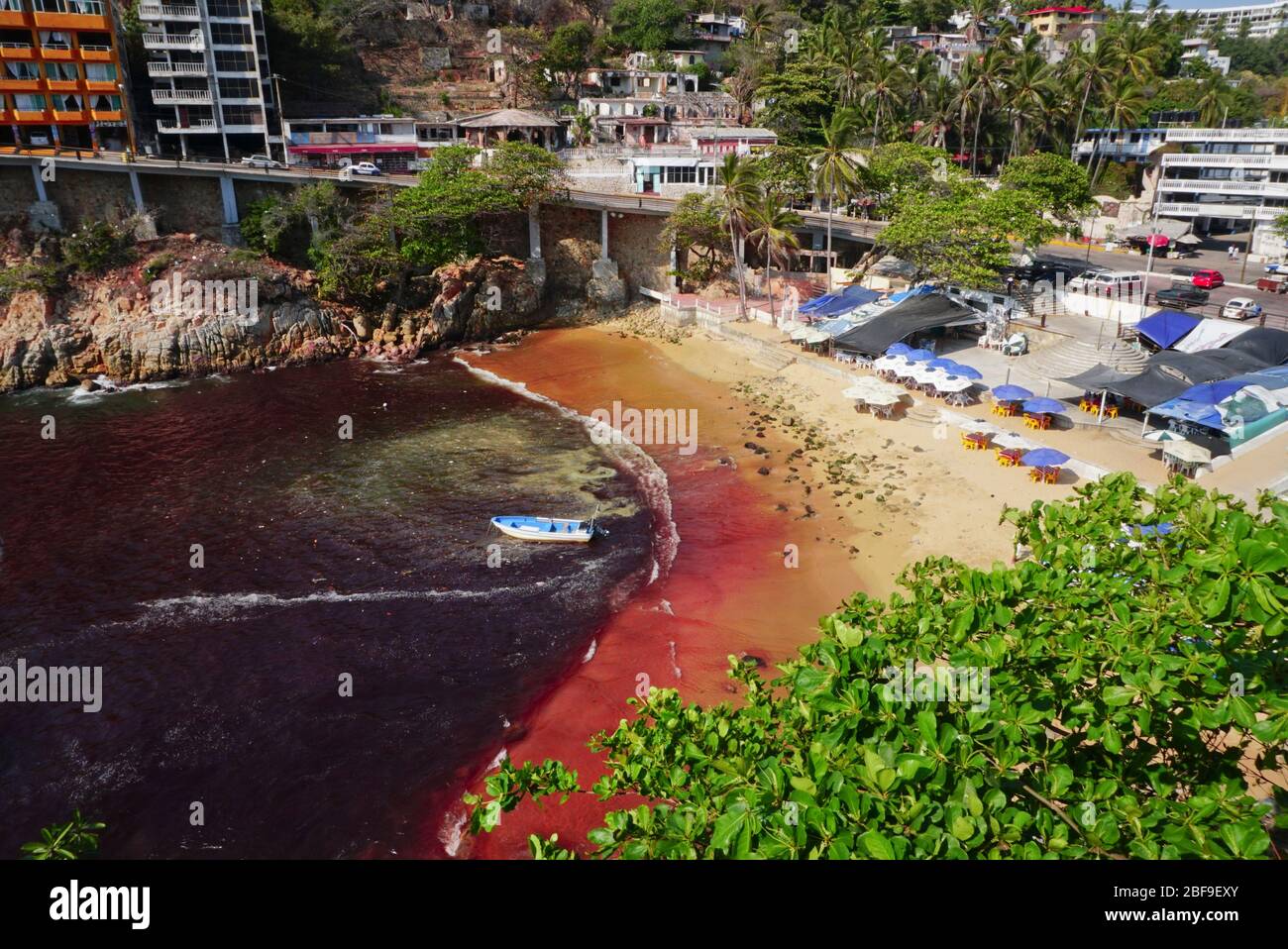 Red tide at Playa L'Angosta on the Pacific Ocean, Acapulco, Mexico. Stock Photohttps://www.alamy.com/image-license-details/?v=1https://www.alamy.com/red-tide-at-playa-langosta-on-the-pacific-ocean-acapulco-mexico-image353636499.html
Red tide at Playa L'Angosta on the Pacific Ocean, Acapulco, Mexico. Stock Photohttps://www.alamy.com/image-license-details/?v=1https://www.alamy.com/red-tide-at-playa-langosta-on-the-pacific-ocean-acapulco-mexico-image353636499.htmlRM2BF9EXY–Red tide at Playa L'Angosta on the Pacific Ocean, Acapulco, Mexico.
 Electric Blue Glow on Pacific Coast Waves or Red Tide. The electric blue glow in these pacific coast waves is caused by a dinoflagellate Stock Photohttps://www.alamy.com/image-license-details/?v=1https://www.alamy.com/electric-blue-glow-on-pacific-coast-waves-or-red-tide-the-electric-blue-glow-in-these-pacific-coast-waves-is-caused-by-a-dinoflagellate-image218769701.html
Electric Blue Glow on Pacific Coast Waves or Red Tide. The electric blue glow in these pacific coast waves is caused by a dinoflagellate Stock Photohttps://www.alamy.com/image-license-details/?v=1https://www.alamy.com/electric-blue-glow-on-pacific-coast-waves-or-red-tide-the-electric-blue-glow-in-these-pacific-coast-waves-is-caused-by-a-dinoflagellate-image218769701.htmlRFPKWPYH–Electric Blue Glow on Pacific Coast Waves or Red Tide. The electric blue glow in these pacific coast waves is caused by a dinoflagellate
 Noctiluca miliaris, sea sparkle (Noctiluca scintillans), dinoflagellates, Other animals, Animals, Pl'ton - group, one with ingested copepod, x12 Stock Photohttps://www.alamy.com/image-license-details/?v=1https://www.alamy.com/noctiluca-miliaris-sea-sparkle-noctiluca-scintillans-dinoflagellates-other-animals-animals-plton-group-one-with-ingested-copepod-x12-image543856857.html
Noctiluca miliaris, sea sparkle (Noctiluca scintillans), dinoflagellates, Other animals, Animals, Pl'ton - group, one with ingested copepod, x12 Stock Photohttps://www.alamy.com/image-license-details/?v=1https://www.alamy.com/noctiluca-miliaris-sea-sparkle-noctiluca-scintillans-dinoflagellates-other-animals-animals-plton-group-one-with-ingested-copepod-x12-image543856857.htmlRM2PGPPY5–Noctiluca miliaris, sea sparkle (Noctiluca scintillans), dinoflagellates, Other animals, Animals, Pl'ton - group, one with ingested copepod, x12
 Planktonic dinoflagellates from genus Ceratium collected from coastal surface waters of south-western Norway. Stock Photohttps://www.alamy.com/image-license-details/?v=1https://www.alamy.com/planktonic-dinoflagellates-from-genus-ceratium-collected-from-coastal-surface-waters-of-south-western-norway-image556833816.html
Planktonic dinoflagellates from genus Ceratium collected from coastal surface waters of south-western Norway. Stock Photohttps://www.alamy.com/image-license-details/?v=1https://www.alamy.com/planktonic-dinoflagellates-from-genus-ceratium-collected-from-coastal-surface-waters-of-south-western-norway-image556833816.htmlRM2R9WY60–Planktonic dinoflagellates from genus Ceratium collected from coastal surface waters of south-western Norway.
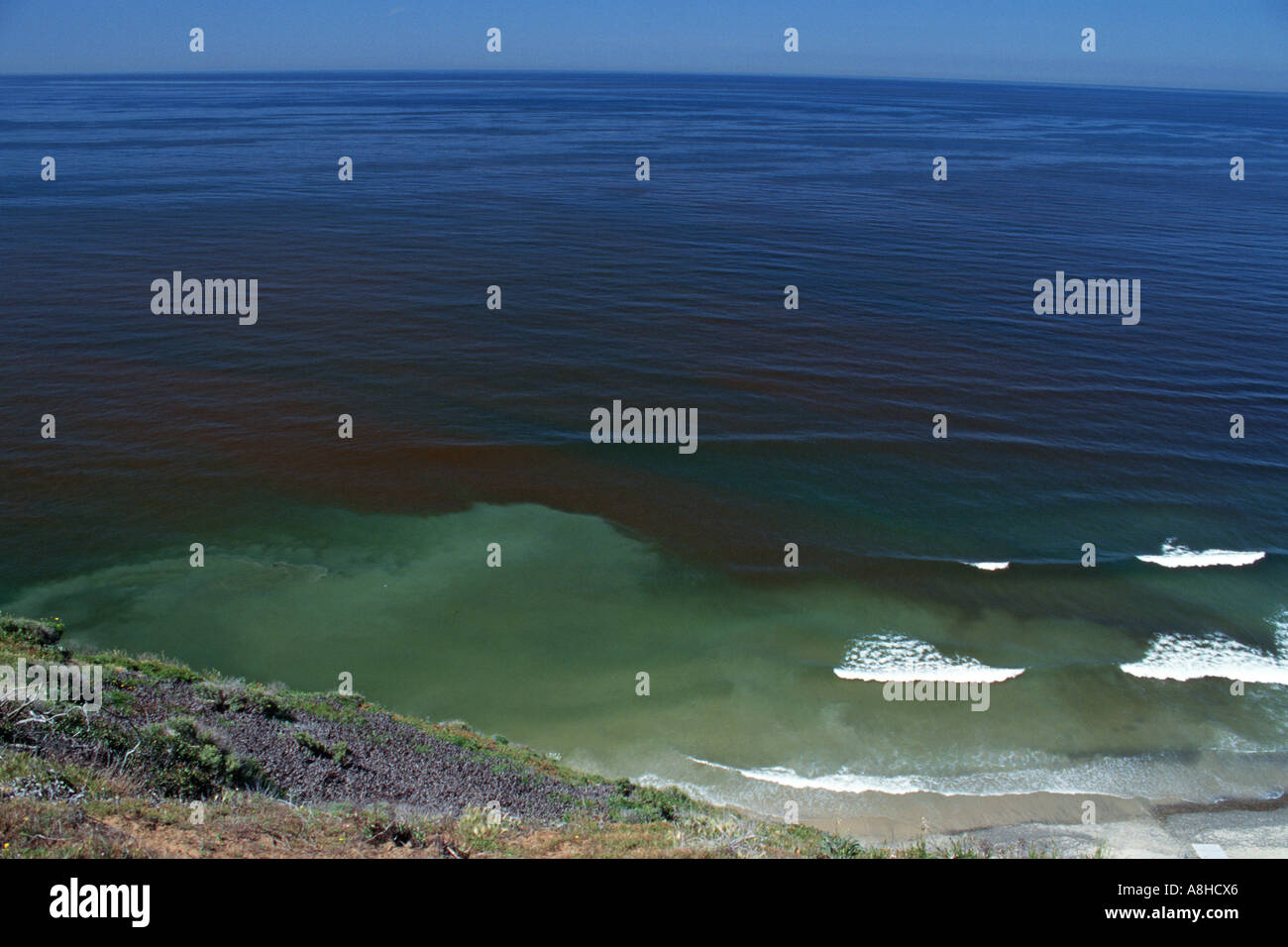 A sudden growth or bloom of the dinoflagellate Gonyaulax causes red tide Humans have died from eating infected clams and mussels California Stock Photohttps://www.alamy.com/image-license-details/?v=1https://www.alamy.com/a-sudden-growth-or-bloom-of-the-dinoflagellate-gonyaulax-causes-red-image6917797.html
A sudden growth or bloom of the dinoflagellate Gonyaulax causes red tide Humans have died from eating infected clams and mussels California Stock Photohttps://www.alamy.com/image-license-details/?v=1https://www.alamy.com/a-sudden-growth-or-bloom-of-the-dinoflagellate-gonyaulax-causes-red-image6917797.htmlRMA8HCX6–A sudden growth or bloom of the dinoflagellate Gonyaulax causes red tide Humans have died from eating infected clams and mussels California
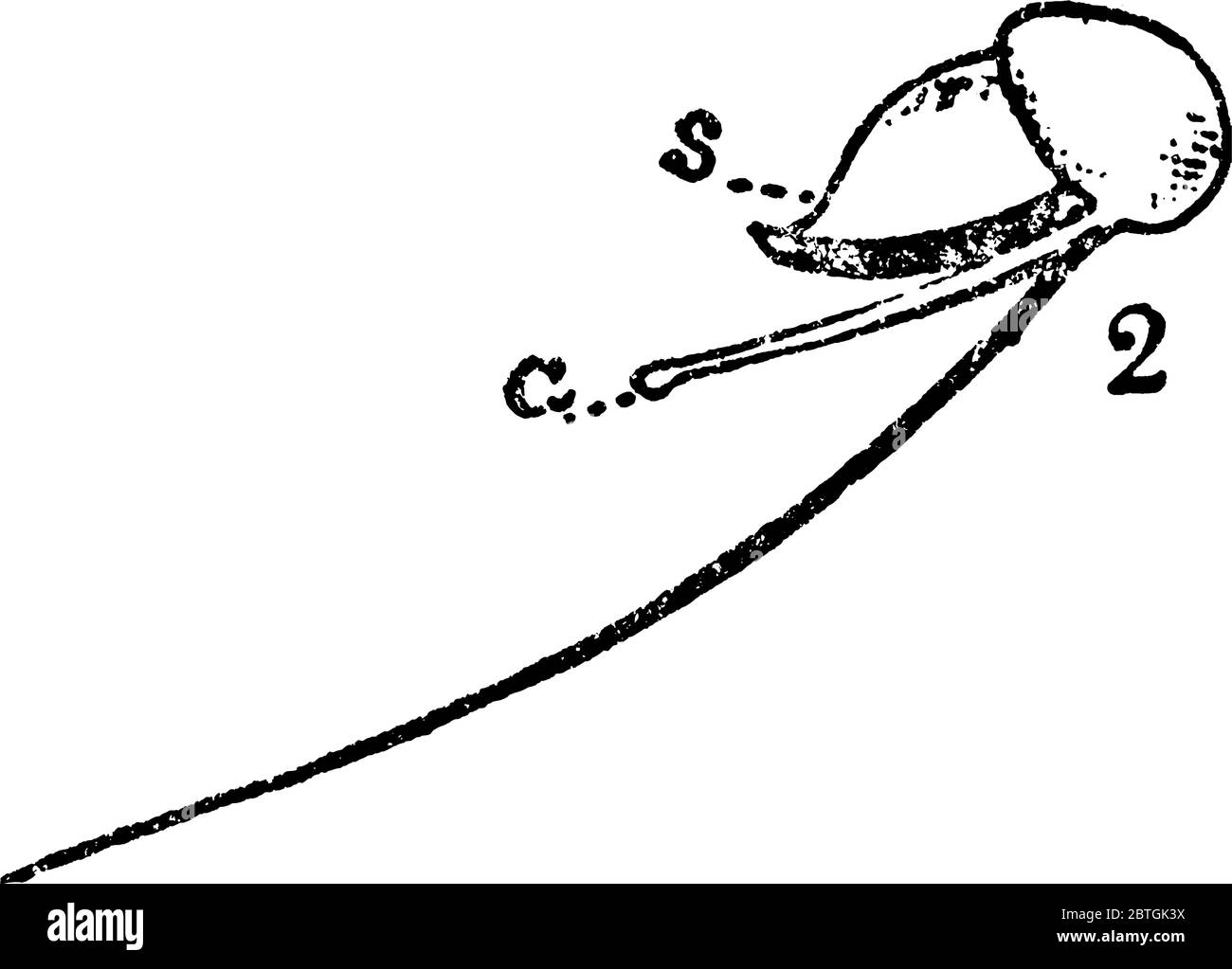 A free-living non-parasitic marine-dwelling species of dinoflagellate that exhibits bioluminescence, vintage line drawing or engraving illustration. Stock Vectorhttps://www.alamy.com/image-license-details/?v=1https://www.alamy.com/a-free-living-non-parasitic-marine-dwelling-species-of-dinoflagellate-that-exhibits-bioluminescence-vintage-line-drawing-or-engraving-illustration-image359325342.html
A free-living non-parasitic marine-dwelling species of dinoflagellate that exhibits bioluminescence, vintage line drawing or engraving illustration. Stock Vectorhttps://www.alamy.com/image-license-details/?v=1https://www.alamy.com/a-free-living-non-parasitic-marine-dwelling-species-of-dinoflagellate-that-exhibits-bioluminescence-vintage-line-drawing-or-engraving-illustration-image359325342.htmlRF2BTGK3X–A free-living non-parasitic marine-dwelling species of dinoflagellate that exhibits bioluminescence, vintage line drawing or engraving illustration.
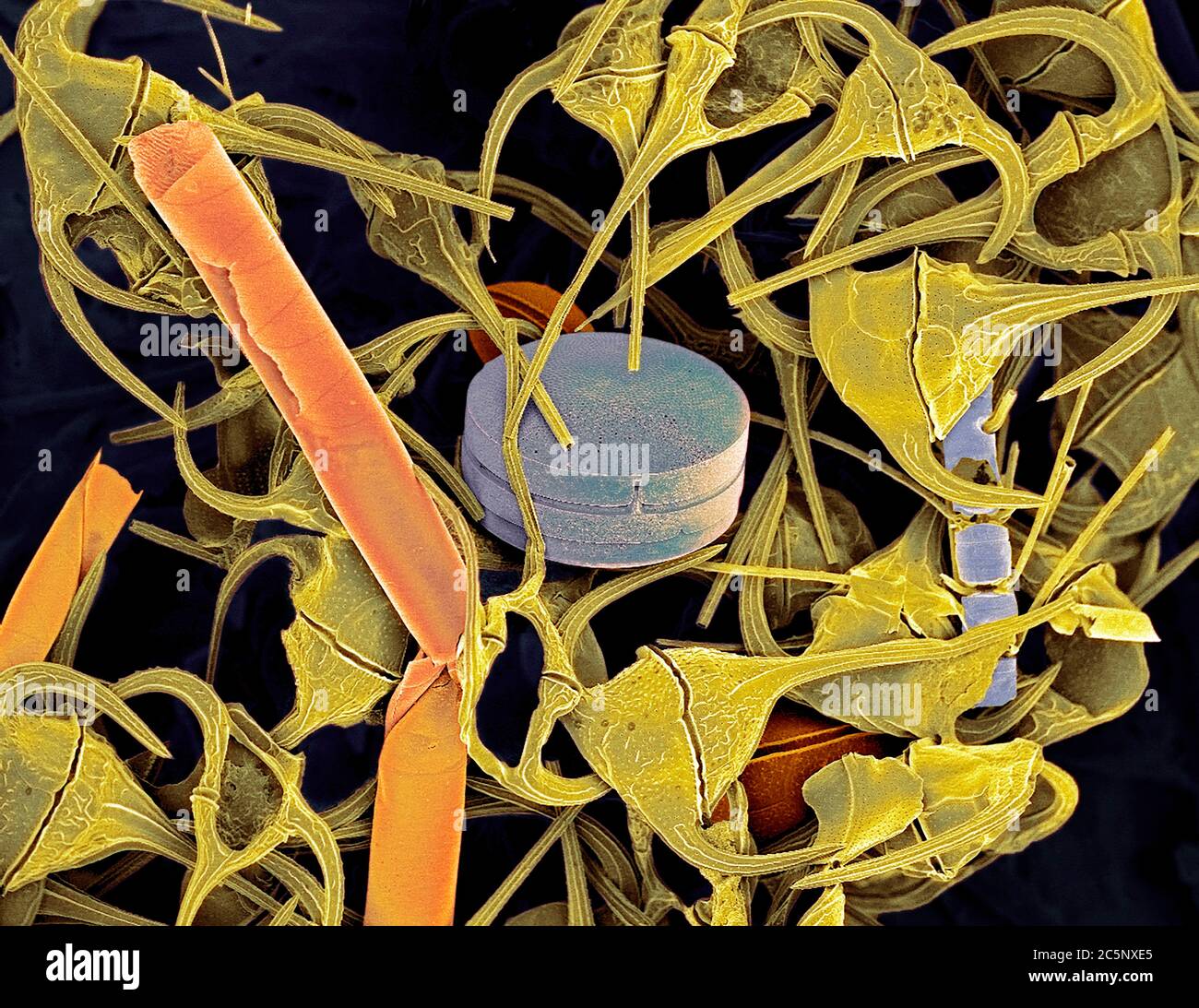 Plankton. Coloured scanning electron micrograph (SEM) of plankton containing mainly Ceratium dinoflagellates. A few diatoms are also present. Dinoflagellates are unicellular protozoans. About 90% are found in marine environments as plankton. They range in size from 2 millimetres to less than a hundredth of a milimetre across. These specimens were found off the coast of Scotland. Magnification: x200 when printed at 10 centimetres wide. Stock Photohttps://www.alamy.com/image-license-details/?v=1https://www.alamy.com/plankton-coloured-scanning-electron-micrograph-sem-of-plankton-containing-mainly-ceratium-dinoflagellates-a-few-diatoms-are-also-present-dinoflagellates-are-unicellular-protozoans-about-90-are-found-in-marine-environments-as-plankton-they-range-in-size-from-2-millimetres-to-less-than-a-hundredth-of-a-milimetre-across-these-specimens-were-found-off-the-coast-of-scotland-magnification-x200-when-printed-at-10-centimetres-wide-image364972781.html
Plankton. Coloured scanning electron micrograph (SEM) of plankton containing mainly Ceratium dinoflagellates. A few diatoms are also present. Dinoflagellates are unicellular protozoans. About 90% are found in marine environments as plankton. They range in size from 2 millimetres to less than a hundredth of a milimetre across. These specimens were found off the coast of Scotland. Magnification: x200 when printed at 10 centimetres wide. Stock Photohttps://www.alamy.com/image-license-details/?v=1https://www.alamy.com/plankton-coloured-scanning-electron-micrograph-sem-of-plankton-containing-mainly-ceratium-dinoflagellates-a-few-diatoms-are-also-present-dinoflagellates-are-unicellular-protozoans-about-90-are-found-in-marine-environments-as-plankton-they-range-in-size-from-2-millimetres-to-less-than-a-hundredth-of-a-milimetre-across-these-specimens-were-found-off-the-coast-of-scotland-magnification-x200-when-printed-at-10-centimetres-wide-image364972781.htmlRF2C5NXE5–Plankton. Coloured scanning electron micrograph (SEM) of plankton containing mainly Ceratium dinoflagellates. A few diatoms are also present. Dinoflagellates are unicellular protozoans. About 90% are found in marine environments as plankton. They range in size from 2 millimetres to less than a hundredth of a milimetre across. These specimens were found off the coast of Scotland. Magnification: x200 when printed at 10 centimetres wide.
 A free-living non-parasitic marine-dwelling species of dinoflagellate that exhibits bioluminescence, vintage line drawing or engraving illustration. Stock Vectorhttps://www.alamy.com/image-license-details/?v=1https://www.alamy.com/a-free-living-non-parasitic-marine-dwelling-species-of-dinoflagellate-that-exhibits-bioluminescence-vintage-line-drawing-or-engraving-illustration-image359323050.html
A free-living non-parasitic marine-dwelling species of dinoflagellate that exhibits bioluminescence, vintage line drawing or engraving illustration. Stock Vectorhttps://www.alamy.com/image-license-details/?v=1https://www.alamy.com/a-free-living-non-parasitic-marine-dwelling-species-of-dinoflagellate-that-exhibits-bioluminescence-vintage-line-drawing-or-engraving-illustration-image359323050.htmlRF2BTGG62–A free-living non-parasitic marine-dwelling species of dinoflagellate that exhibits bioluminescence, vintage line drawing or engraving illustration.
